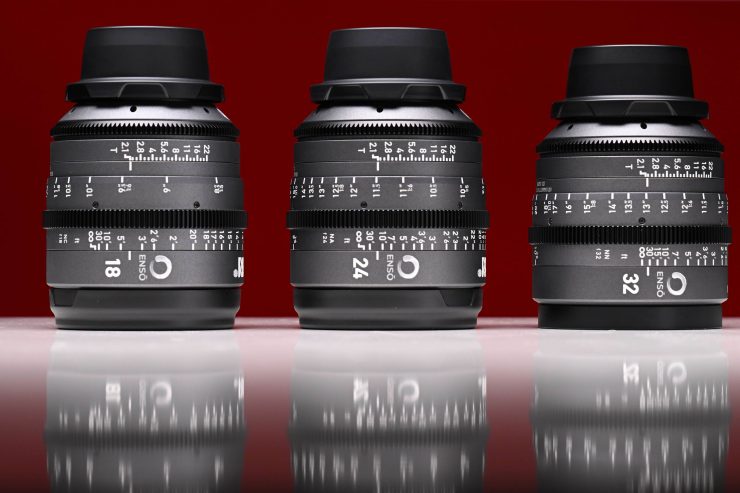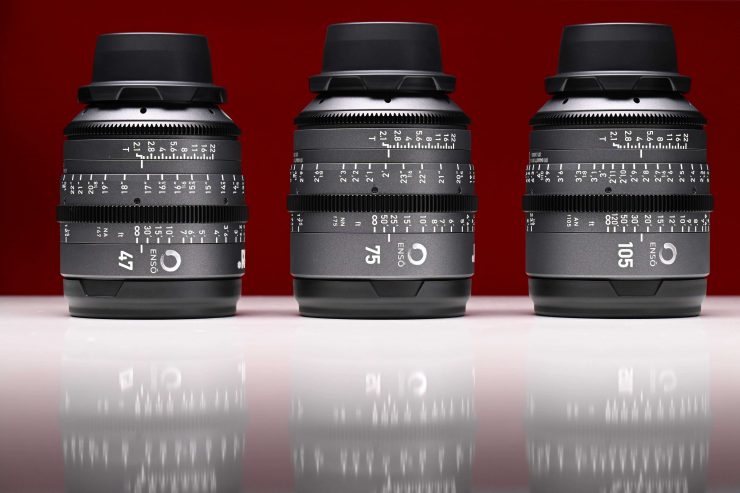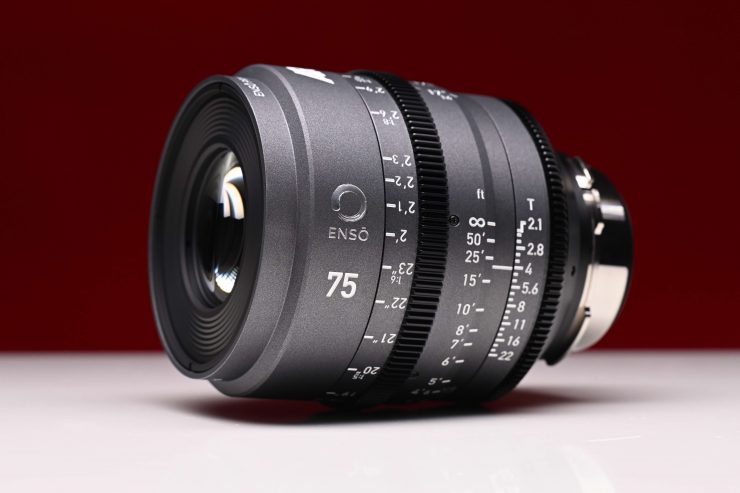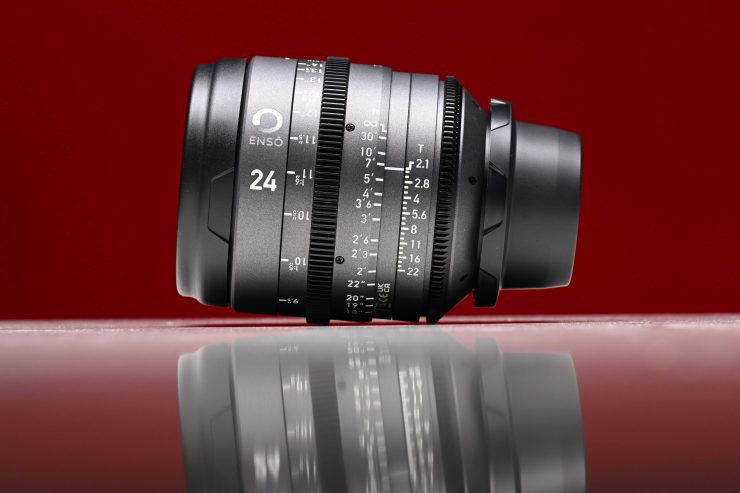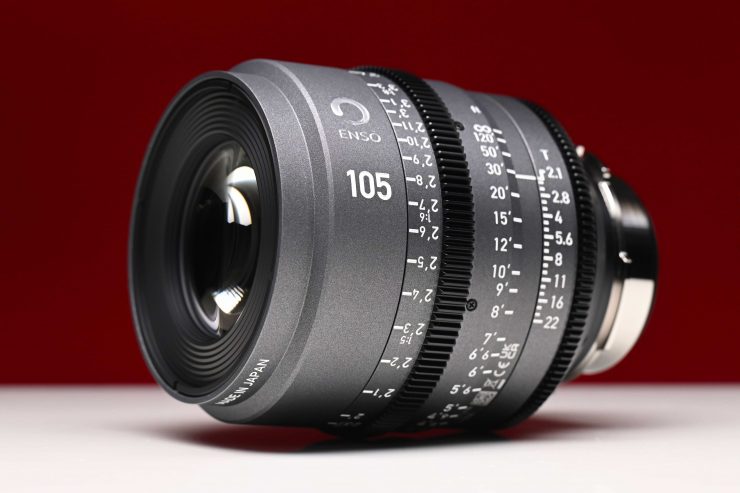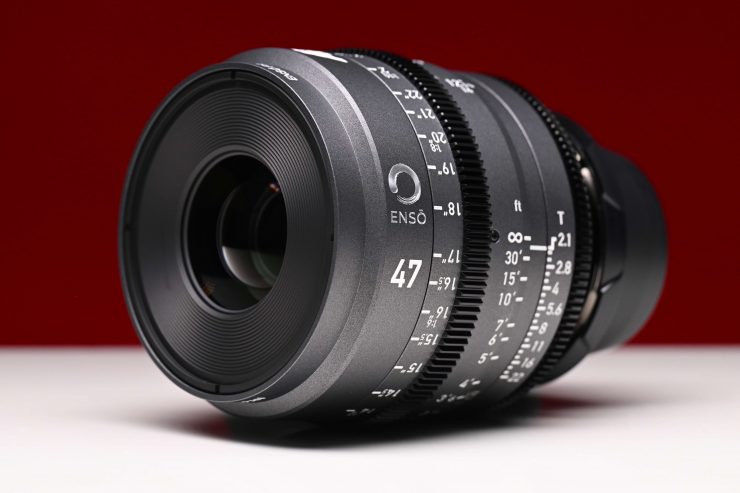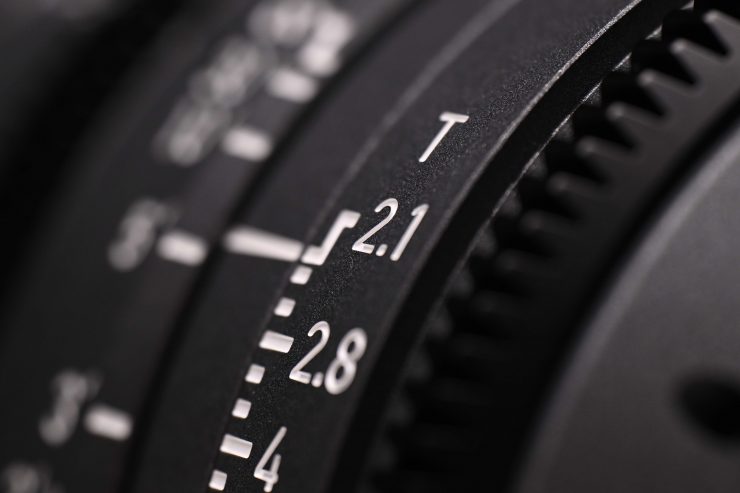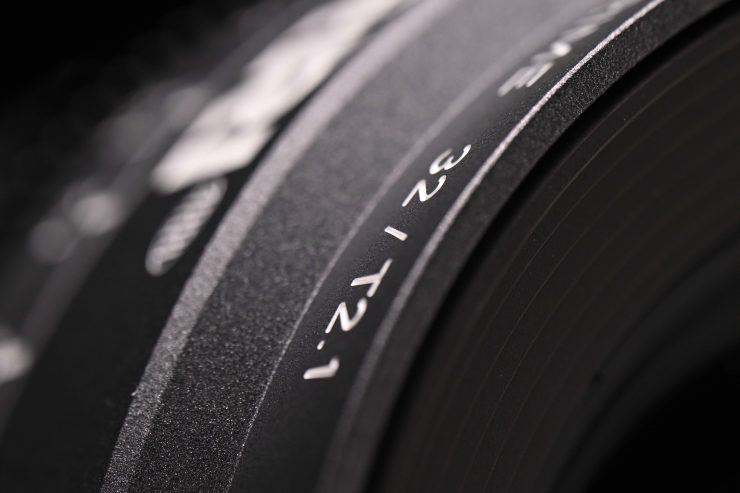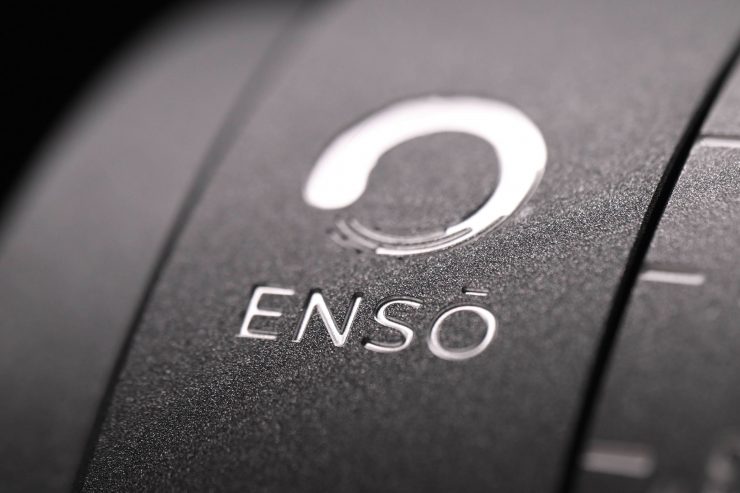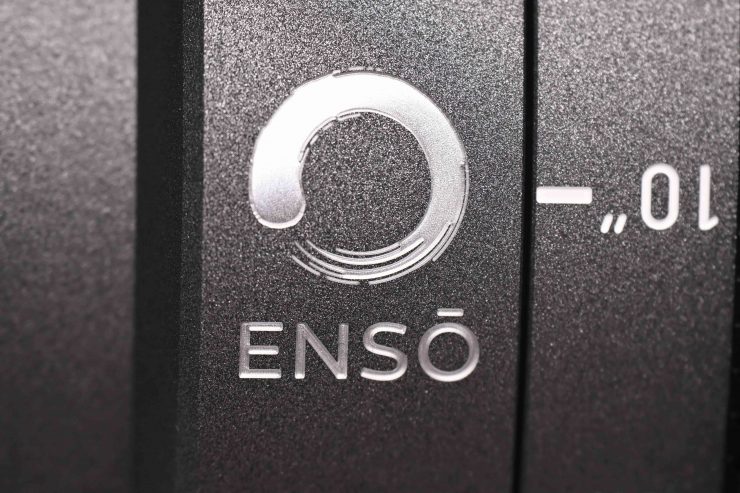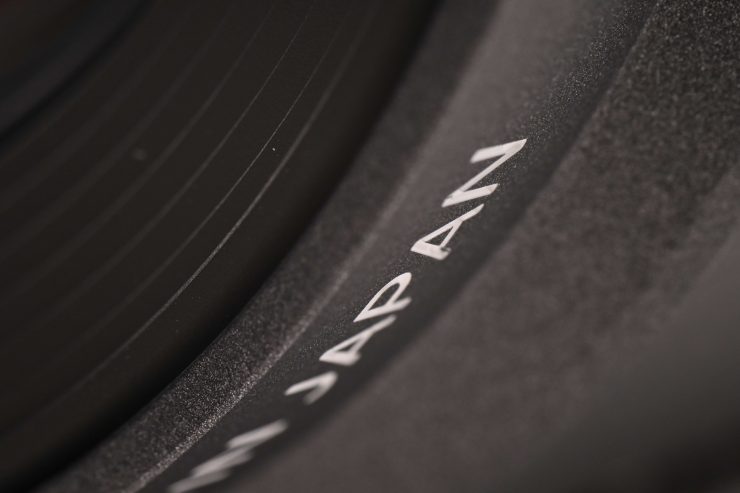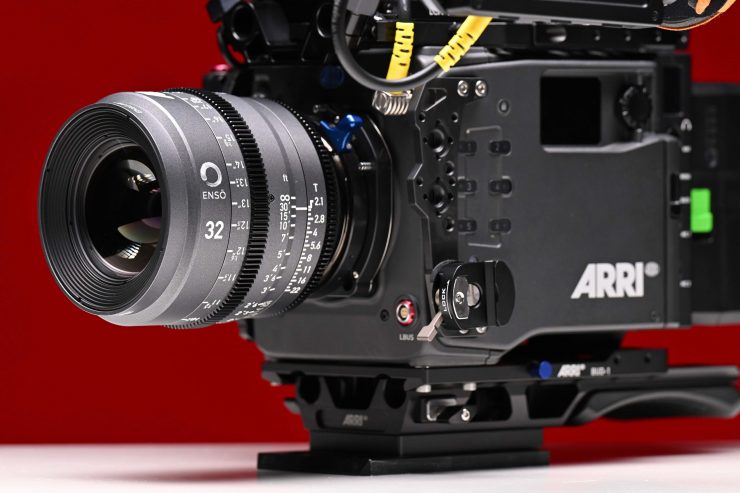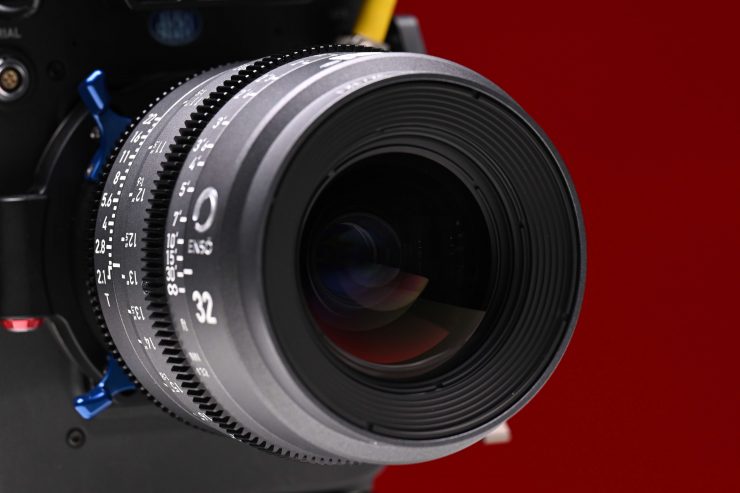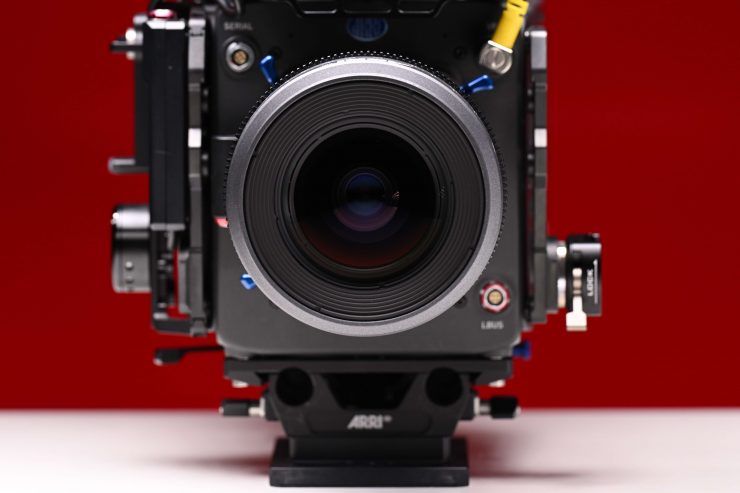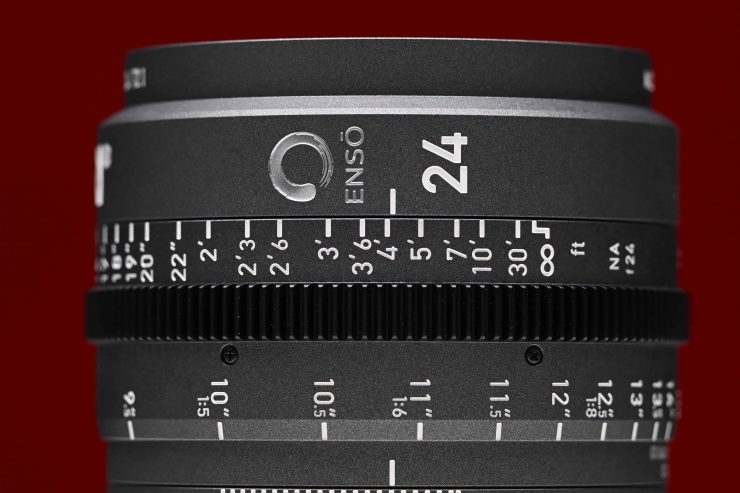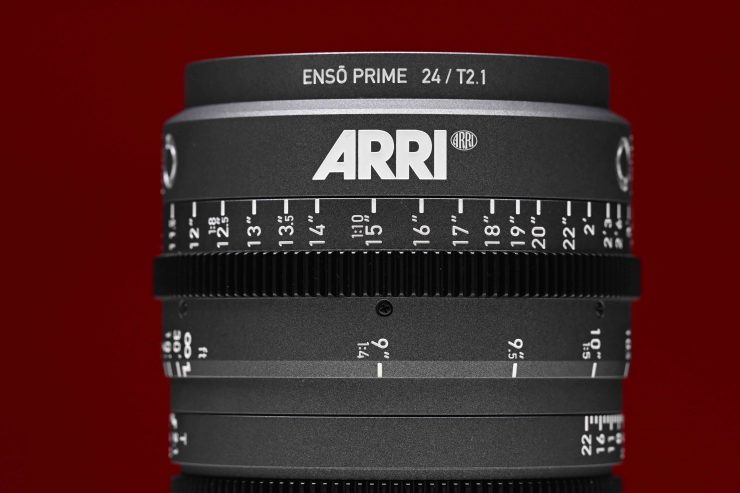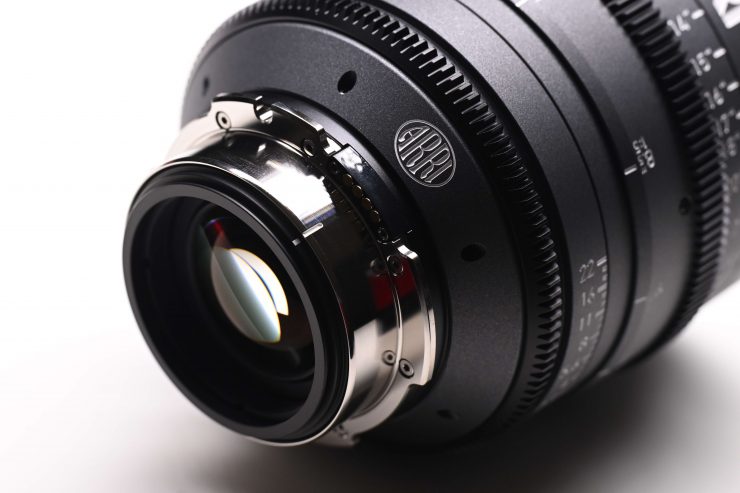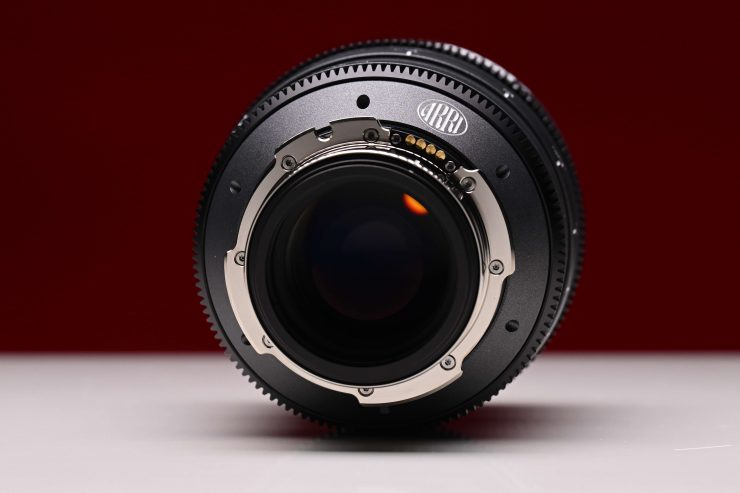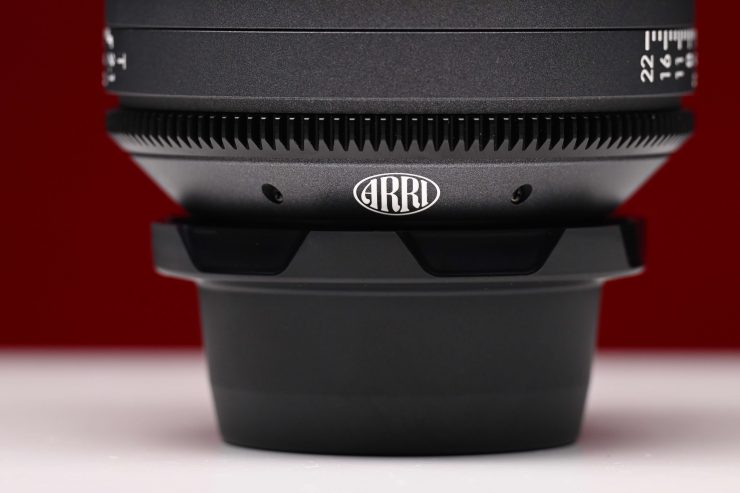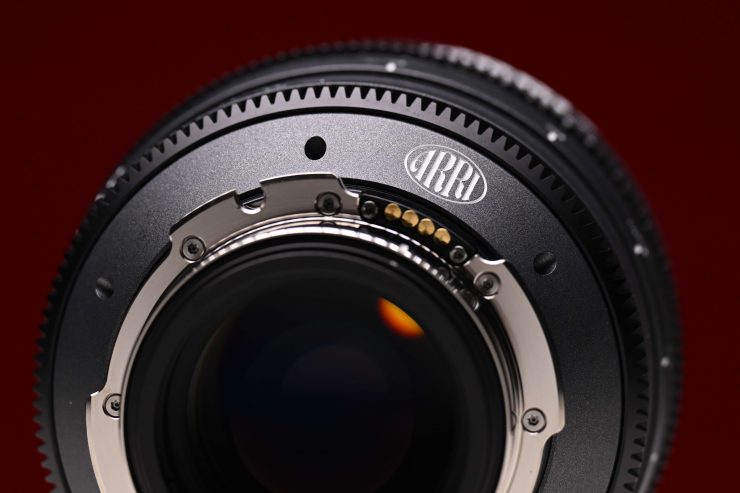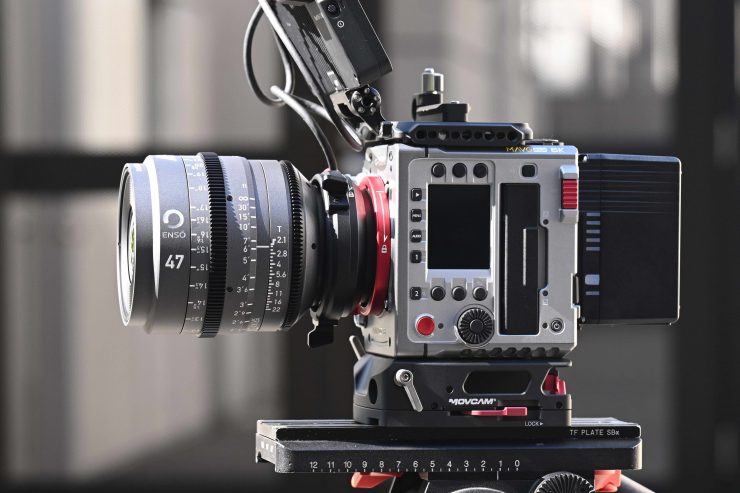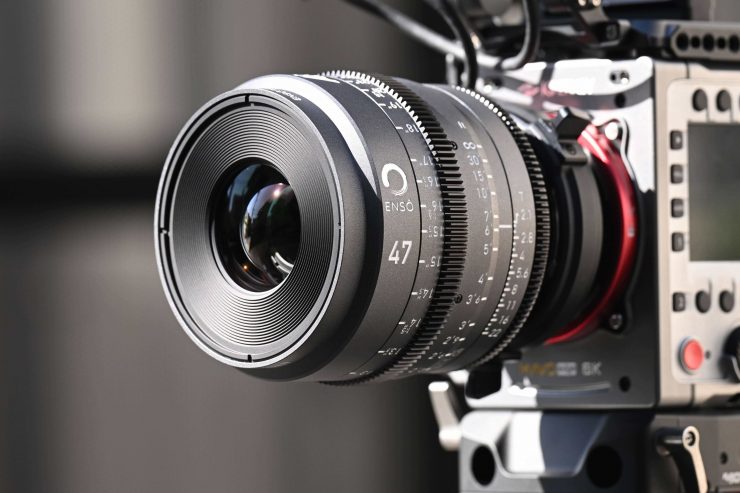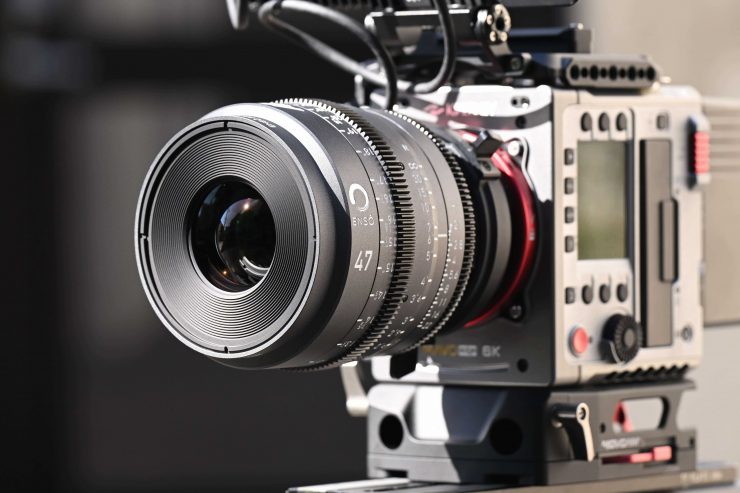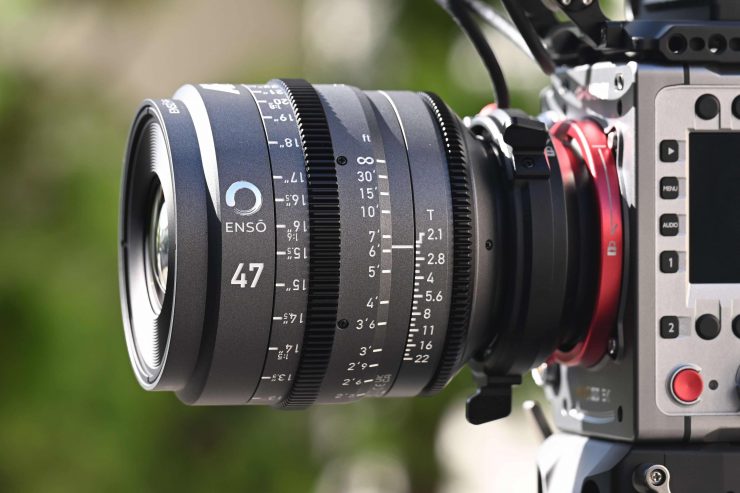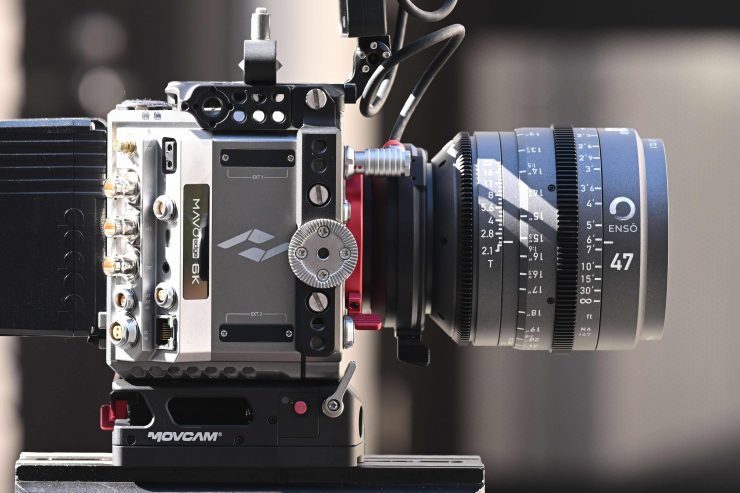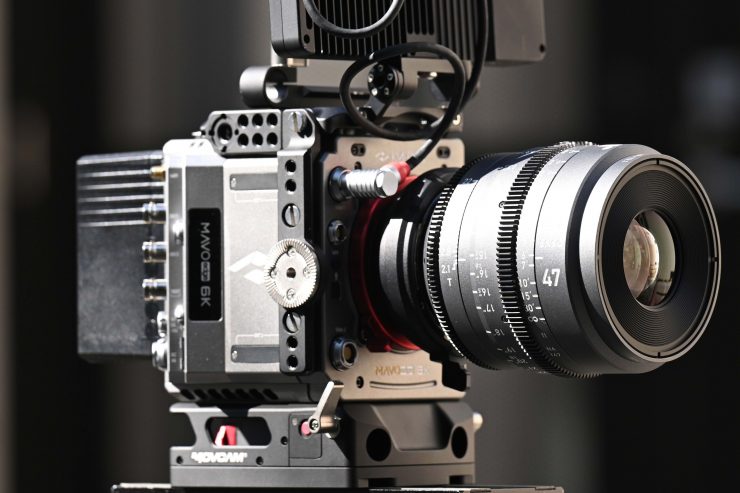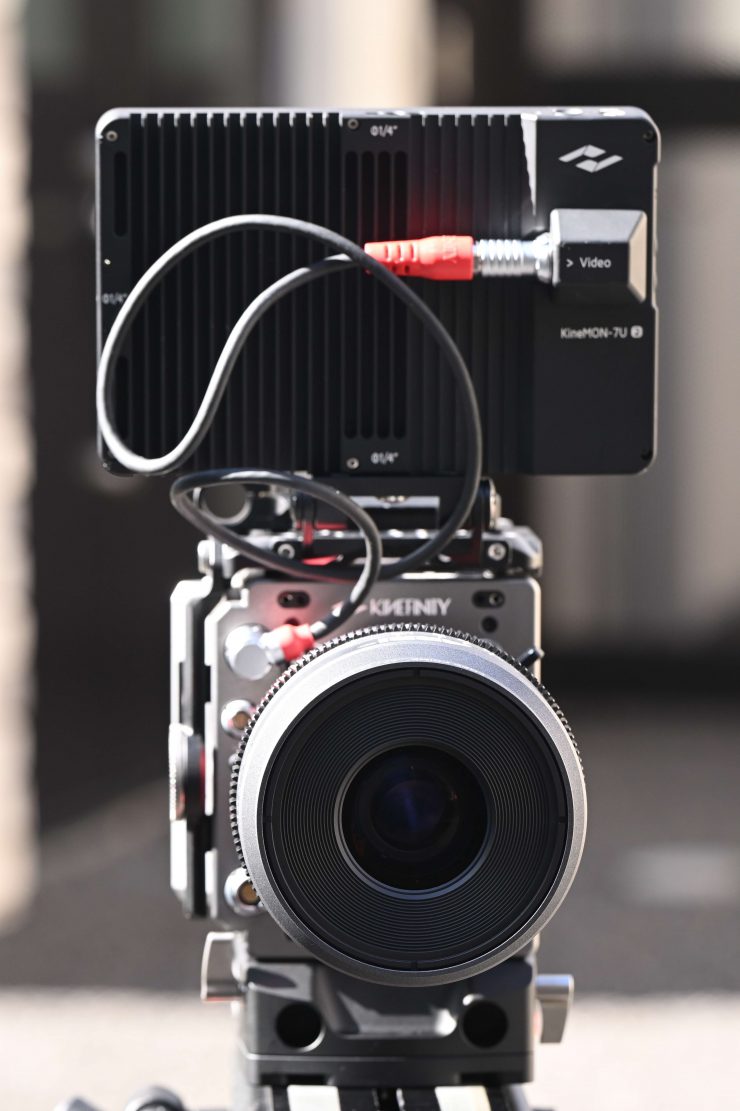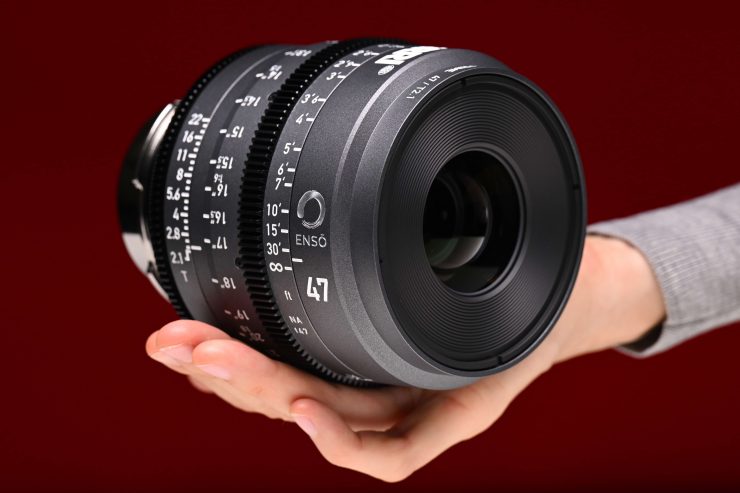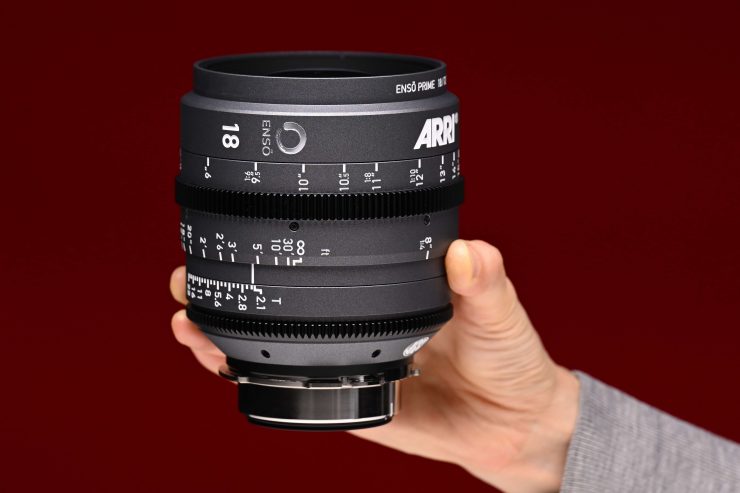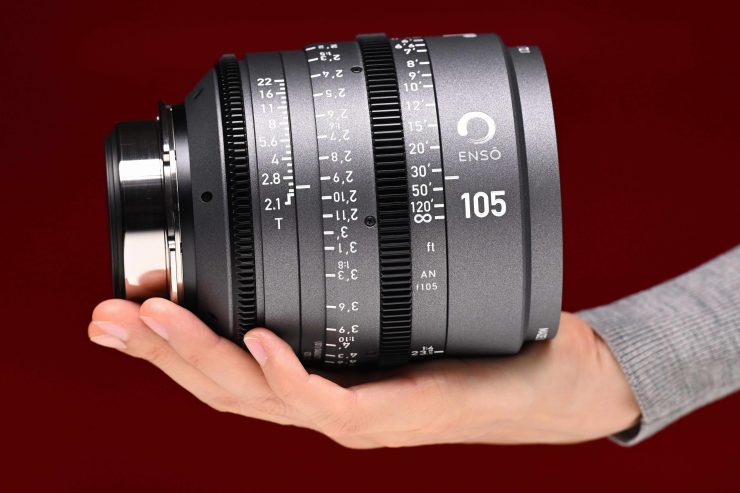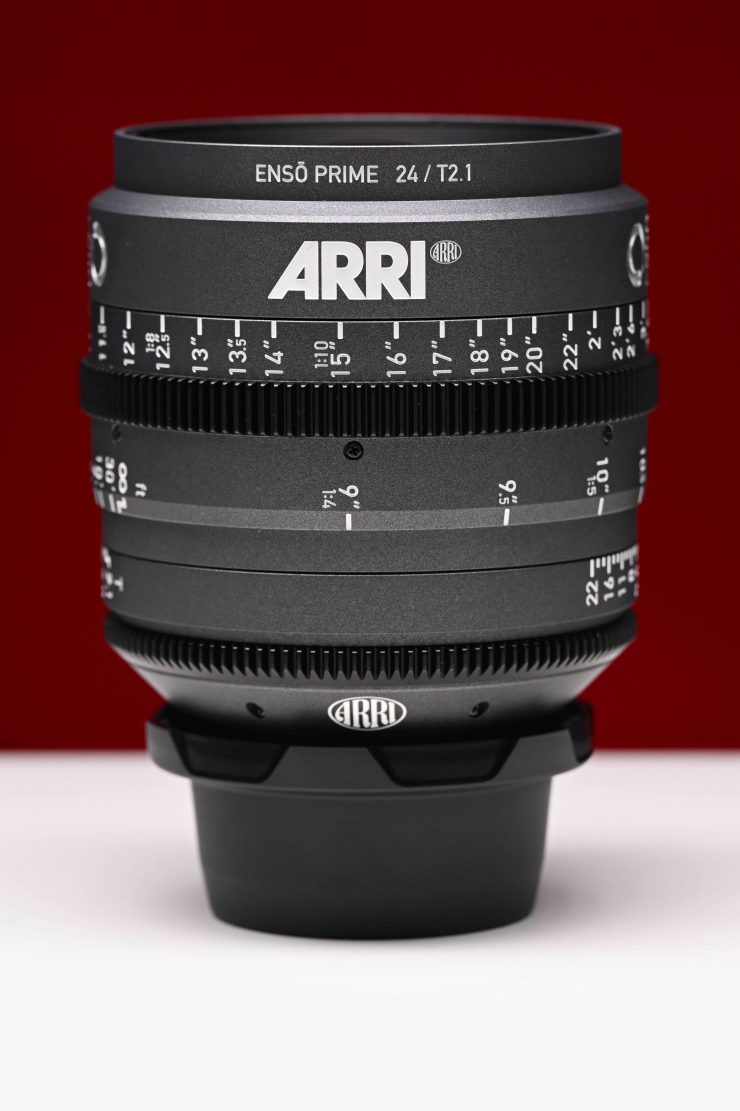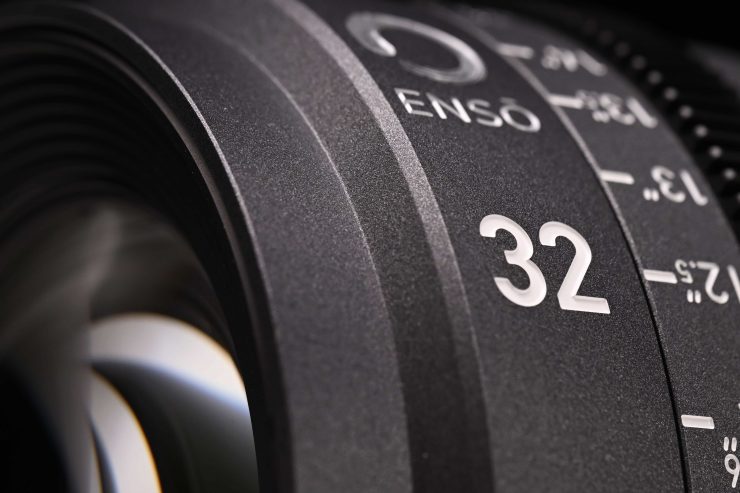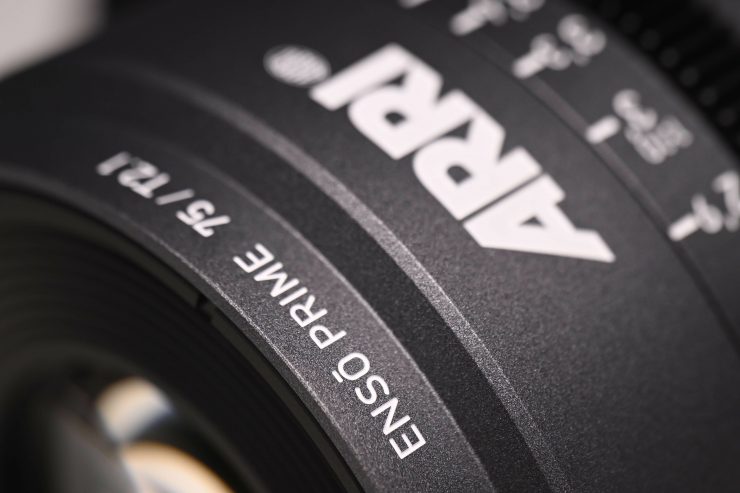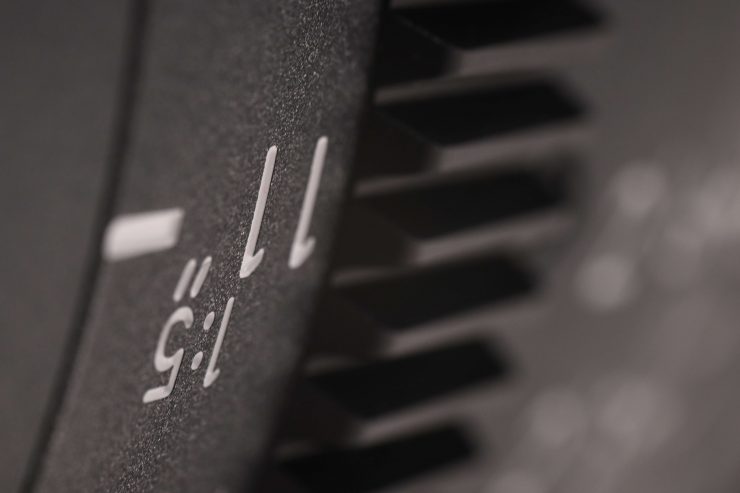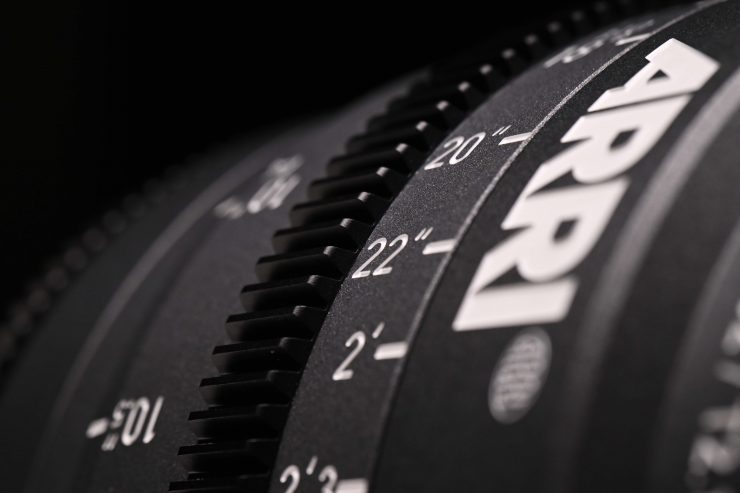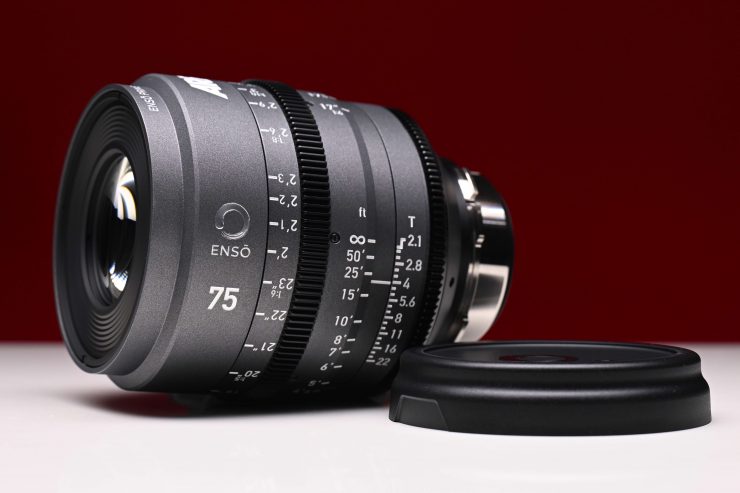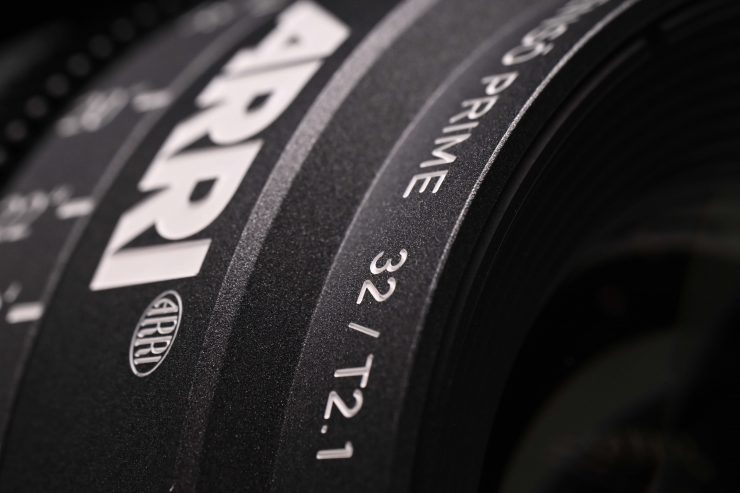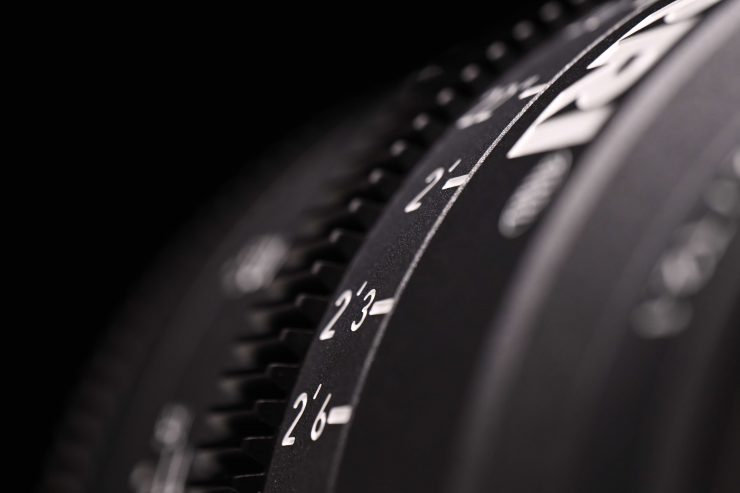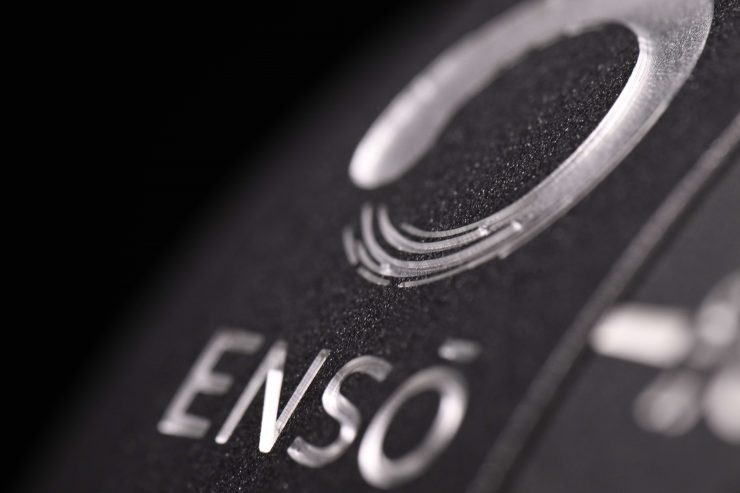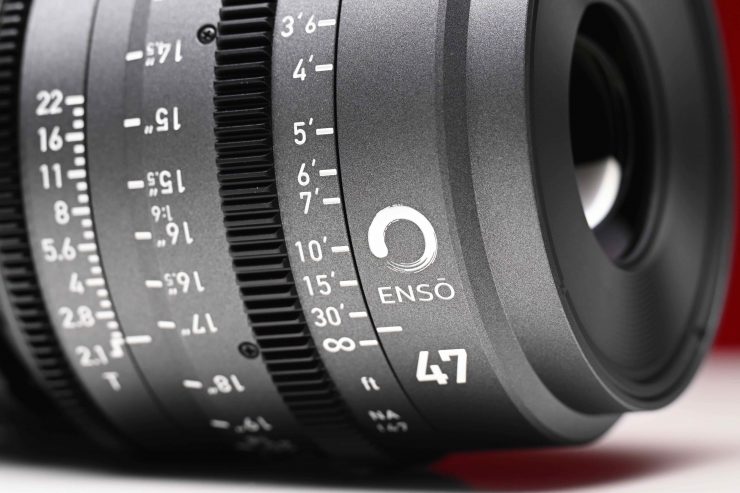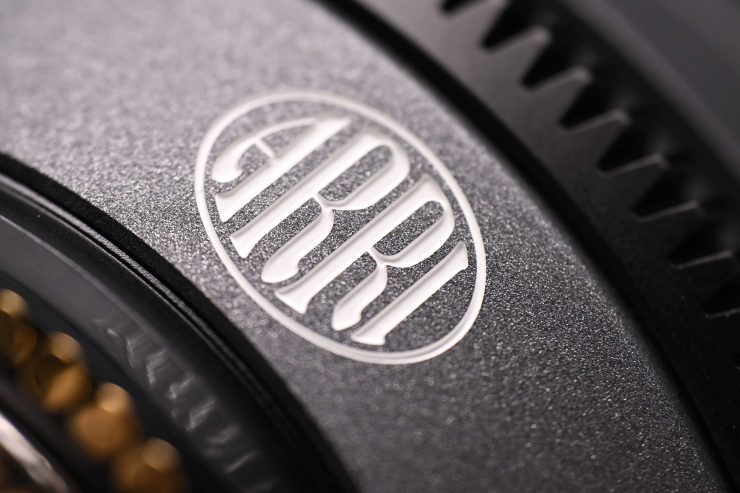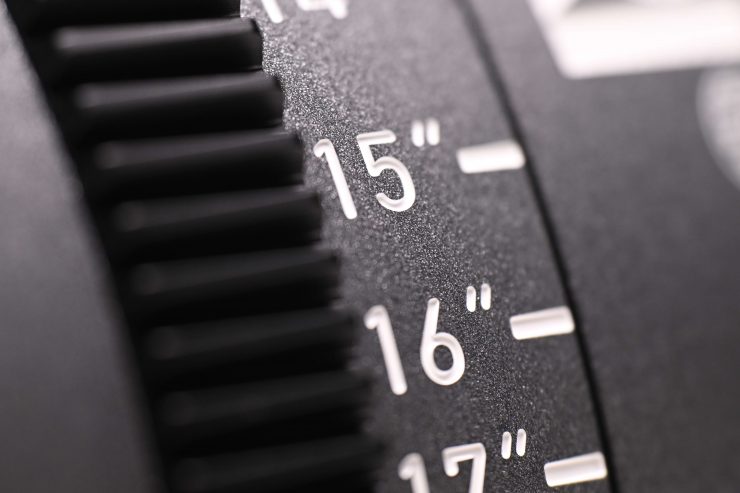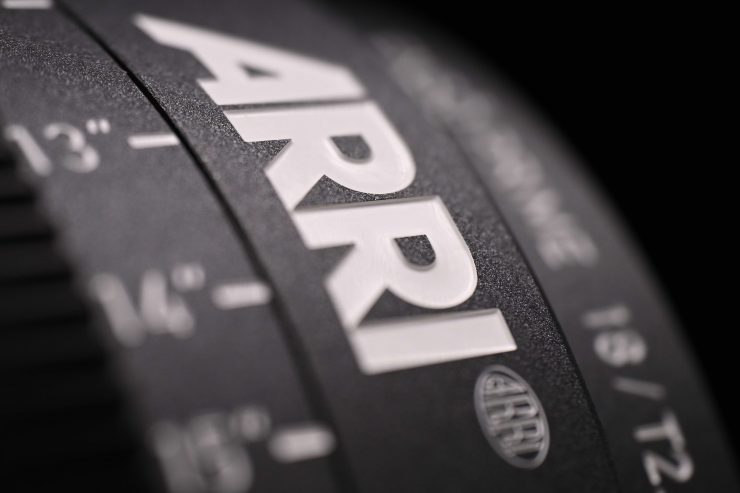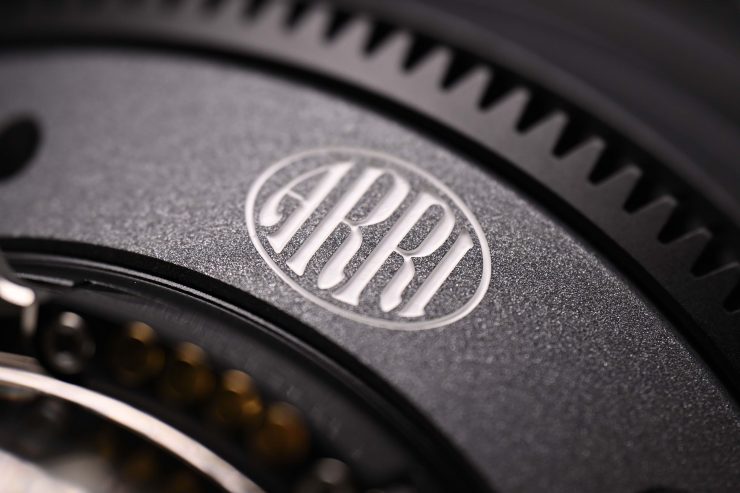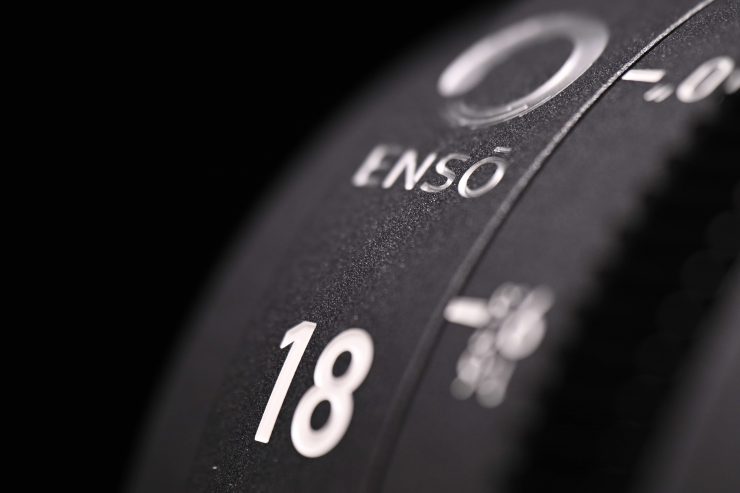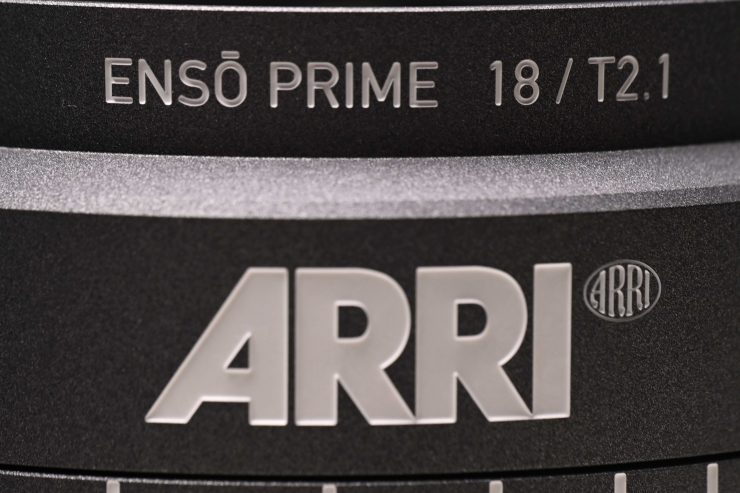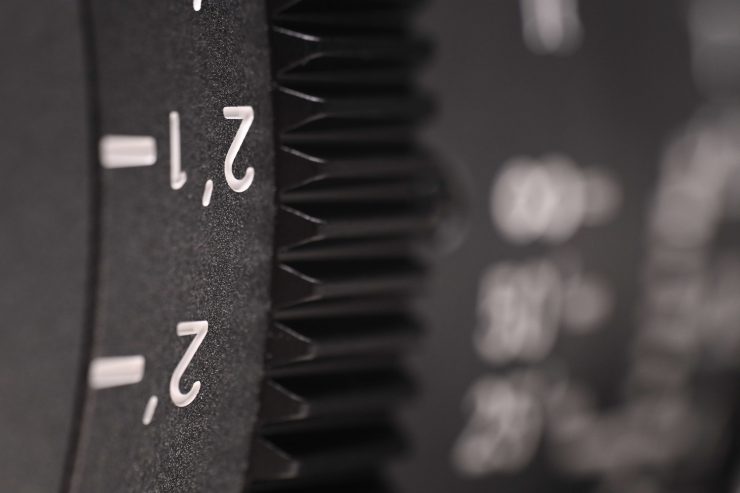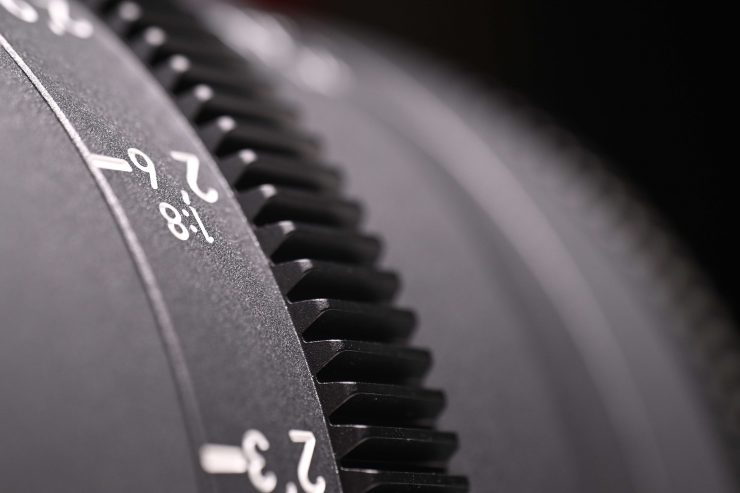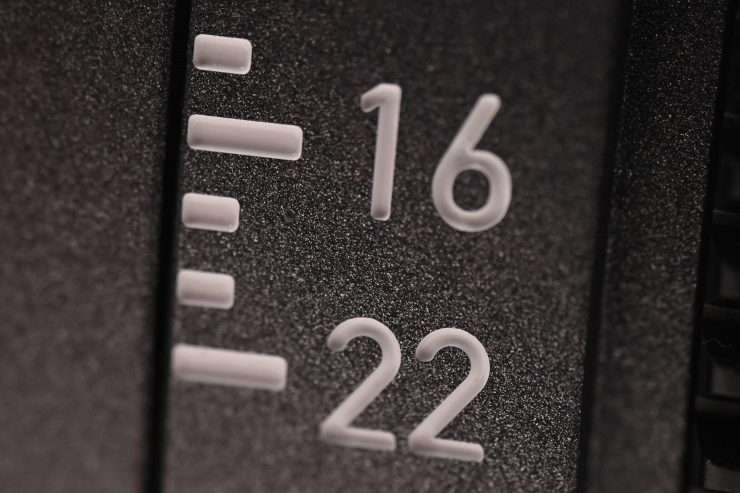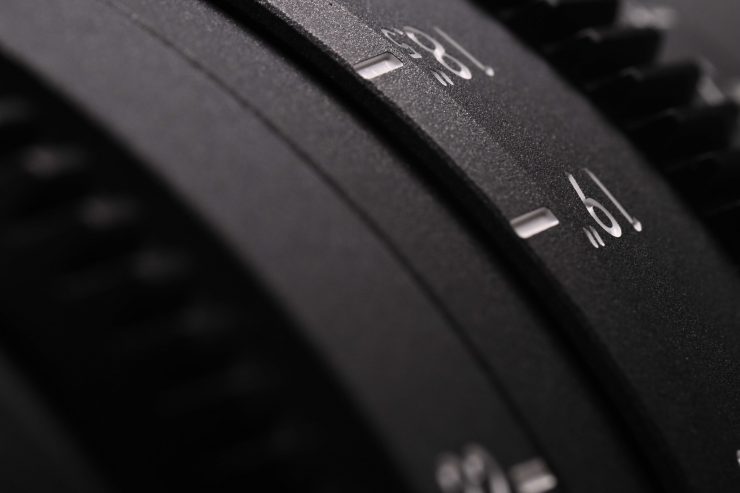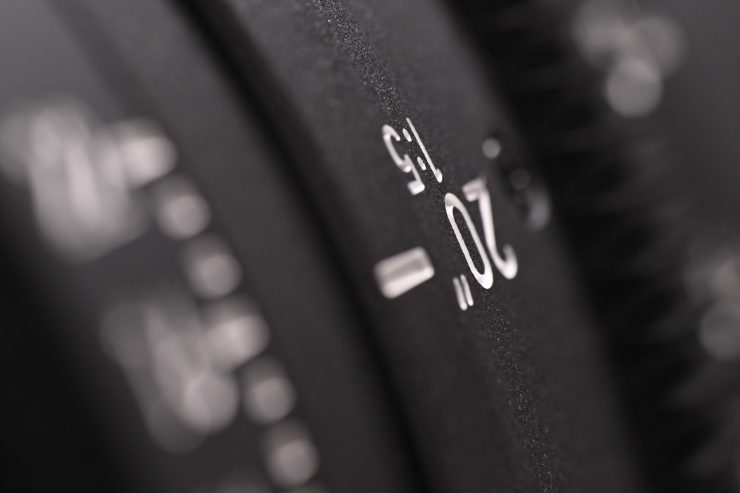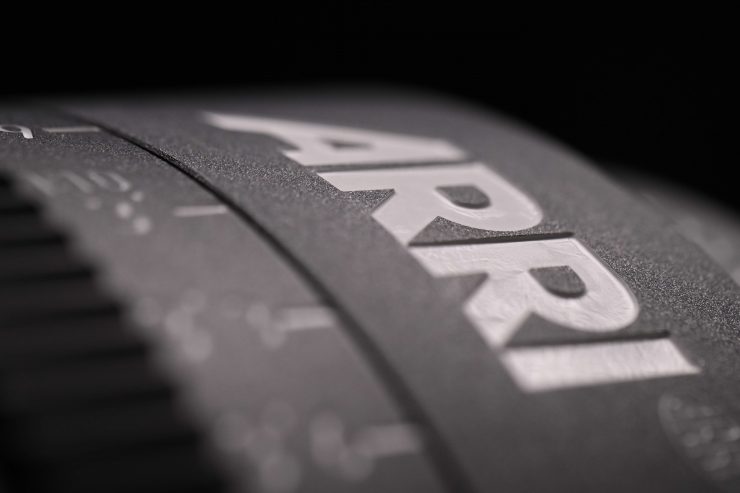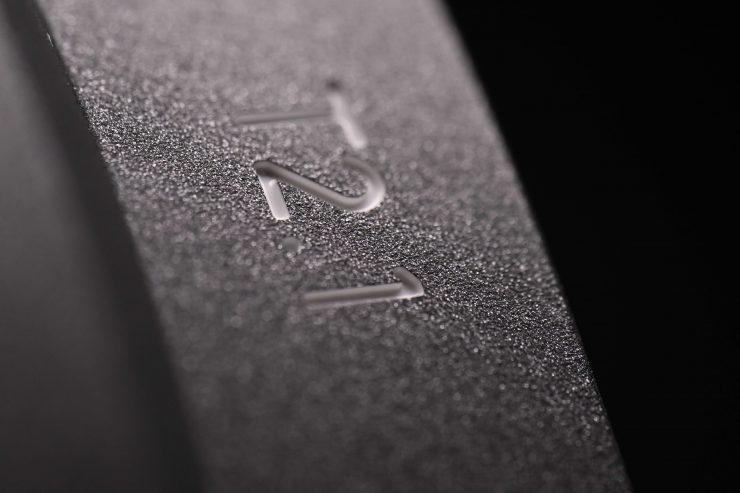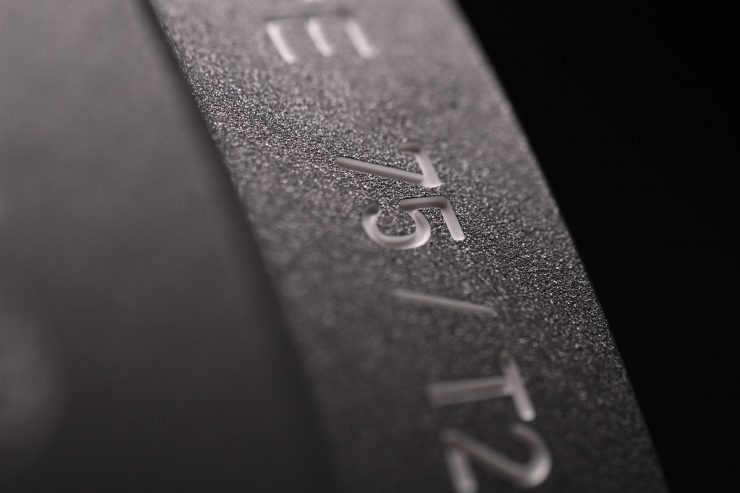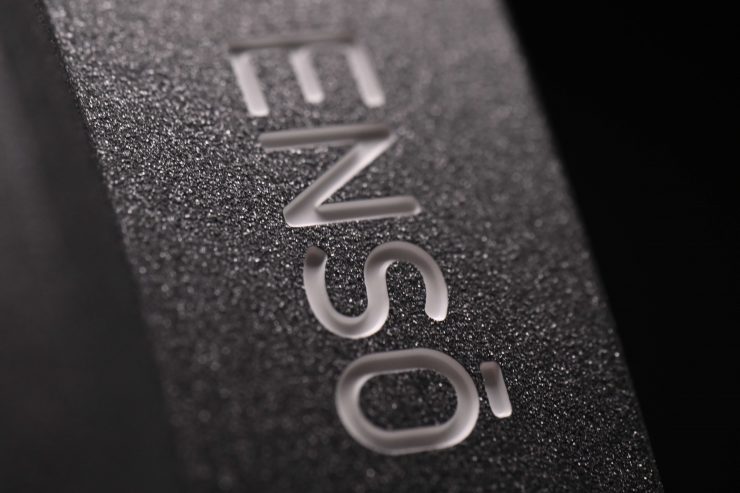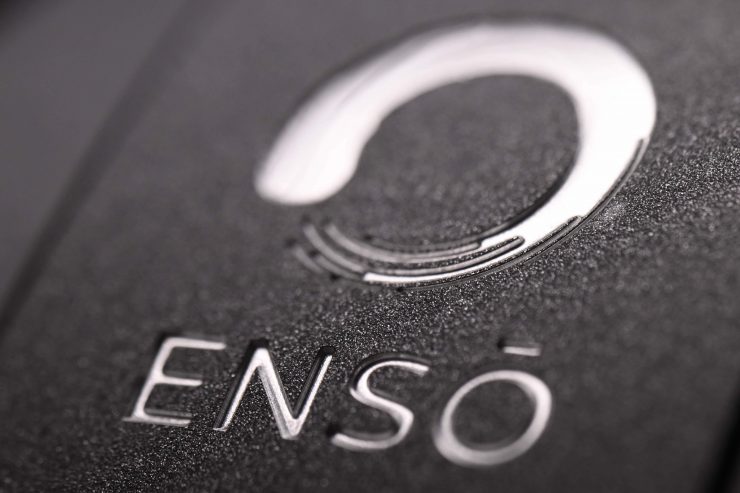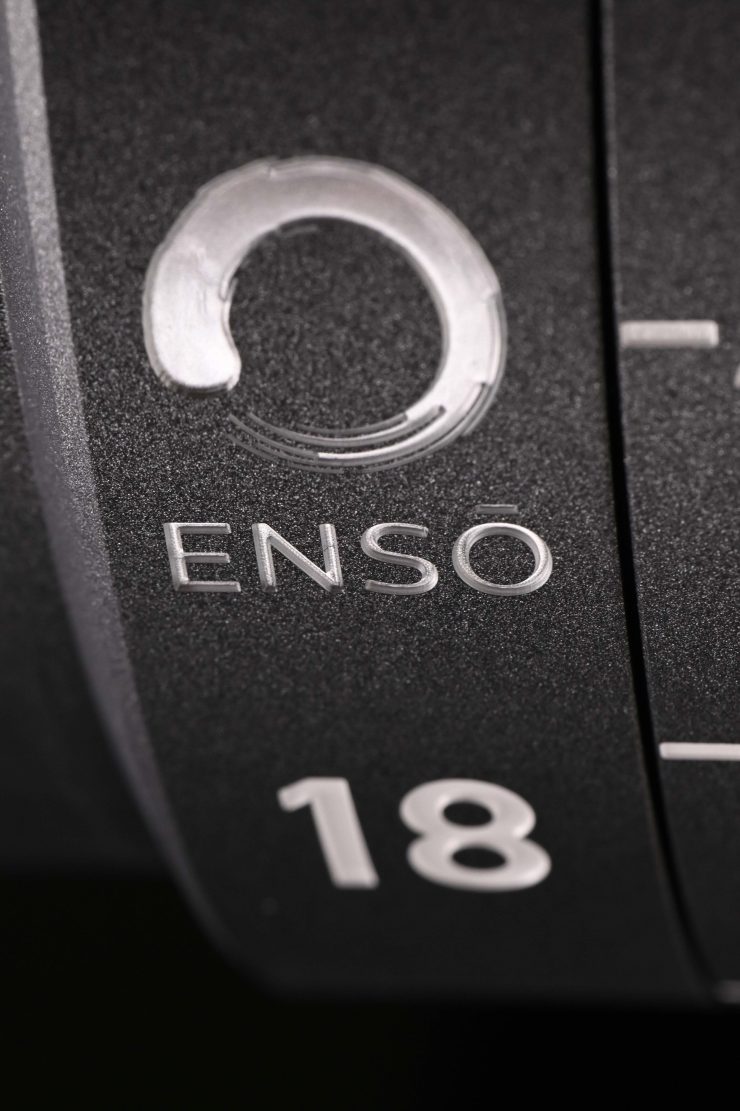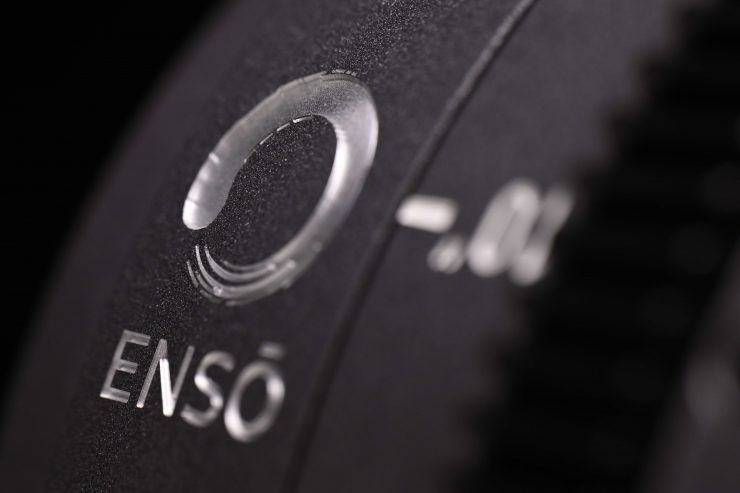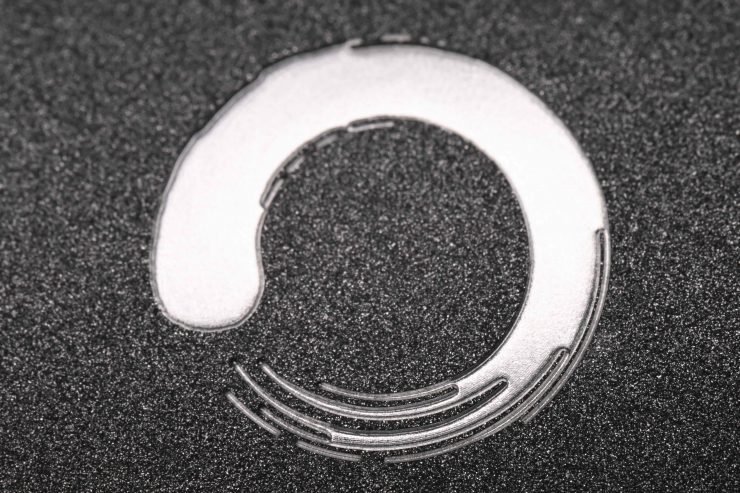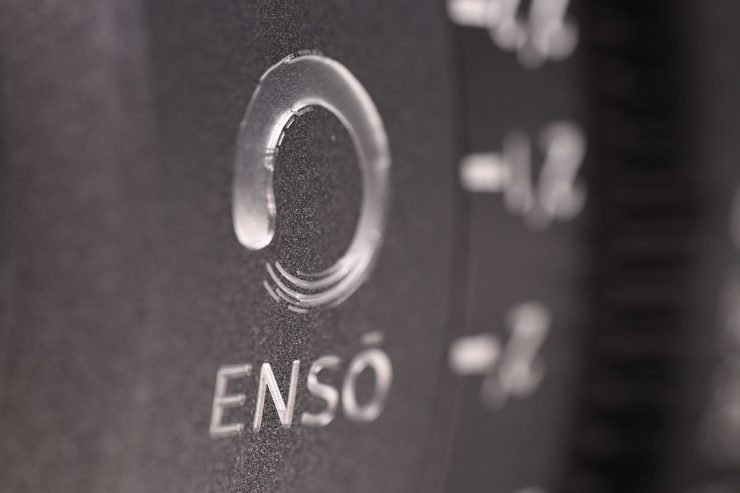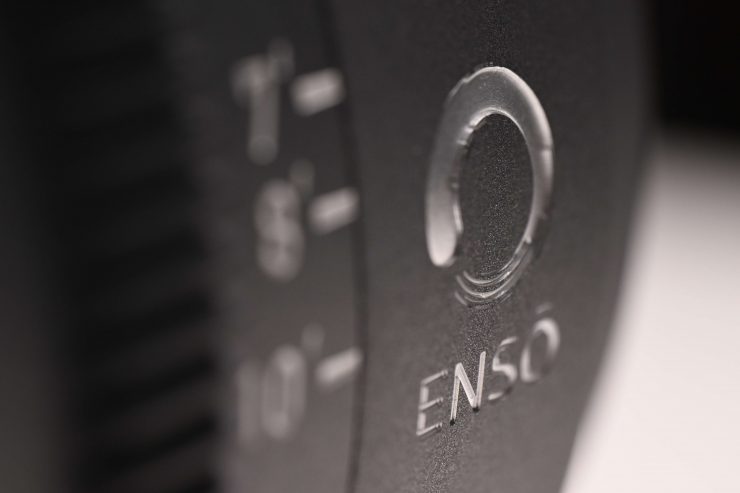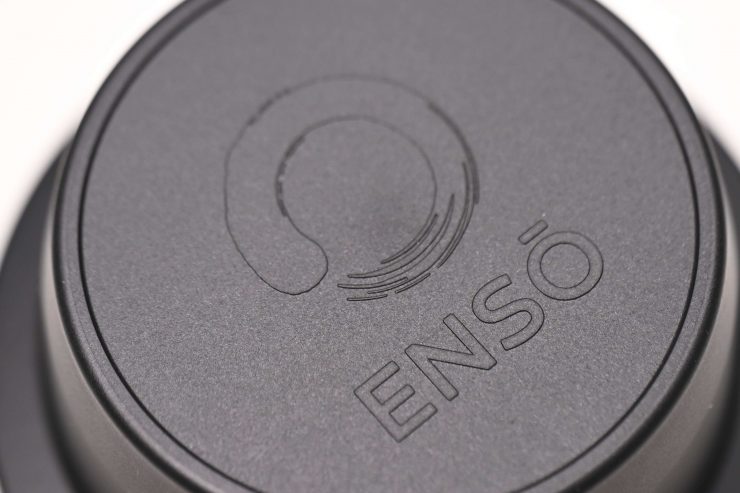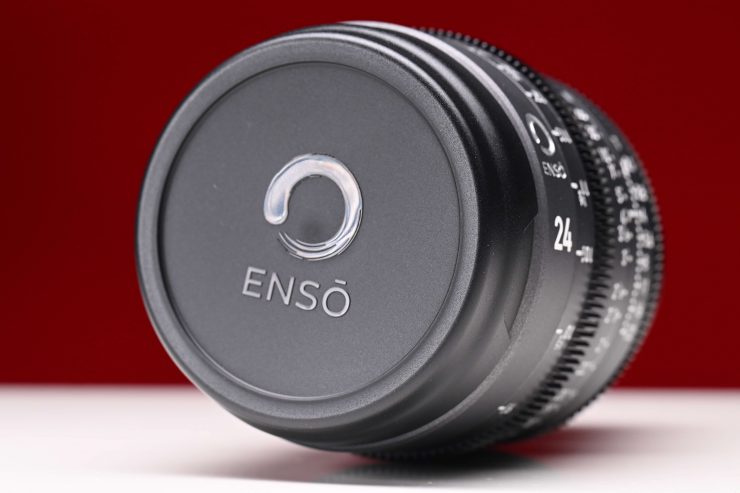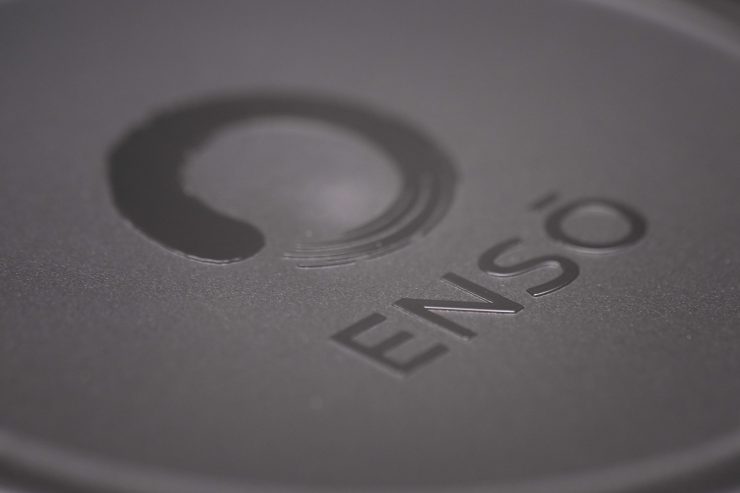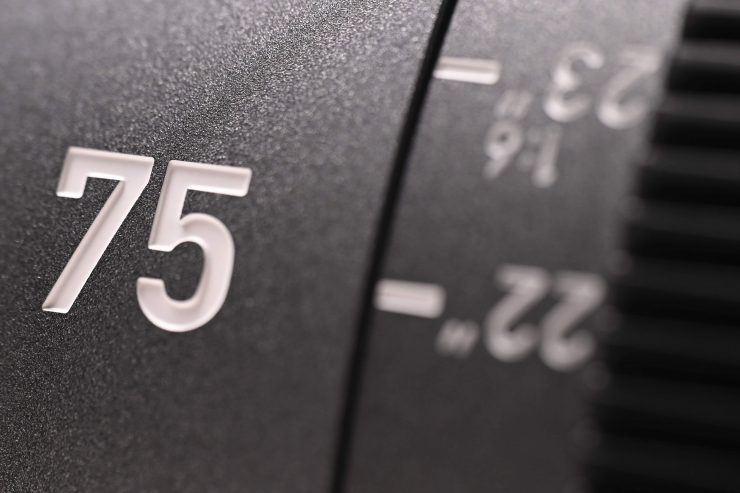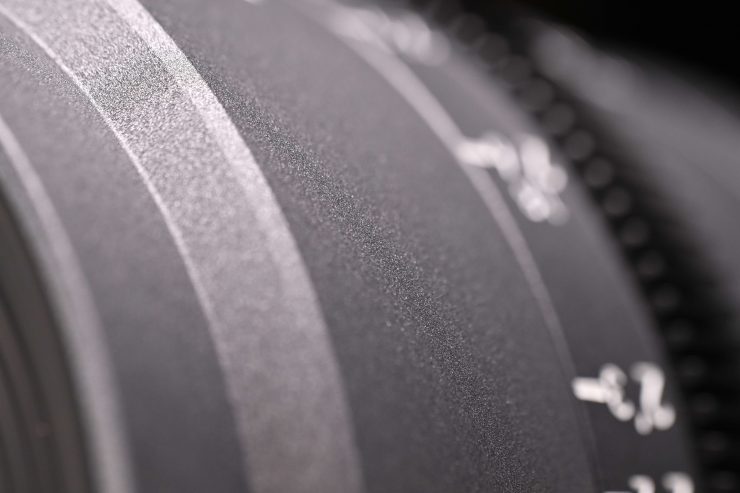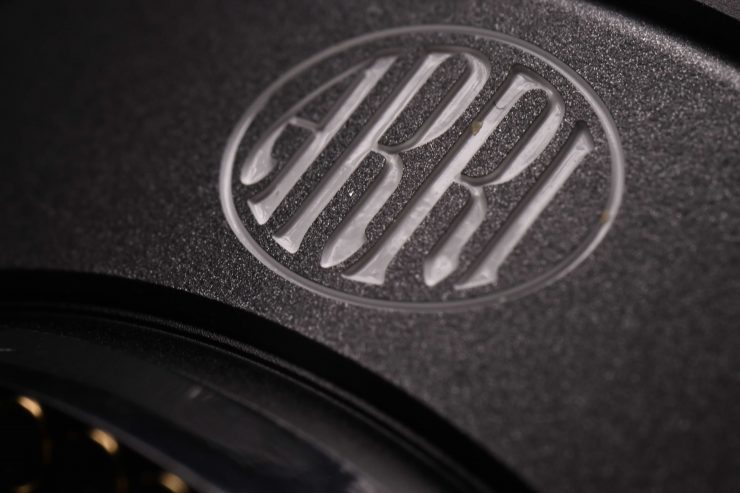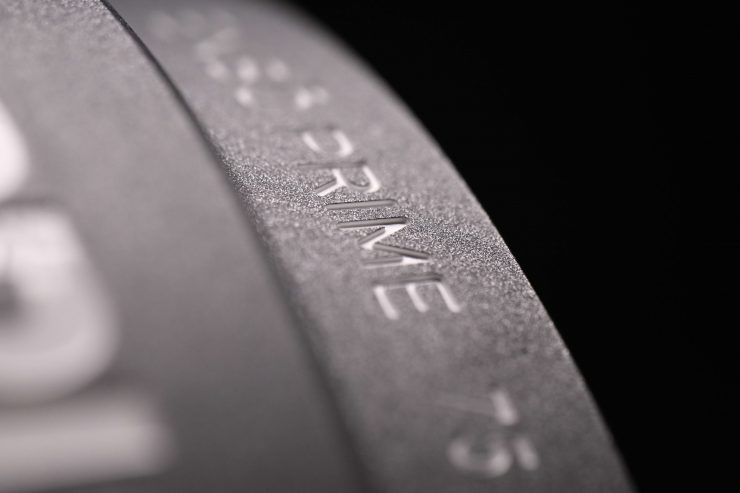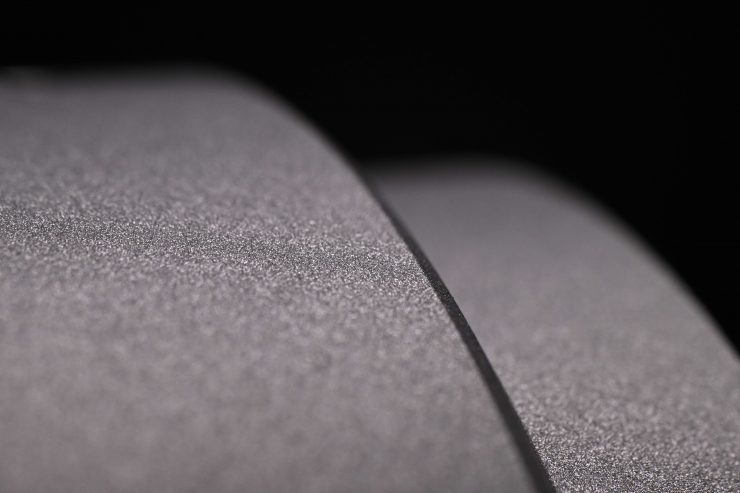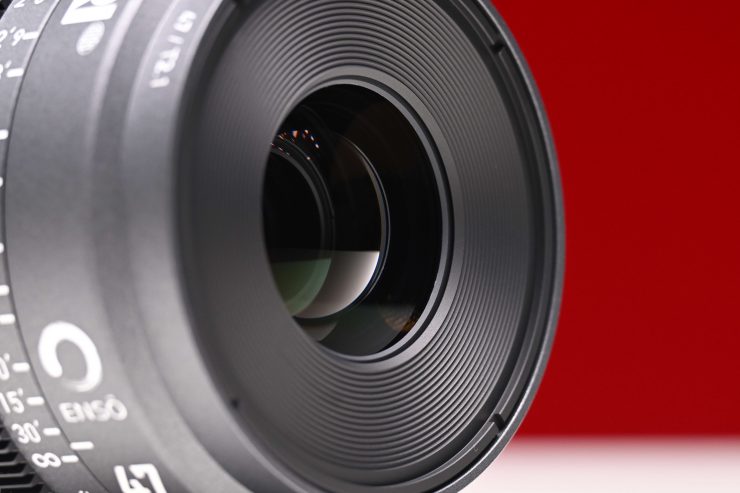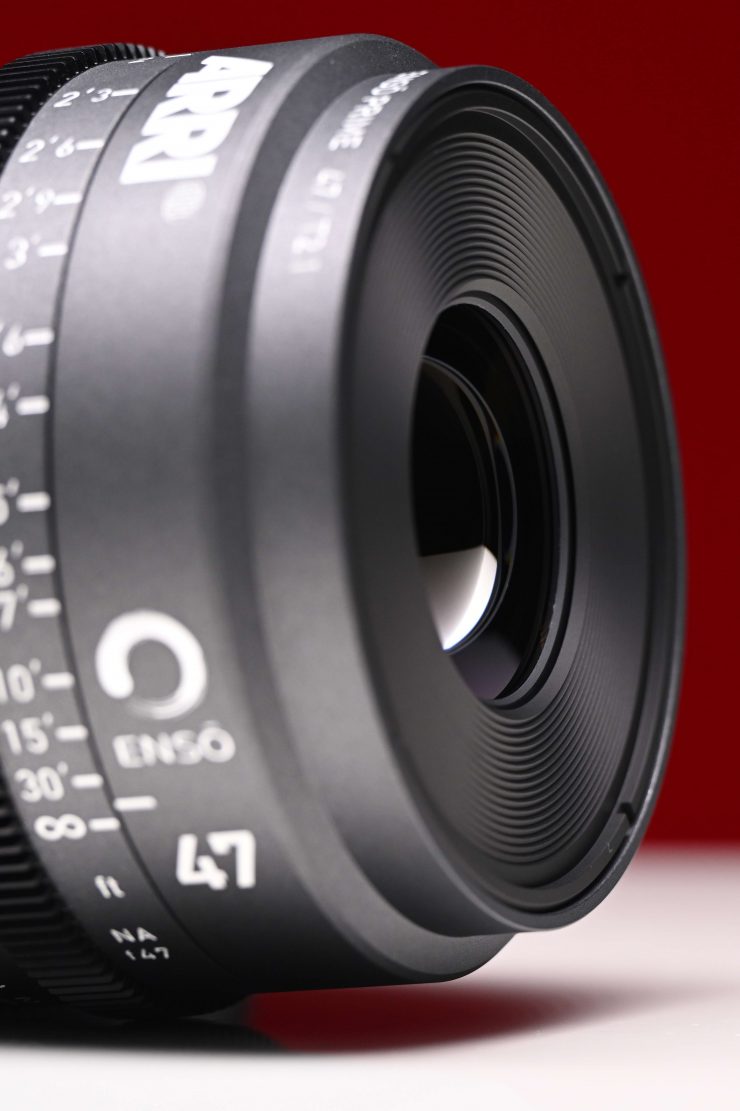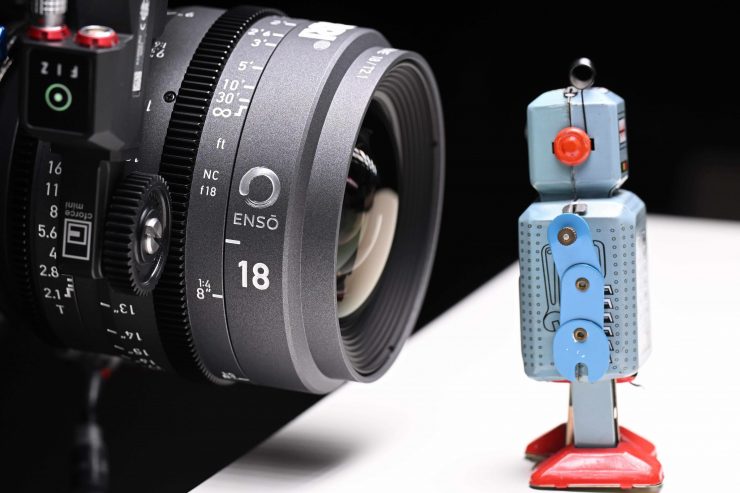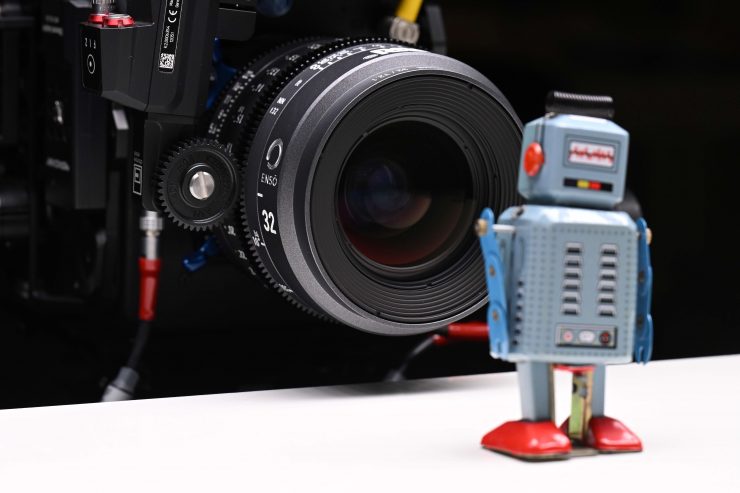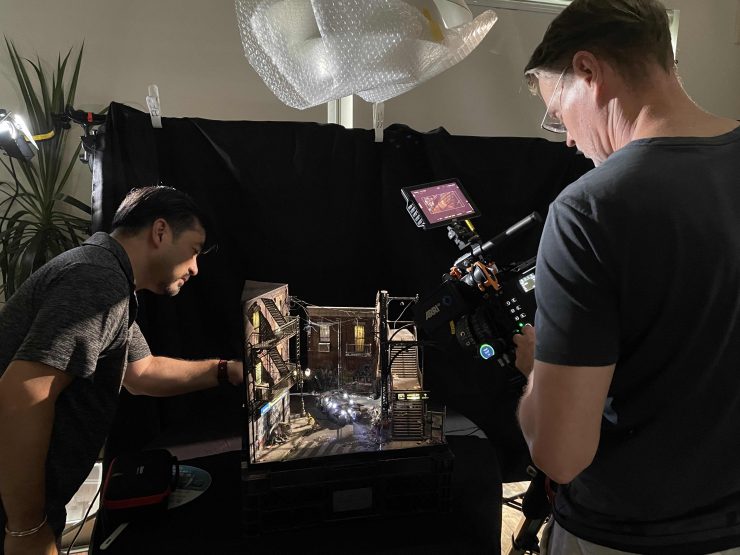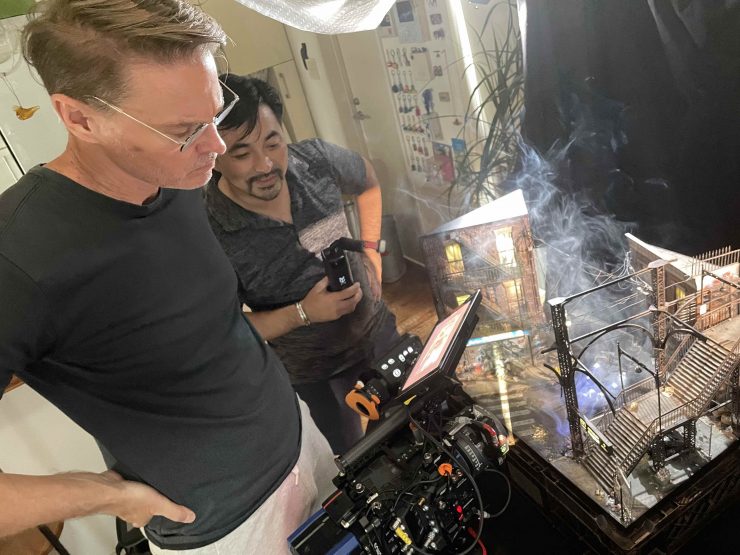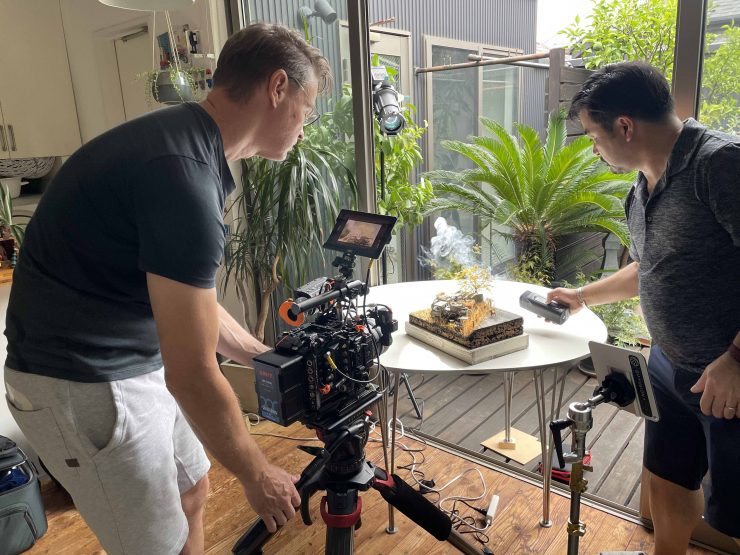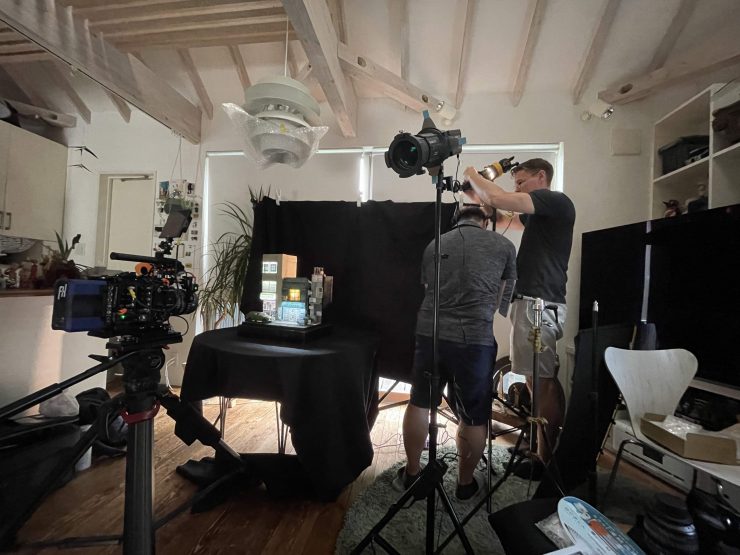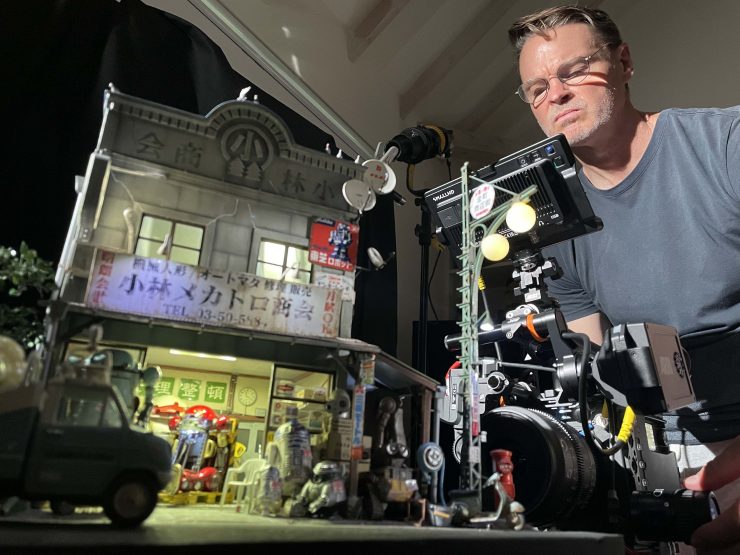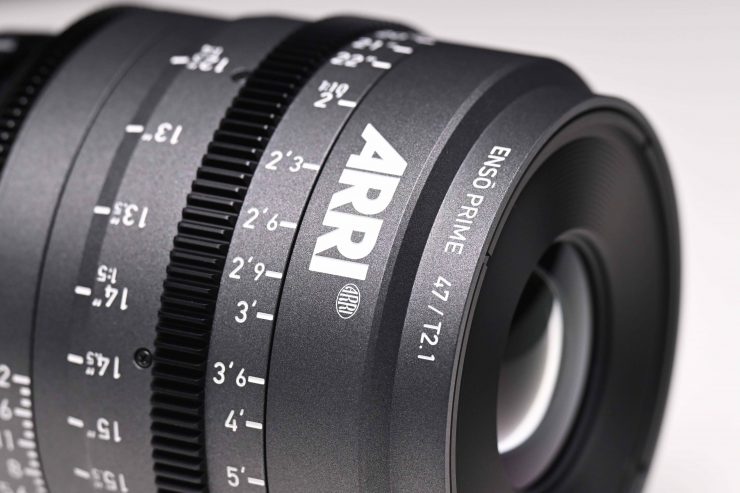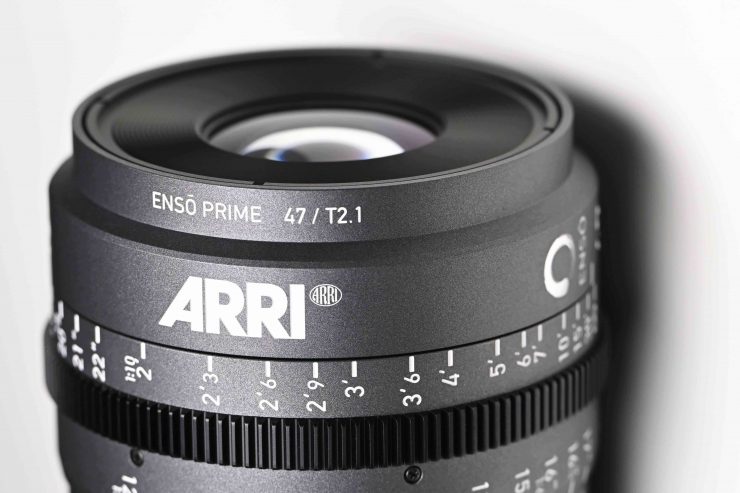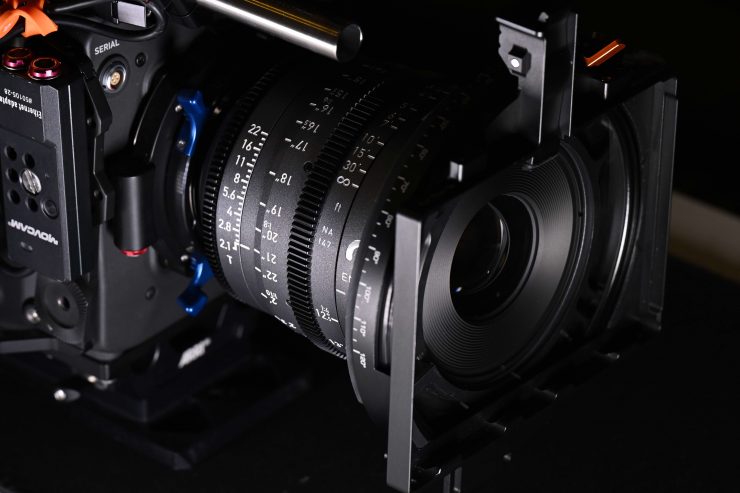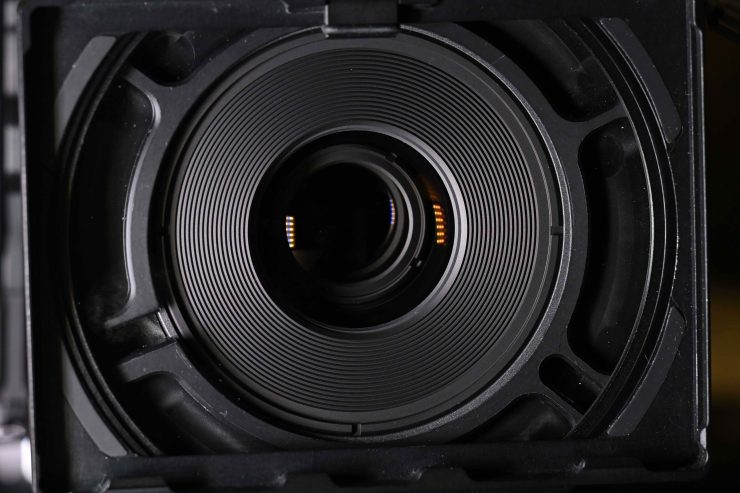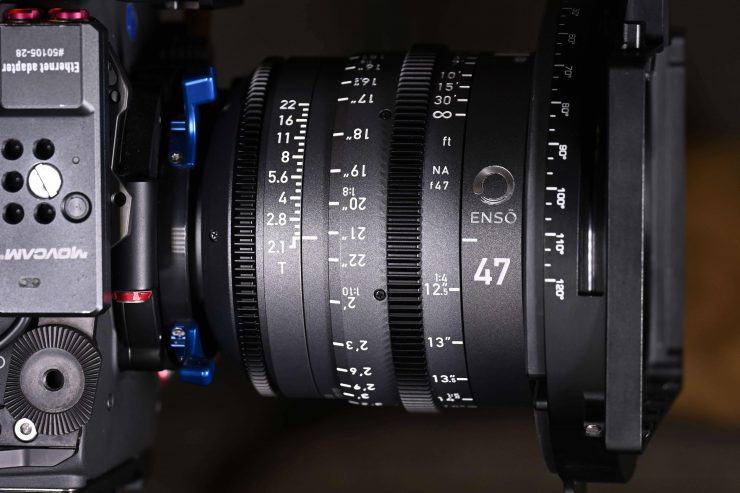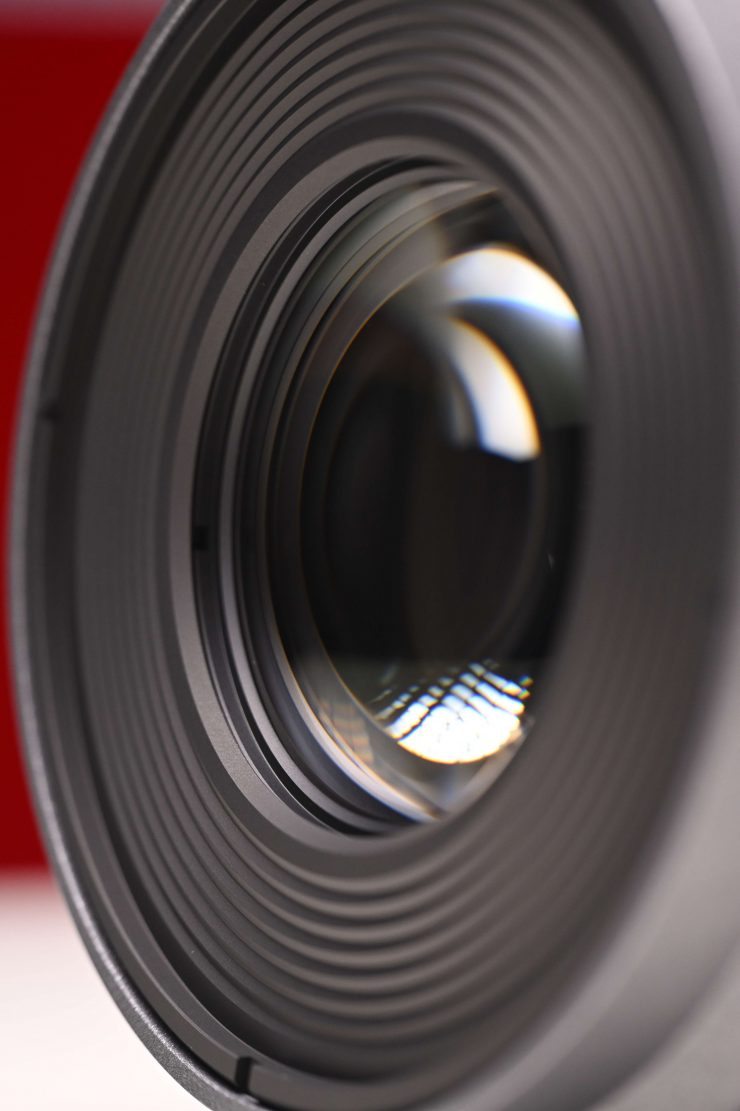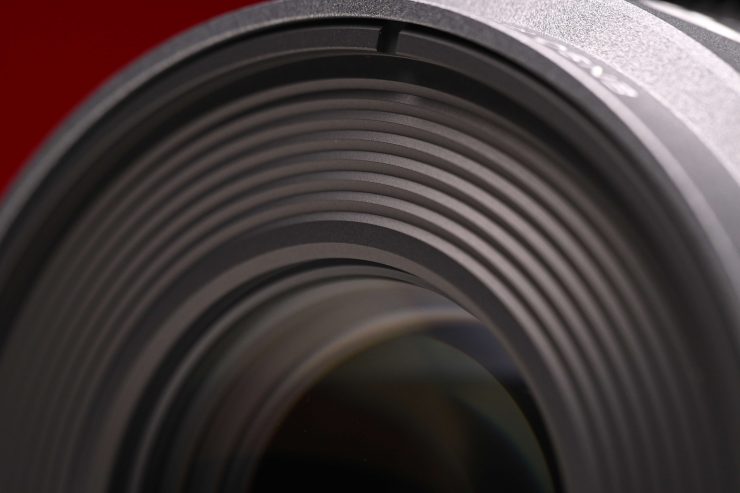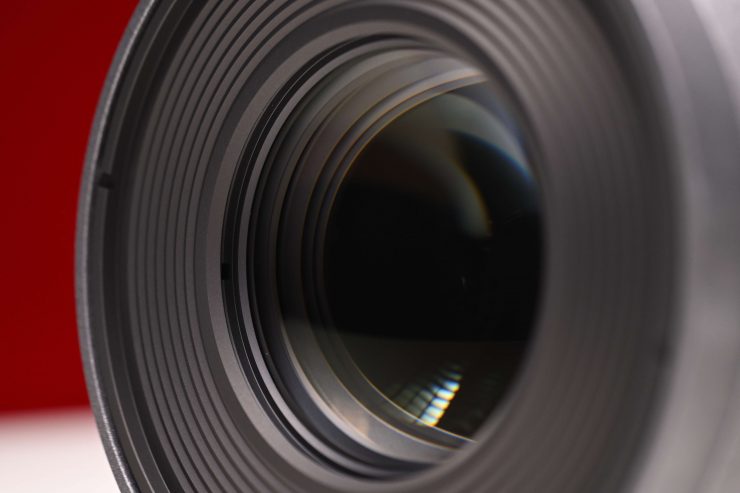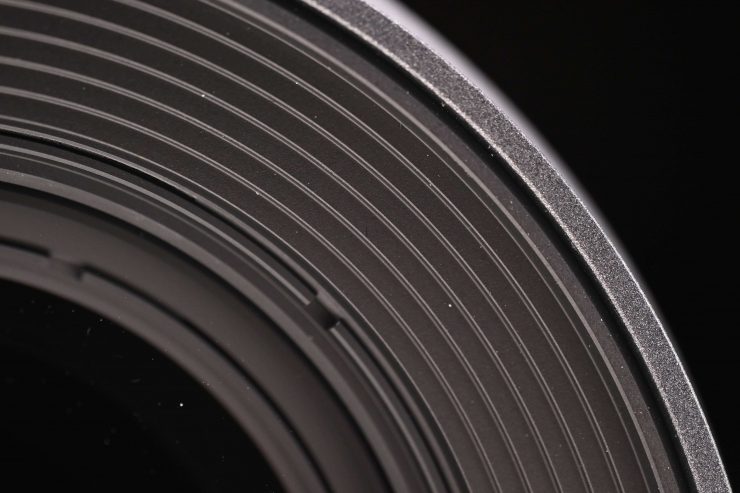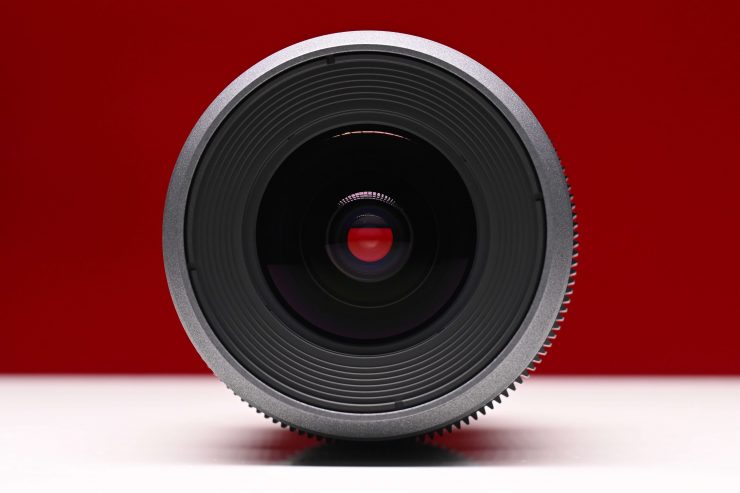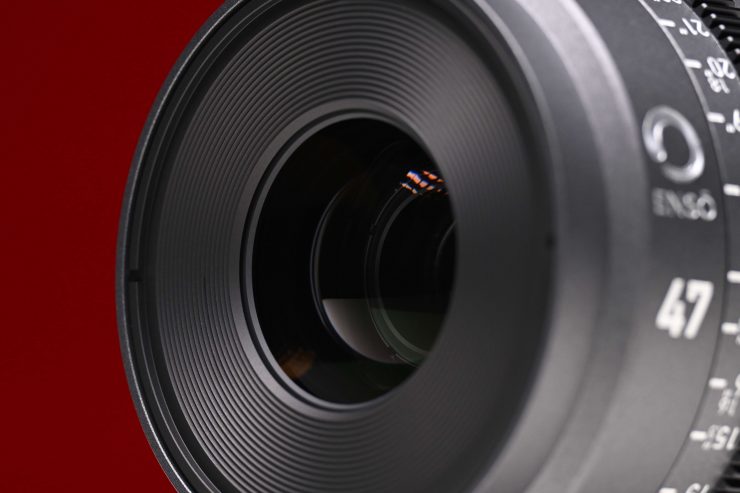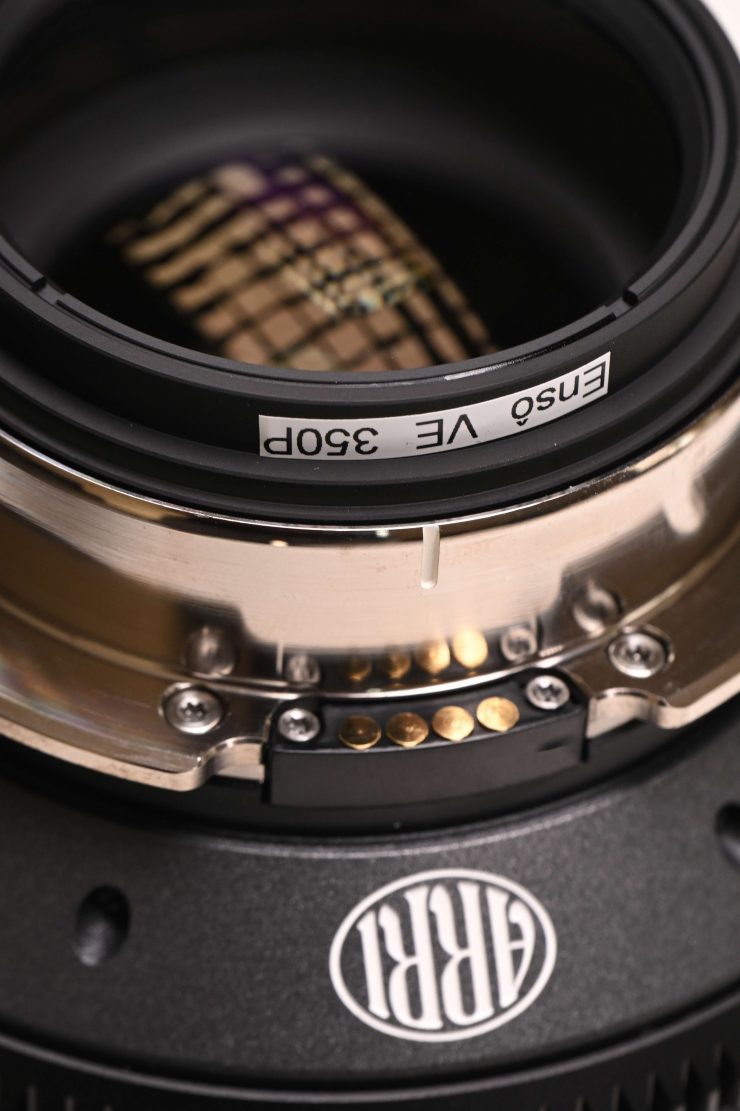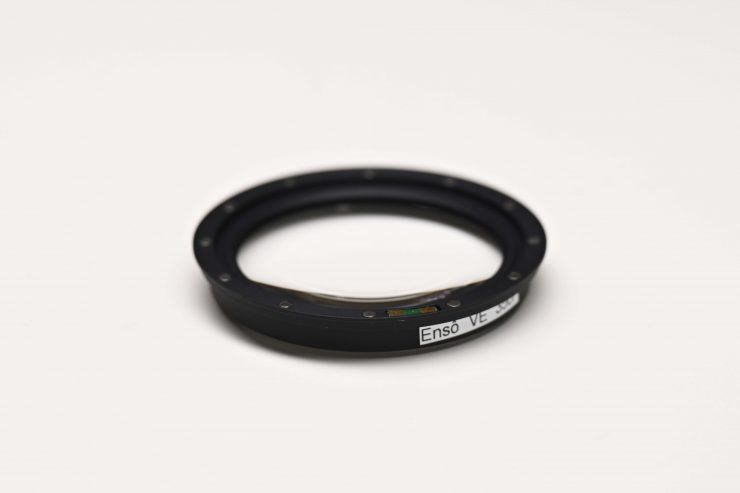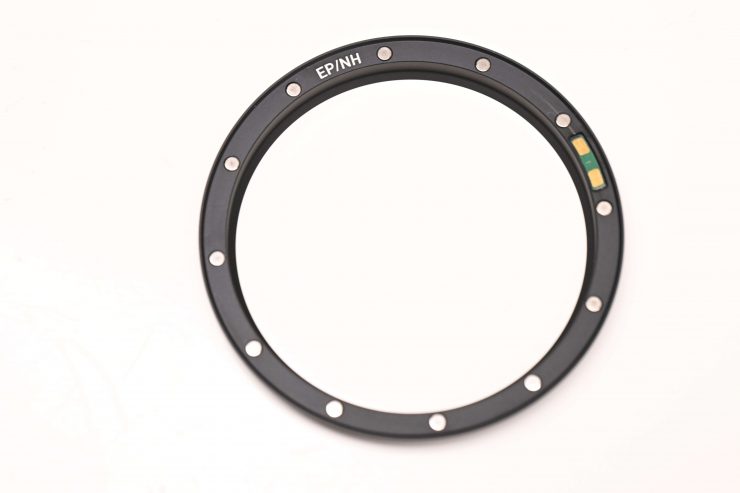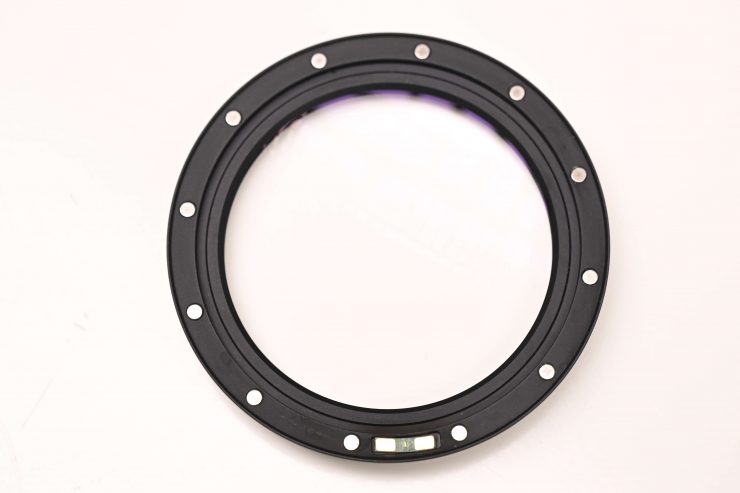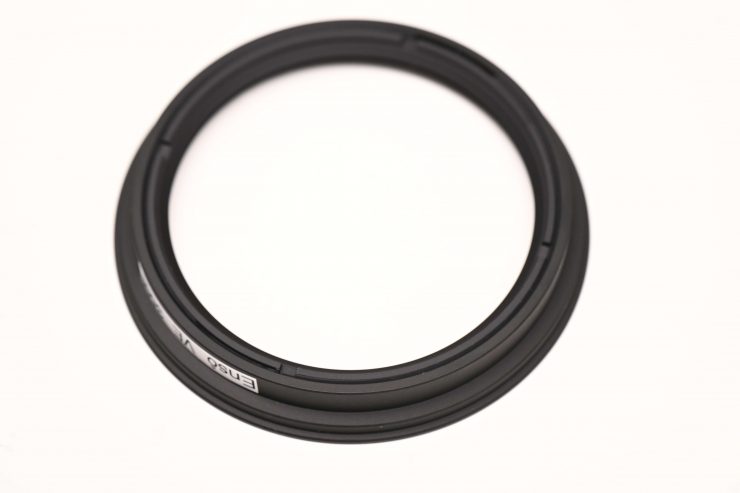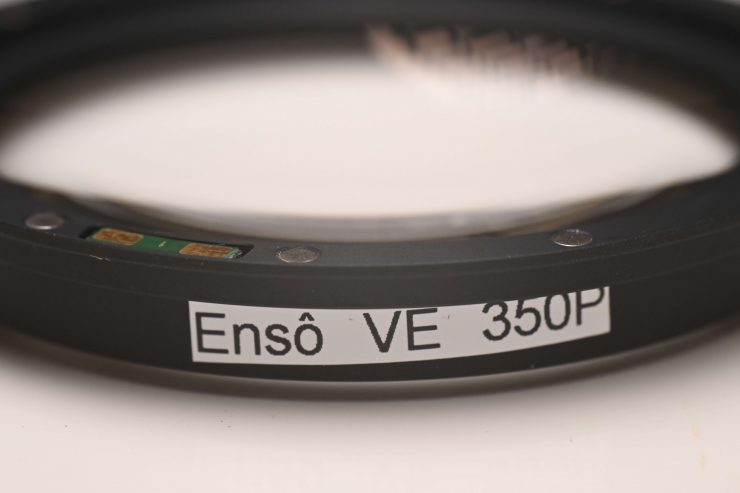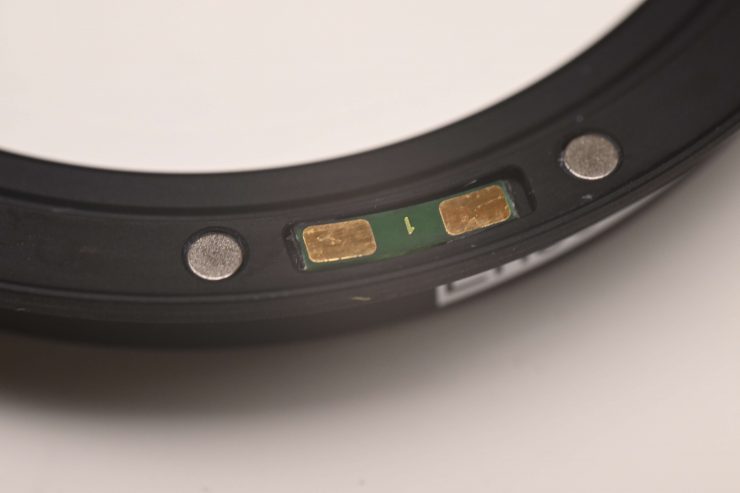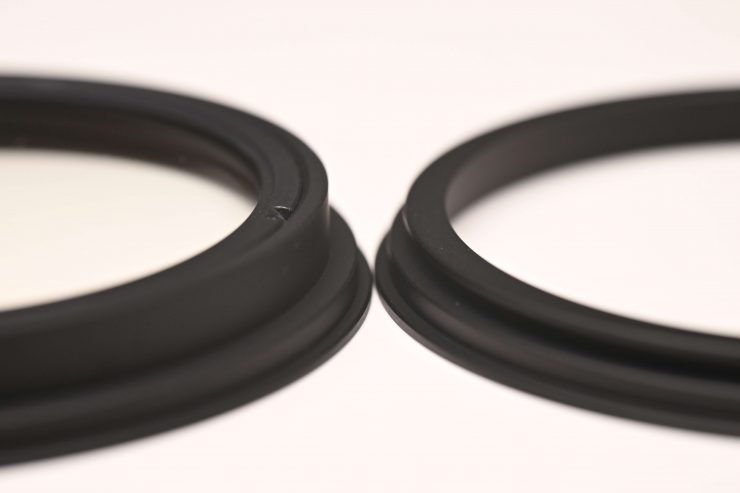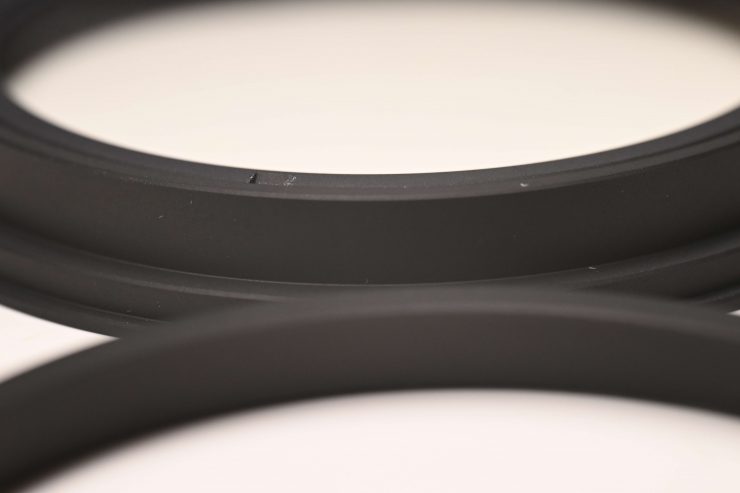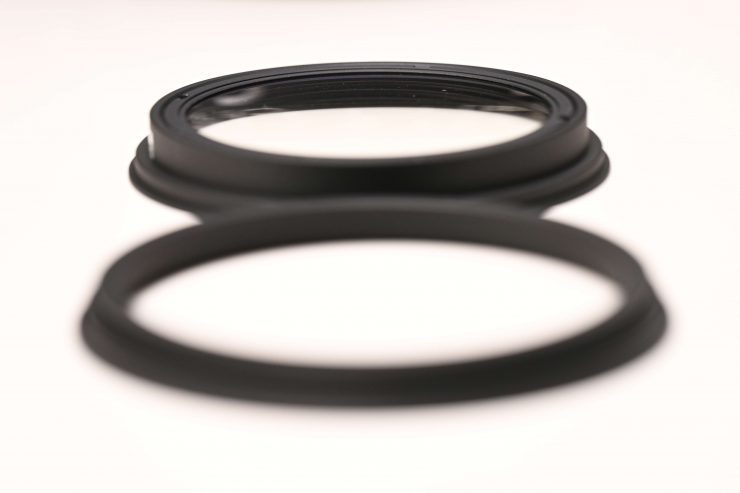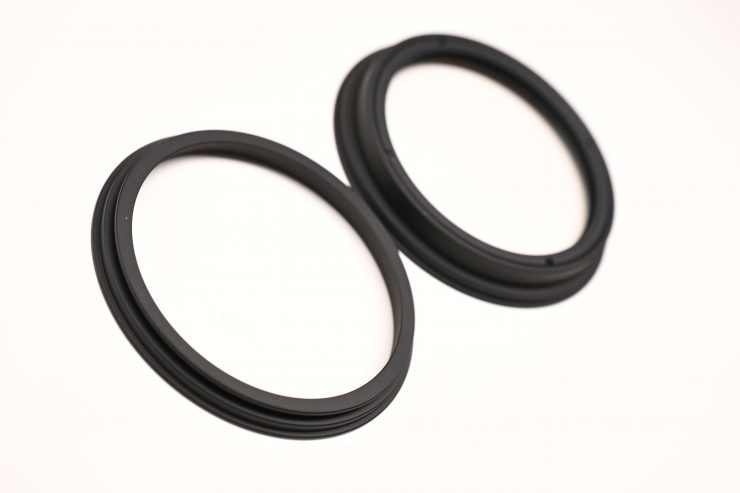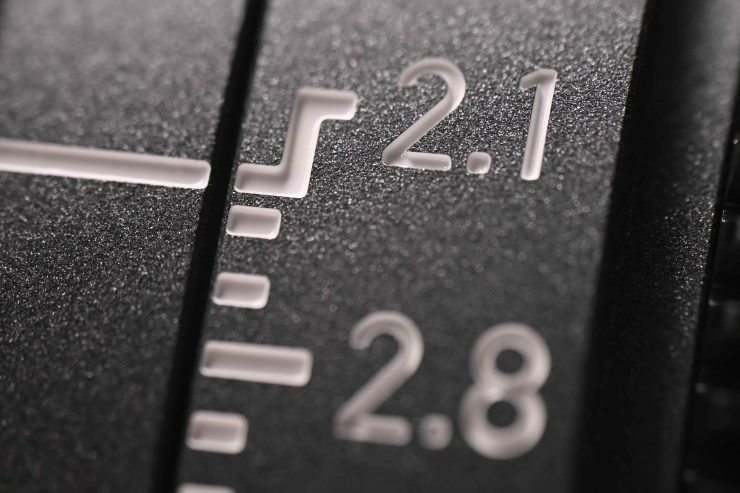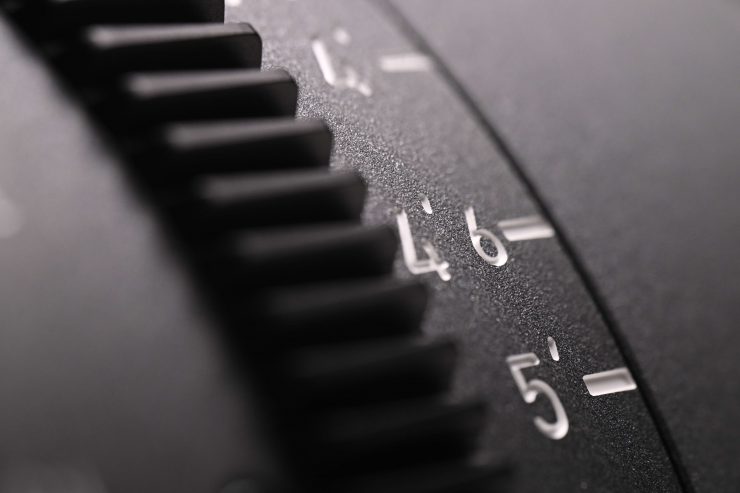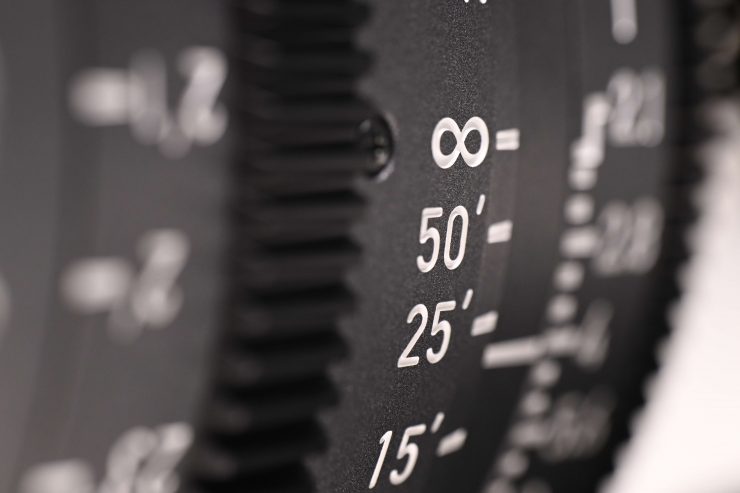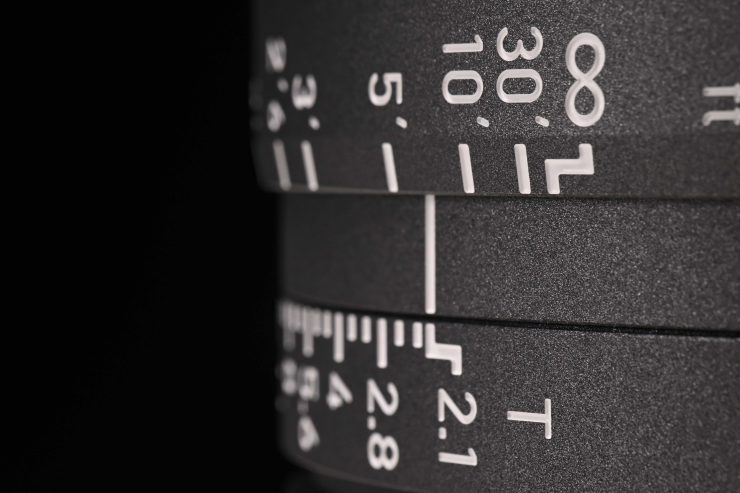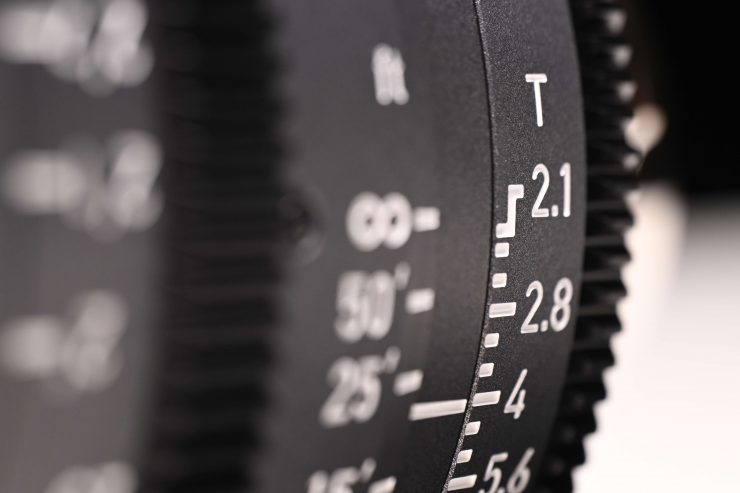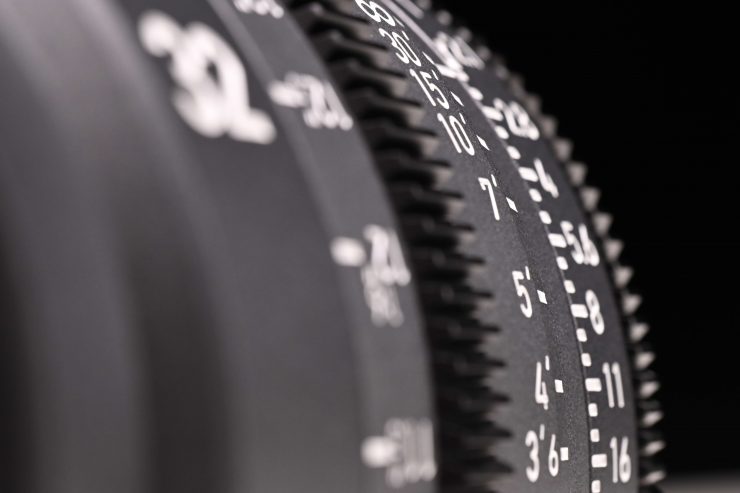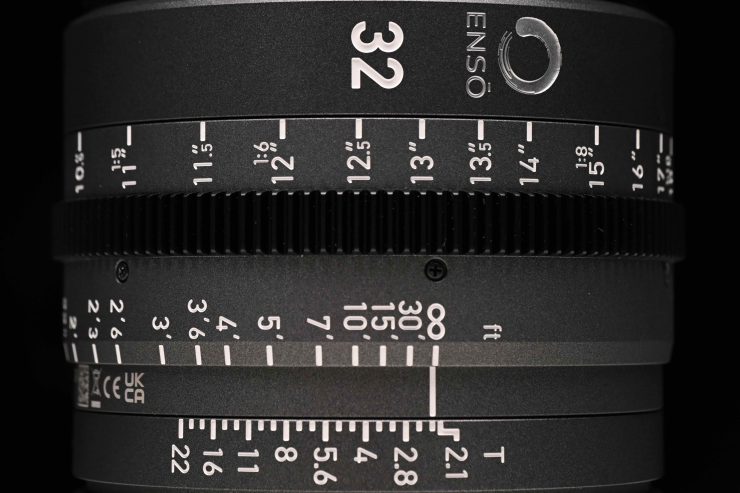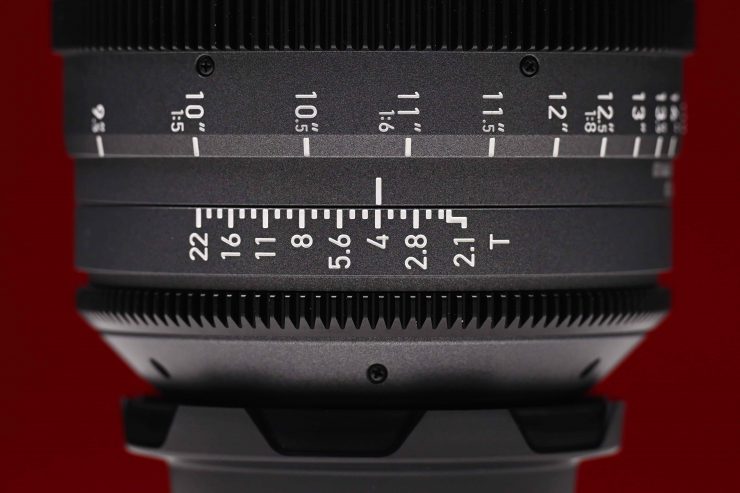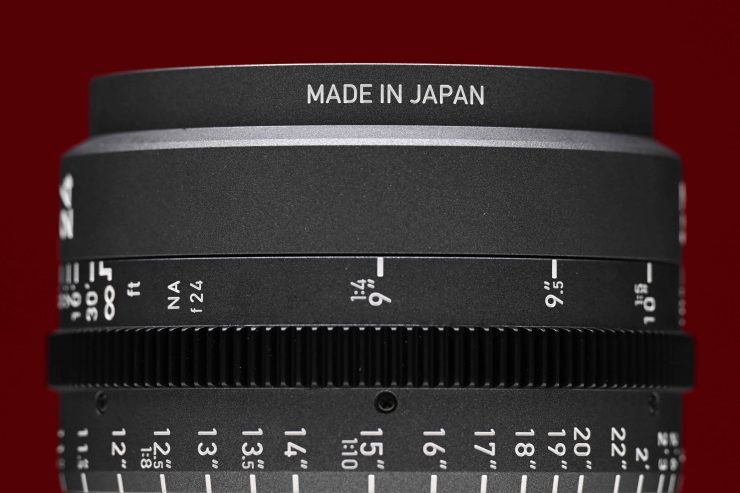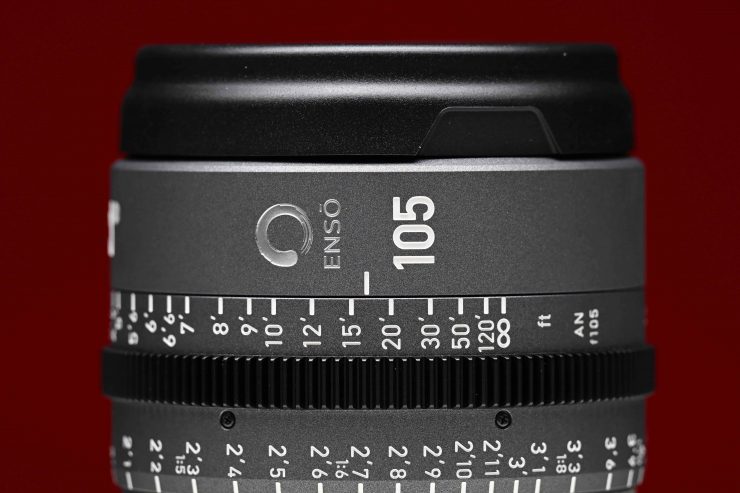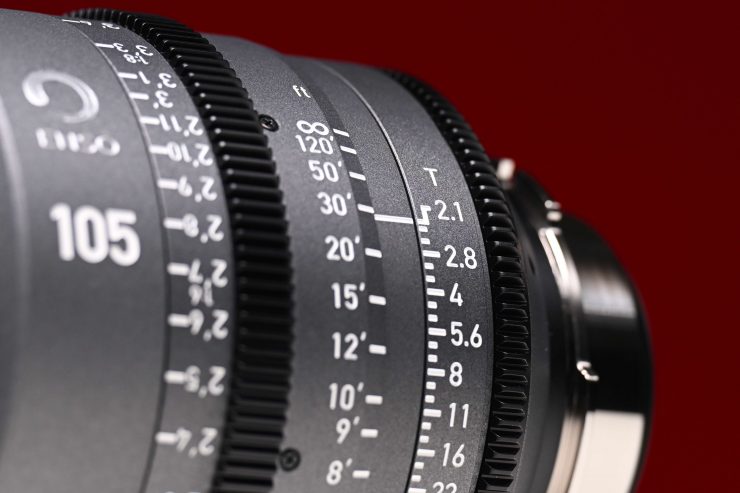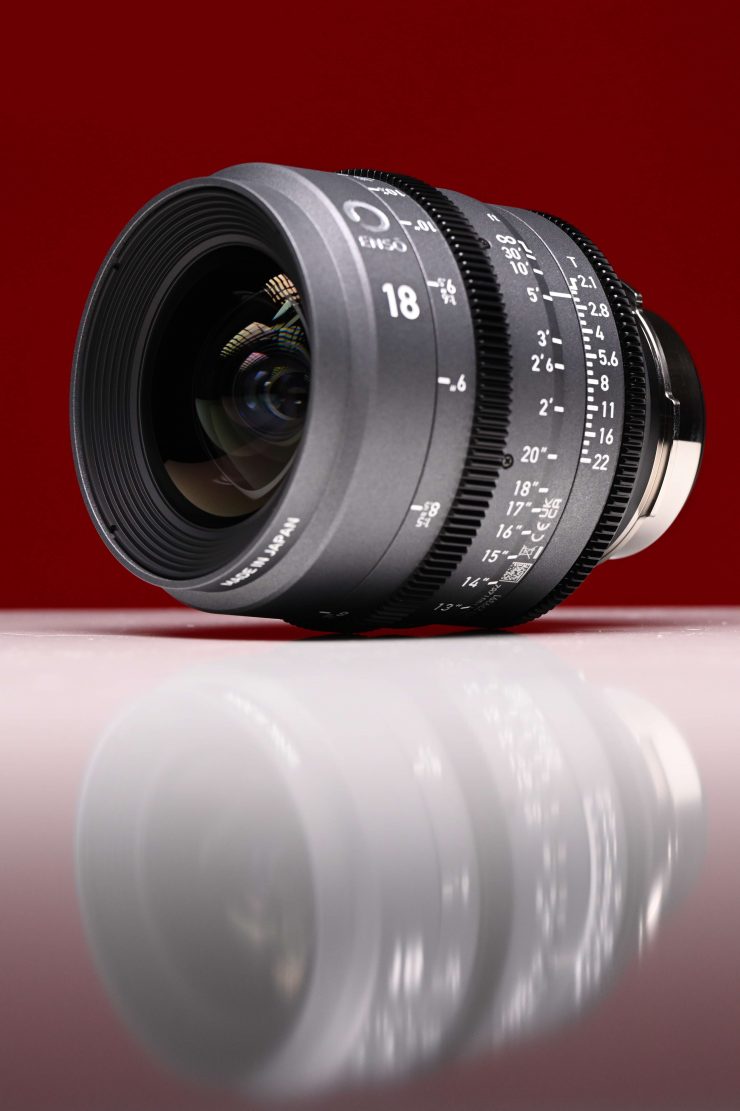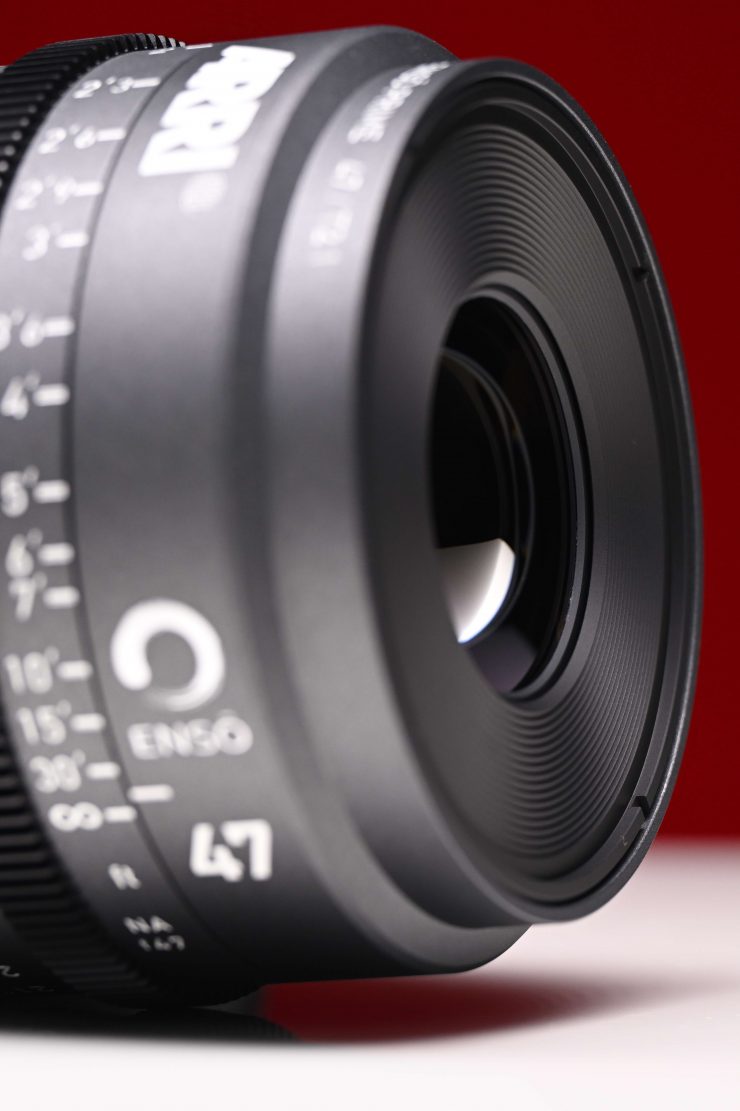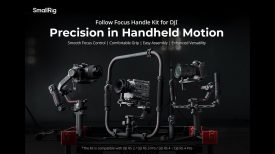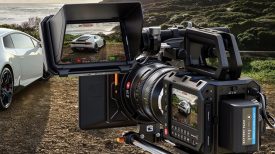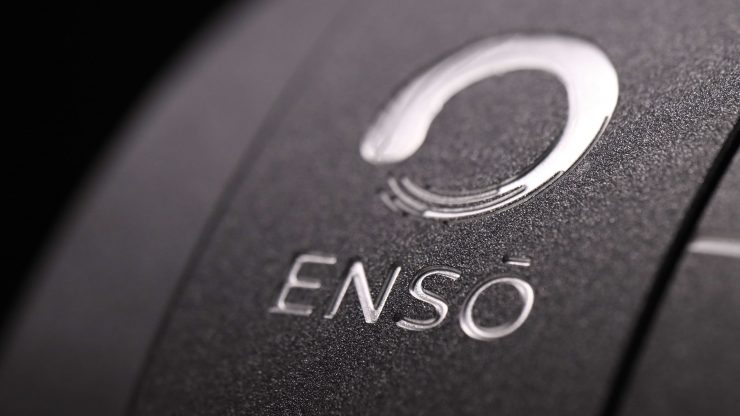
ARRI has announced its new Ensō (円相) full-frame primes. These are a brand-new full-frame series that have been designed from the ground up.
I was lucky enough to get my hands on a set, but due to time constraints, this is going to be more of a first look rather than a review.
They are smaller and lighter than Signature primes and they feature the ability to be used with a new set of rear elements. They also have very good close focus.
The complete Ensō series consists of the following focal lengths:
- 10.5mm T2.8
- 14mm T2.5
- 18mm T2.1
- 21mm T2.1
- 24mm T2.1
- 28mm T2.1
- 32mm T2.1
- 40mm T2.1
- 47mm T2.1
- 58mm T2.1
- 75mm T2.1
- 105mm T2.1
- 150mm T2.5
- 250mm T2.8
All of the lenses, except the 10.5mm, 14mm, 150mm, and 250mm are T2.1.
The 250mm T2.8 comes in a package with a 1.4x and 2x extender. So effectively you can have a set of full-frame lenses that goes from 10.5mm to 500mm. At least to my knowledge, this would give the Ensō series the largest focal range of any set on the market. Having 14 focal lengths offers a lot of versatility.
The lenses cover a 43mm image circle and a 46mm illumination circle. The focus rotation is 318° and the iris rotation is 48°.
The 18, 24, 32, 47, 75, and 105mm all have 11 aperture blades.
Above you can see footage taken with the lenses.
Why Ensō?
ARRI wanted to pay homage to Japan, where their lenses are made. It’s no secret that all of ARRI’s most recent lenses, including the Signature Primes and Signature zooms, along with the new Ensō series were made in Japan.
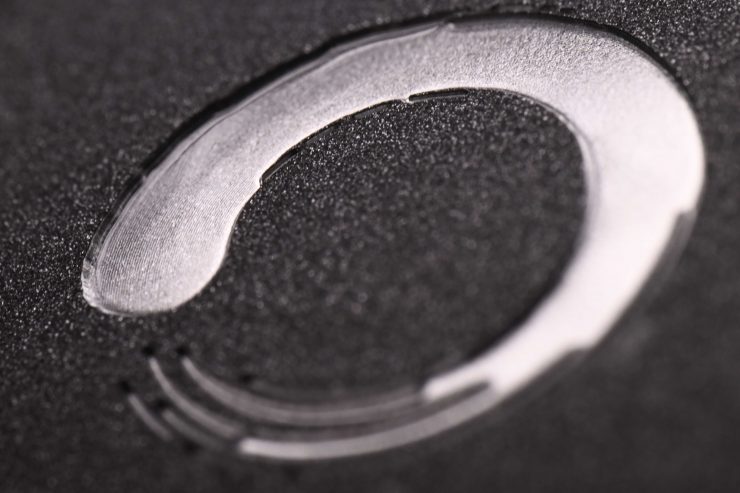
In Japanese calligraphy and ink printing, Ensō is executed in a single, fluid, expressive stroke. The circle, at once, means the beginning and the end, an all-encompassing symbol of the universe and enlightenment in the world of Zen teachings.
According to ARRI, the Ensō Prime range represents an entirely new series of ARRI cine lenses which were designed to excel across a wide range of shooting environments, making them accessible to a wider group of users. Among other features, Ensō Primes are compact, dependable and are characterized by their versatility, exceptional image quality and close focus performance.
All Ensō Primes are equipped with ARRI’s LDS-2 Lens Data System with high data rates and absolute encoders for fast initializing. This allows for frame-accurate metadata at high speeds and eliminates the need for calibration resulting in faster and smoother lens changes.
Why make another series of prime lenses?
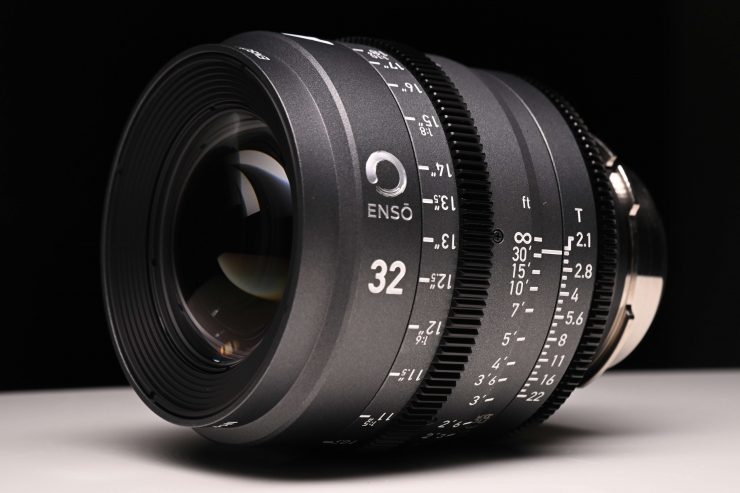
Having two different sets of prime lenses is nothing new for ARRI. If you look back over time there have always been two different sets. There were Master Primes and Ultra Primes, and if you go back 40-50 years ARRI had the Super Speeds and the Standard Speeds. Now there are the Signatures and the Ensō. Having a second-tier set makes sense as it gives DPs more options.
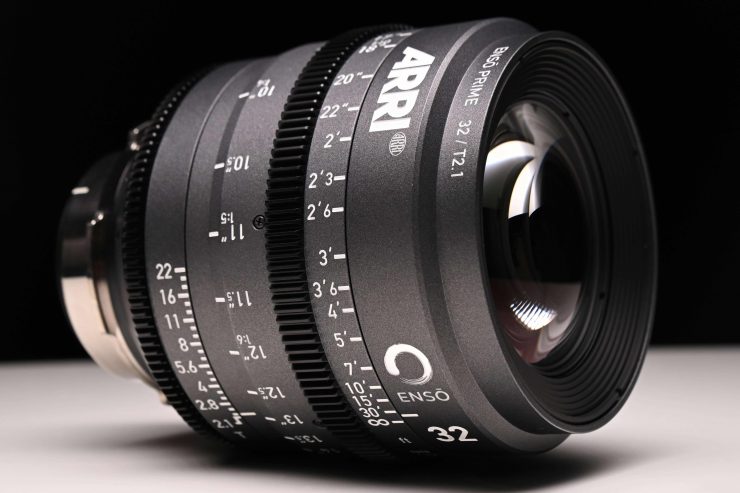
While DPs love the look and optical quality of the Signature Primes, many of them have been asking ARRI for something smaller and lighter. They also wanted ARRI to come up with an alternative look to the Signature Primes and that’s how Ensō was born. The market has also somewhat changed over the last 4-5 years and ARRI also realized that it needed to cater to the needs of younger DPs who were asking for something that was different and more affordable.
ARRI is targeting the Ensō series at mid to high-end owner/operators and productions with lower budgets. In saying that, they are quick to point out that these lenses are not designed to compete with the influx of affordable Chinese options on the market. To meet ARRI’s standards the lenses still needed to be robustly made and meet certain optical requirements. ARRI is not going to come out with $3,000 USD lenses because they want to keep a certain quality level that the brand is known for.
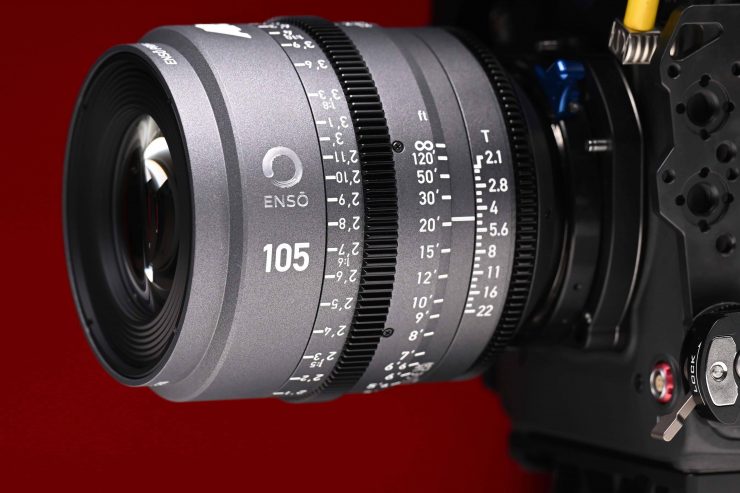
Even though the lenses are roughly half the price of the Signature Primes, ARRI told me that they are not half the performance of a Signatures. While they shouldn’t be compared with the Signature Primes, they are still going to offer a high level of performance and reliability. They were designed to be workhorse lenses that could be used across a wide array of applications.
LPL Mount
The Ensō series, just like the Signature Primes and Zooms is only available in LPL mount.
You may be asking why LPL mount and not PL. Well, PL mount has a number of limitations when working with digital sensors and modern lenses, and the LPL mount was developed to specifically address those limitations.
In comparison to the PL mount, the LPL mount has a wider diameter (62 mm vs. 54 mm) and a shorter flange focal distance (44 mm vs. 52 mm).
Unlike 35 mm film, digital sensors come in all different shapes and sizes, and the wider diameter of the LPL mount covers them all, from ALEXA 65 to ALEXA Mini. This gives additional degrees of freedom for the optical design and helps to avoid optical issues.
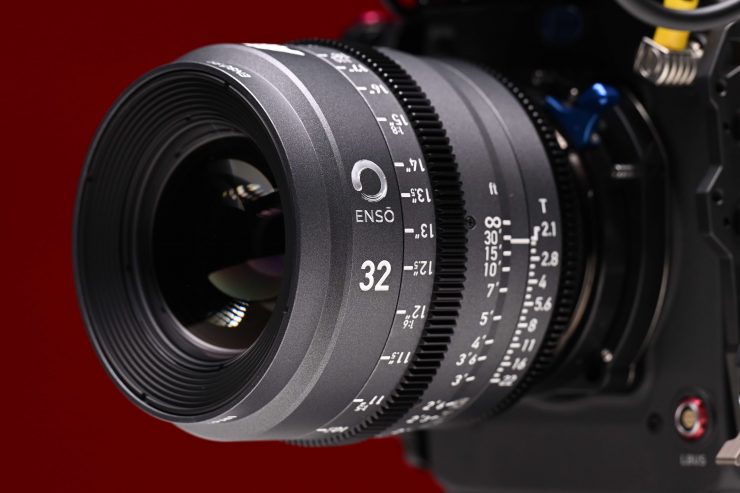
A small lens mount diameter leads to low-level corner illumination due to vignetting. Also, light reaches the corners of the sensor at steep angles, something that you want to avoid when working with digital image sensors. Those mostly are more sensitive when perpendicularly illuminated. Digital cameras also usually incorporate a filter package in front of the sensor, which contains an optical low-pass filter as well as spectral filters. Focused light passes the filter package before getting to the sensor. Even if these filters are perfectly made, plane parallel glass plates, placed in the beam of focused light, need to be considered during optical design. The influence of these parallel plates becomes even more severe when penetrated at steep angles.
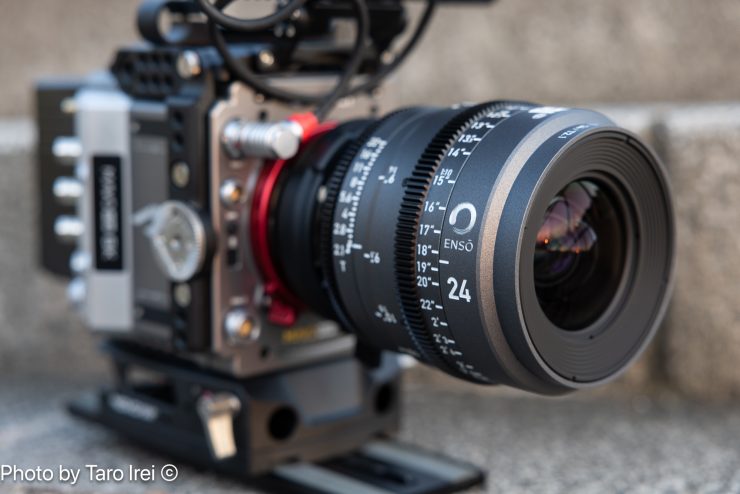
To guarantee the highest performance across the image even when used with different cameras and filter packages, light should strike the sensor nearly perpendicular. This effect is called telecentric. A lens containing a rear element that is smaller than the sensor cannot meet this requirement. Depending on the layout of the single image sensor pixels, light striking at steep angles may be detected partially only by the sensor or lead to what is called crosstalk when absorbed and converted opto-electronically by a neighboring pixel. These effects are avoided by using telecentric optical designs.
By utilizing a reduced flange focal distance it allows additional degrees of freedom for lens design that can be used for reducing aberrations like distortion, spherical aberration, field curvature, or chromatic aberrations while also enabling lenses to have a low T-stop-number. The reduction of weight also makes this easier to achieve since space for a mechanical shutter does not need to be provided anymore.
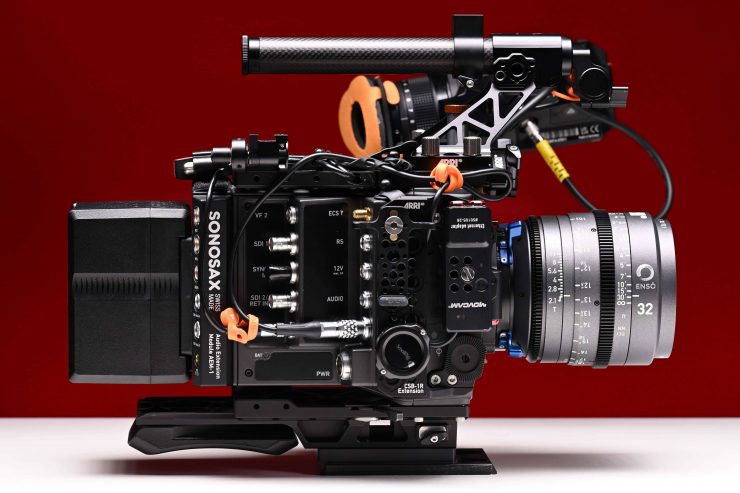
I know that is a long answer to a short question, but in summary, the dimensions of the LPL mount accommodate all current common digital sensor sizes and allow for the design of smaller, lighter, and faster lenses with enhanced imaging quality properties. Rather than purchasing a lens with a specific lens mount intended for use with a specific camera, any lens can be used on any camera with an industry-wide standardized mount, regardless of image size or resolution.
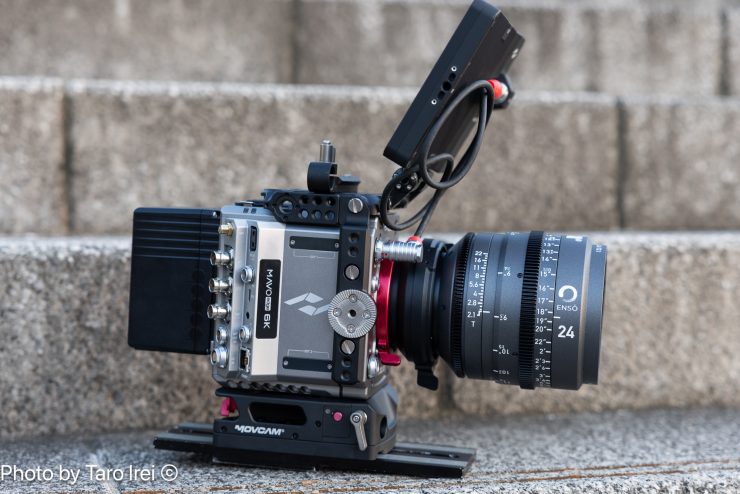
The LPL mount is being licensed to other lens and camera manufacturers, creating a universal standard that allows for the free interchange of lenses between cameras, regardless of sensor size.
If you want to use them on other cameras that don’t feature an LPL mount, there are quite a few third-party adapters out in the market from companies such as C7, Wooden Camera, etc.
I tried out a Kinefinity MAVO EDGE 6K with an LPL Mount and it worked well.
Size & Weight
The new Ensō series is significantly smaller and lighter than the Signature Primes. They are roughly around 33% shorter than the Signatures.
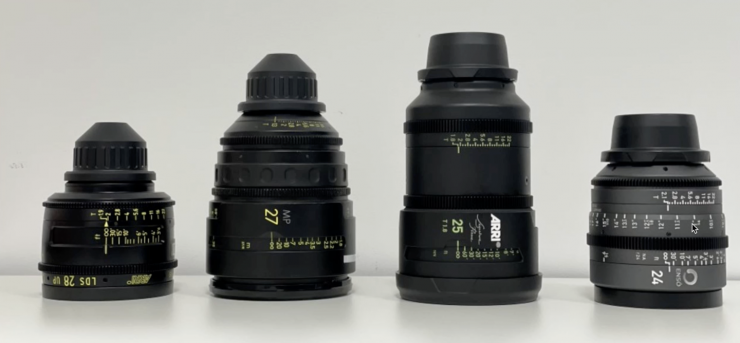
Above you can see how the Ensō 24mm compares in size to the 25mm Signature Prime, 27mm Ultra Prime, and 28mm Ultra Prime LDS.
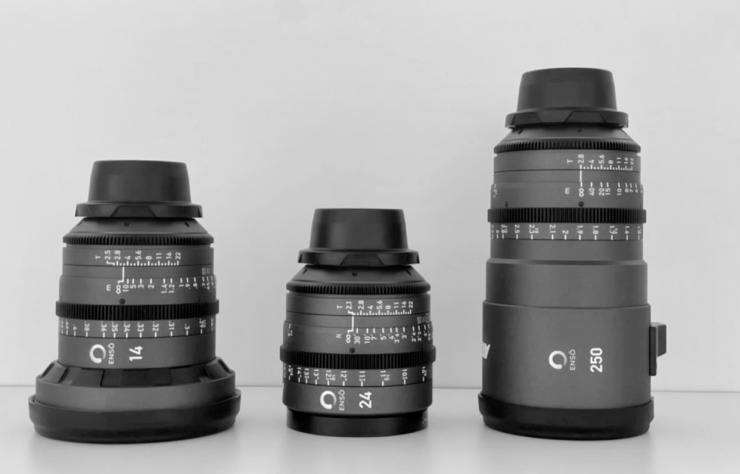
The size and weight of the Ensō series do vary depending on the focal length. From 18mm up to 105mm, they are very similar in size and it is only when you go to the extremely wide and telly ends that there are differences.
| WEIGHT | LENGTH | |
| 10.5mm T2.8 | 2.3 kg / 5.1 lb | 140mm / 5.5″ |
| 14mm T2.5 | 2.0 kg / 4.4 lb | 140mm / 5.5″ |
| 18mm T2.1 | 1.4 kg / 3.1 lb | 116mm / 4.6″ |
| 21mm T2.1 | 1.4 kg / 3.1 lb | 116mm / 4.6″ |
| 24mm T2.1 | 1.4 kg / 3.1 lb | 116mm / 4.6″ |
| 28mm T2.1 | 1.5 kg / 3.3 lb | 116mm / 4.6″ |
| 32mm T2.1 | 1.4 kg / 3.1 lb | 116mm / 4.6″ |
| 40mm T2.1 | 1.4 kg / 3.1 lb | 116mm / 4.6″ |
| 47mm T2.1 | 1.3 kg / 2.9 lb | 116mm / 4.6″ |
| 58mm T2.1 | 1.5 kg / 3.3 lb | 116mm / 4.6″ |
| 75mm T2.1 | 1.5 kg / 3.3 lb | 121mm / 4.8″ |
| 105mm T2.1 | 1.6 kg / 3.5 lb | 121mm / 4.8″ |
| 150mm T2.1 | 1.9 kg / 4.2 lb | 151mm / 5.9″ |
| 250mm T2.8 | 2.9 kg / 6.4 lb | 204mm / 8″ |
| 250mm T2.8 & 1.4x Extender | 3.5 kg / 7.8 lb | 249mm / 9.8″ |
| 250mm T2.8 & 2x Extender | 3.6 kg / 7.9 lb | 259mm / 10.2″ |
Above you can see what all the focal lengths weigh and how long they are.
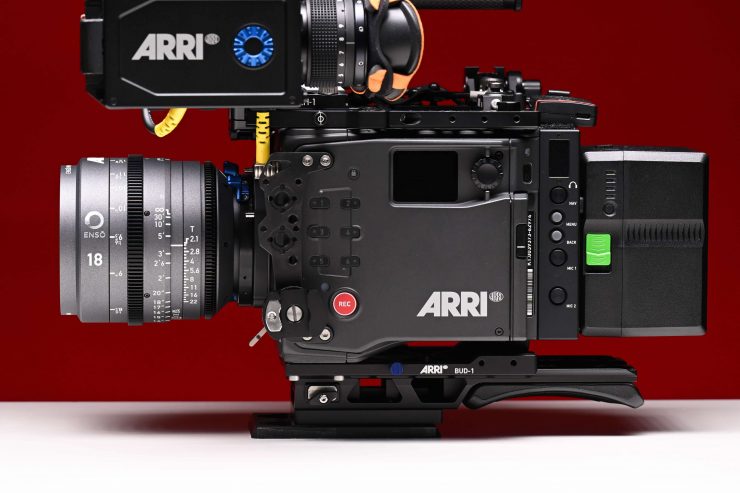
The lower weight and smaller size do make them arguably more suitable for gimbal, drone, shoulder, and handheld shooting.
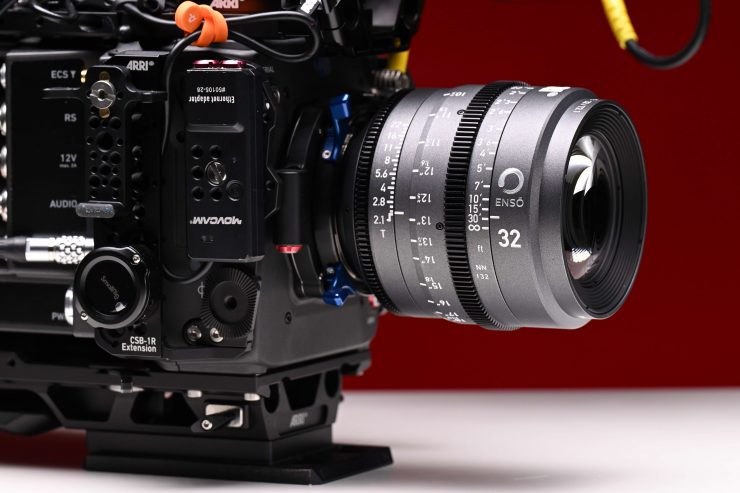
The lenses are certainly not what a lot of people would describe as lightweight, especially if you compare them to the more ‘affordable’ lenses coming out of China, however, their weight is pretty good compared to other higher-end options.
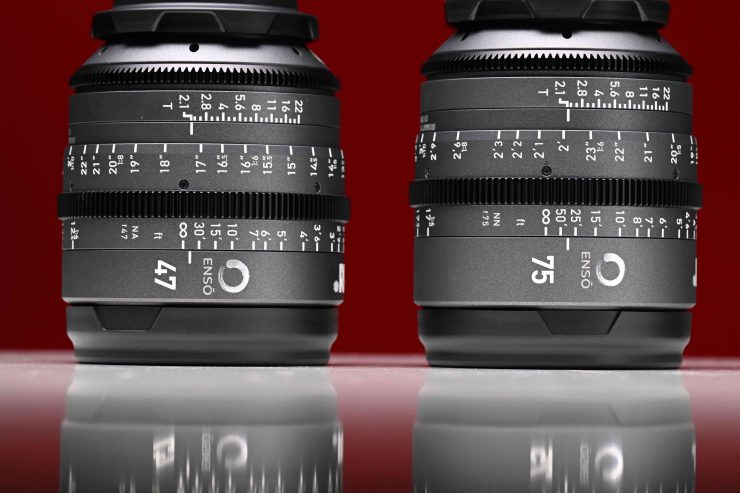
Below you can see a weight and size comparison between the Ensō 47mm T2.1 and other competing options.
| WEIGHT | LENGTH | |
| ARRI Ensō 47mm T2.1 | 1.3 kg / 2.9 lb | 116mm / 4.6″ |
| ARRI Signature Prime 47mm T1.8 | 1.8 kg / 3.97 lb | 178mm / 7.01″ |
| Cooke 50mm T2.0 S7/i Full Frame Plus | 3.4 kg / 7.5 lb | 189mm / 7.44″ |
| Cooke 50mm Panchro/i Classic T2.2 | 1.46 kg / 3.22 lb | 112.9 mm / 4.4″ |
| Cooke S8/i Full Frame Plus 50mm T1.4 | 2.1 kg / 4.6 lb | 157 mm / 6.2″ |
| ZEISS Supreme Prime 50mm T1.5 | 1.22 kg / 2.7 lb | 11.94 cm / 4.7″ |
| ZEISS CP.3 50mm T2.1 | 0.77 kg / 1.7 lb | 83.7 mm / 3.3″ |
| Angenieux Optimo Prime 50mm T1.8 | 1.7 kg / 3.7 lb | 128 mm / 5″ |
| Leitz Cine Prime 50mm T1.8 | 2.7 kg / 5.95 lb | 183.7 mm / 7.23″ |
| Sigma 50mm T1.5 FF High-Speed | 1.18 kg / 2.6 lb | 94 mm / 3.7″ |
| Sigma 50mm T2.5 FF Classic Cine | 1.2 kg / 2.6 lb | 94 mm / 3.7″ |
| Tokina Cinema Vista 50mm T1.5 | 2.19 kg / 4.83 lb | 145 mm / 5.71″ |
| Tokina Cinema Vista-P 50mm T1.5 | 2.19 kg / 4.83 lb | 145 mm / 5.71″ |
| Canon 50mm Sumire Prime T1.3 | 1.1 kg / 2.43 lb | 93.5 mm / 3.68″ |
| DZOFilm Arles 50mm T1.4 FF/VV | 1.68 kg / 3.7 lb | 121 mm / 4.8″ |
As you can see, the ARRI Ensō 47mm T2.1 has a fairly similar weight to lenses such as the Sigma 50mm T2.5 FF Classic Cine, Canon 50mm Sumire Prime T1.3, ZEISS Supreme Prime 50mm T1.5, and the Cooke 50mm Panchro/i Classic T2.2.
Now, I do realize that a lot of these other options have faster T-stops so that certainly makes apples-to-apples comparisons difficult, but at least it will give you a general idea of how much they weigh compared to other competing products.
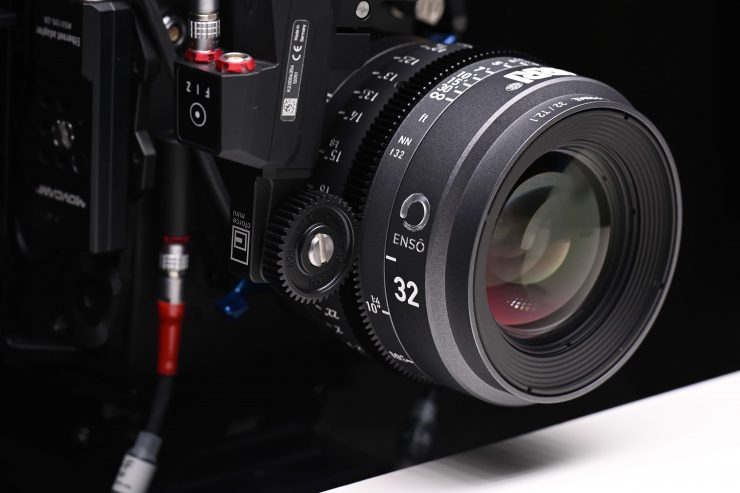
As you would expect, the focus and iris 0.8 pitch gears are all in the exact same position on all of the lenses which makes swapping them over when using motors very quick.
Calculation of focal length with equivalent field of view
If you are using an ALEXA LF in Open Gate mode and want to switch to ALEXA S35 3.2k mode, the corresponding conversion factor is 1.40 (105mm / 1.40 = 75mm).
A 75mm lens on an ARRI Mini or SXT will capture the approximate field of view of a 105mm lens on an ARRI Alexa LF or Mini LF.
Lens Identification
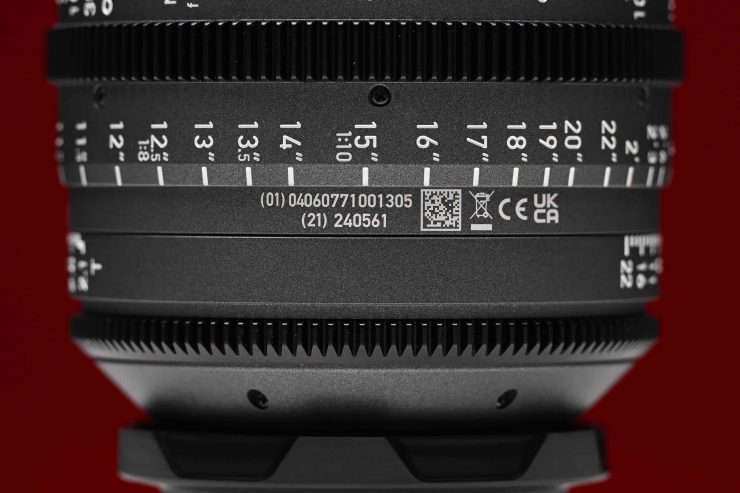
The GTIN number and lens serial number are engraved on the underside of the lens in both clear text and data matrix code using the GS1 standard. The GS1 barcode can be identified globally and reduces rental check-in and check-out time. These numbers provide proof of ownership and eliminate the need for stickers that can fall off or leave residue.
The encoded information of ARRI’s GS1 GTIN code differs from the usual ARRI product barcode labels.
Lens Metadata
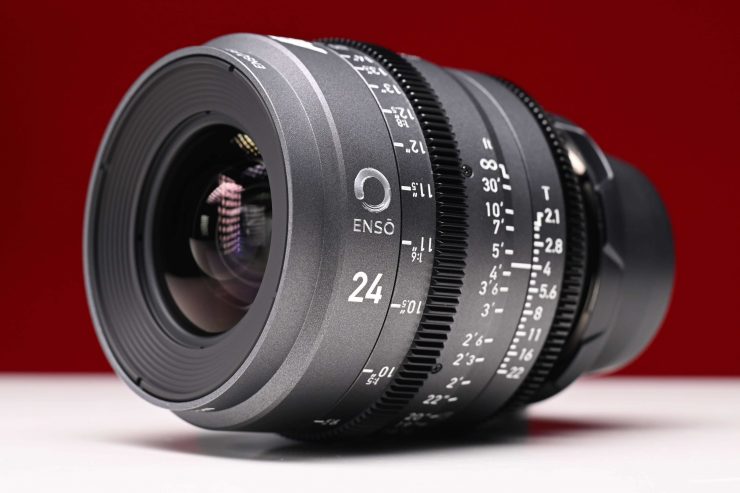
The ARRI Ensō lenses provide the camera with metadata that describes the state of the lens. Lens data is accurate to the frame, depending on the ability of a given camera to read this information at a high data rate. It includes lens serial number, lens distance unit, lens focus distance, lens focal length, lens iris setting, raw encoder information for all axes, and under certain conditions, the lens entrance pupil location.
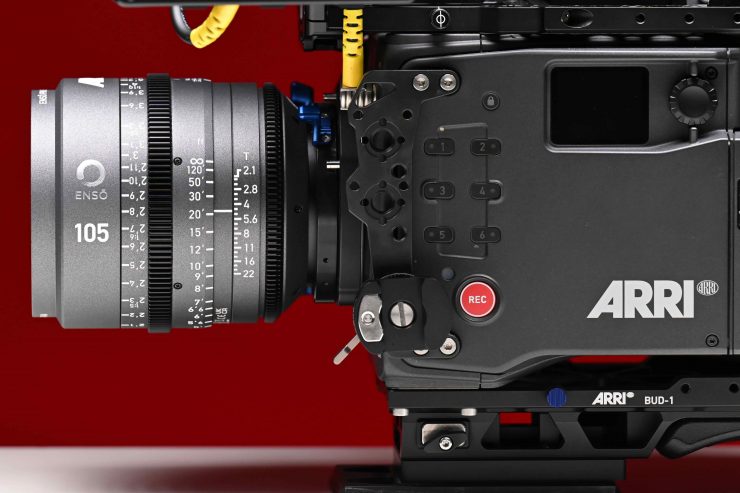
Lens metadata is useful for many applications. It provides camera focal length, focus distance and iris data necessary to reproduce a camera setup for a reshoot. Visual effects compositors use metadata to match perspective when compositing digital elements into a live action scene. Metadata fed to a mixed reality engine facilitates the generation of photo realistic digital backgrounds in real time.
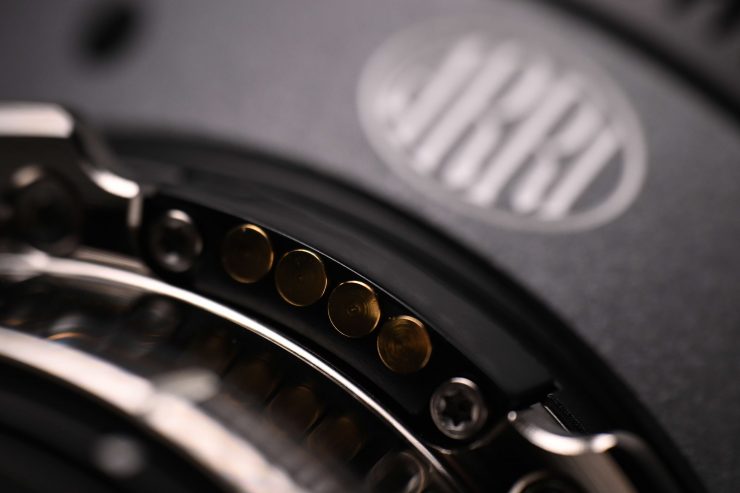
ARRI Ensō lenses employ the ARRI LDS-2 protocol. Unlike LDS-1, LDS-2 is extensible to meet the changing needs of the motion picture industry and is flexible enough to be used on any camera. If a Ensō lens is mounted to a camera that only supports the /i protocol, LDS-2 will detect the new
protocol and automatically output /i compliant metadata.
Occasionally, ARRI will release LDS-2 software updates that add functionality. Your nearest ARRI Service Center can update your lens as necessary.
Build Quality
The Ensō lenses are beautifully made. These are every bit as well made and manufactured as the Signature Primes.
The attention to detail is very evident. All the engravings and markings are exquisite.
Of course, this is very subjective, but the lenses are aesthetically very beautiful and you can see the level of craftsmanship.
ARRI went to great lengths to also get the Ensō logo engraved on the lenses. Getting this brush stroke that is usually done during calligraphy replicated on a metal surface wasn’t easy.
Even the front lens caps and the rear caps feature the Ensō logo.
The lens barrels are a metallic matte grey color.
The lenses are certified to work in conditions ranging from -20 C to +55 C. The lenses also have no external moving elements so they are less likely to have humidity issues or dust getting inside.
Hard Cases
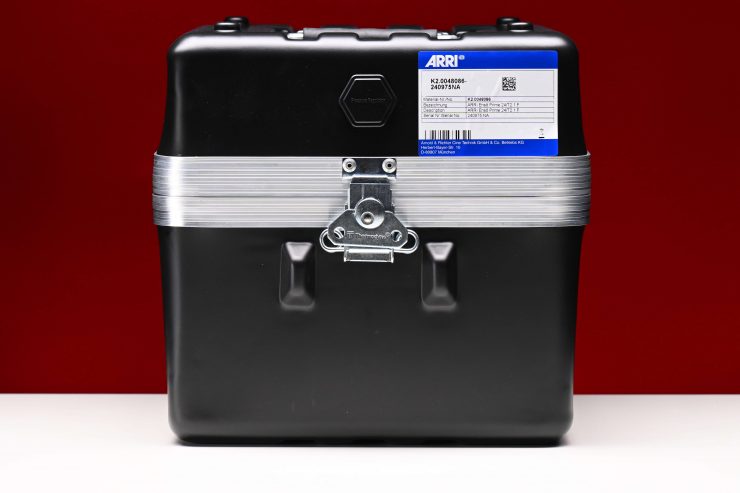
The lenses come in plastic hard cases that are also very unique. ARRI is working in Germany with a company that is doing a lot of cases for the airline industry, including Lufthansa, Swiss Airlines, Austrian Airlines, and soon also for the military. These boxes are ATA 300 certified. This is a certification and standard from the aircraft airline industry, so you can easily just place a FedEx label on it and you can ship it. These cases were tested to hold up to the very rough handling of the airline industry.
Close Focus Ability
One of the great features of the Ensō series is their close focus ability. They feature a true 1:4 magnification ratio and this certainly sets them apart from the competition.
The 1:4 magnification ratio allows you to focus very close to subjects.

Above you can see how the magnification ratios differ between the ARRI Ultra Prime, Signature Primes, and the Ensō series.
Above you can see some shots where I focussed primarily on trying out the close focus abilities.
Above you can see the miniature Gotham world by Satoshi Araki.
He creates amazing creations and if you want to see more of his work you can follow him on Instagram @satoshi_araki_jokeishi.
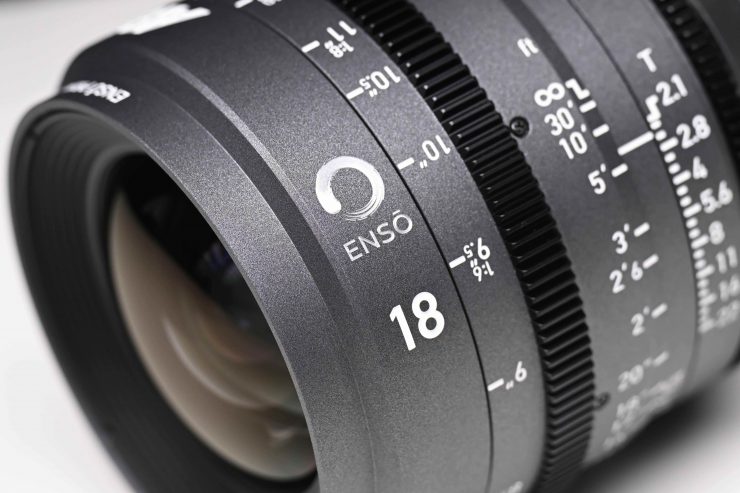
With the 18mm T2.1 for example, you can focus just 8.4cm / 3.3″ from the front of the lens. Even the 105mm T2.1 can focus 46.9cm / 18.46″ from the front of the lens.
| CLOSE FOCUS (From sensor) | |
| 10.5mm T2.8 | 27cm / 10.5″ |
| 14mm T2.5 | 27cm / 10.5″ |
| 18mm T2.1 | 20cm / 8″ |
| 21mm T2.1 | 22cm / 8.5″ |
| 24mm T2.1 | 23cm / 9″ |
| 28mm T2.1 | 23cm / 9″ |
| 32mm T2.1 | 25cm / 10″ |
| 40mm T2.1 | 28cm / 11″ |
| 47mm T2.1 | 32cm / 12.5″ |
| 58mm T2.1 | 36cm / 14″ |
| 75mm T2.1 | 43cm / 17″ |
| 105mm T2.1 | 59cm / 23.5″ |
| 150mm T2.1 | 77cm / 30.5″ |
| 250mm T2.8 | 1.3m / 4’2″ |
| 250mm T2.8 & 1.4x Extender | 1.3m / 4’2″ |
| 250mm T2.8 & 2x Extender | 1.3m / 4’2″ |
As you can see, all of the focal lengths have exceptionally good close focus abilities.
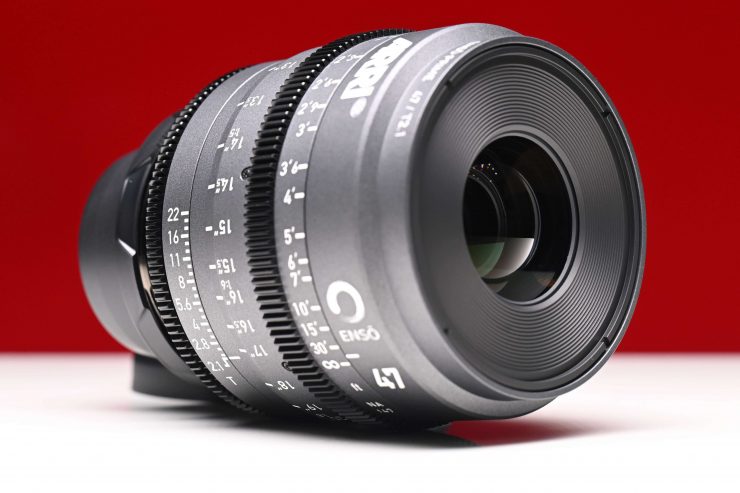
Again, as a comparison, let’s see how the ARRI Ensō 47mm T2.1’s close focus ability compares to competing lenses.
| CLOSE FOCUS (From sensor) | |
| ARRI Ensō 47mm T2.1 | 32cm / 12.5″ |
| ARRI Signature Prime 47mm T1.8 | 45 cm / 17.72″ |
| Cooke 50mm T2.0 S7/i Full Frame Plus | 50 cm / 19.7″ |
| Cooke 50mm Panchro/i Classic T2.2 | 38 cm / 15.0″ (from front of lens) |
| Cooke S8/i Full Frame Plus 50mm T1.4 | 50.8 cm / 20″ |
| ZEISS Supreme Prime 50mm T1.5 | 50 cm / 19.7″ |
| ZEISS CP.3 50mm T2.1 | 45 cm / 18″ |
| Angenieux Optimo Prime 50mm T1.8 | 39.6 cm / 15.6″ |
| Leitz Cine Prime 50mm T1.8 | 48.3 cm / 19″ |
| Sigma 50mm T1.5 FF High-Speed | 40 cm / 15.7″ |
| Sigma 50mm T2.5 FF Classic Cine | 40.6 cm / 16″ |
| Tokina Cinema Vista 50mm T1.5 | 48 cm / 18.9″ |
| Tokina Cinema Vista-P 50mm T1.5 | 48 cm / 18.9″ |
| Canon 50mm Sumire Prime T1.3 | 45.7 cm / 18″ |
| DZOFilm Arles 50mm T1.4 FF/VV | 50 cm / 19.7″ |
As you can clearly see, the Ensō series outperforms all of these lenses by quite a considerable margin.
Their close focus ability makes them incredibly versatile and they allow you to get shots that you couldn’t otherwise get unless you were using macro lenses or diopters, etc. The problem with most macro lenses is they don’t perform as well at infinity as they do at close distances.
If you want to get even closer focus you can use diopters or extension tubes.
95mm Front Diameter
Most of the Ensō series features a 95mm front diameter, which is the same as the Ultra Primes. This is smaller than the 114mm front diameter of most of the Signature Zooms. The only lenses in the series that don’t have a 95mm front diameter are as follows:
- 10.5mm T2.8 (134mm)
- 14mm T2.5 (134mm)
- 250mm T2.8 (114mm)
With the 10.5mm and 14mm, ARRI provides a 134mm to 156mm adapter. The reason for this is that if you are shooting Super 35, you can stay with the 134mm diameter front ring, but if you are shooting large format, you will have to use the 156mm and the larger 6×6 filters.
Ensō Rear Elements
The Rear Elements that can be used with the Ensō primes were designed to give the lenses an alternative look. By using them you can change some of the lenses’ characteristics, while still retaining center sharpness. Depending on the strength of the Rear Element the effect can be subtle or more pronounced. The main purpose of the elements is to give an alternative look which ARRI describes as more of a vintage look.
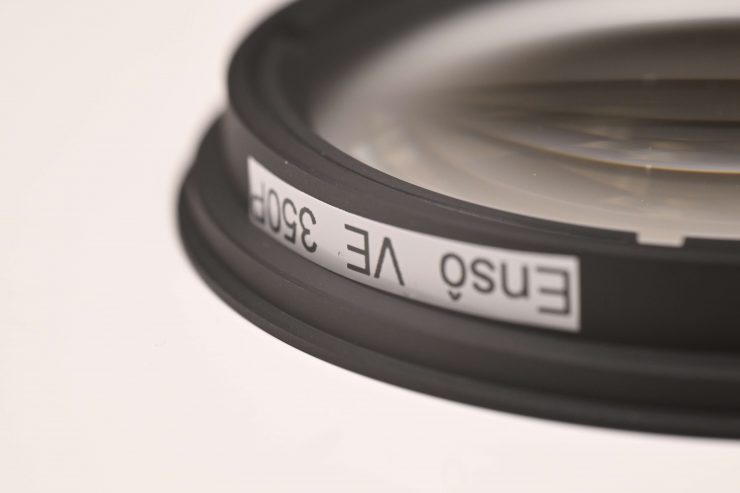
The Ensō Rear Elements work in a similar way to the magnetic Impression Filters that can be used with the Signature Primes and Zooms. While they are similar to the Impression Filters, they are not interchangeable and you can only use them with Ensō primes.
| Ensō Vintage Elements | Focal Length multiplier | Focal Length multiplier [%] | Exposure change (stops) | Open aperture for T2.1 |
| Ensō VE 350P | 0.934 | 6.6 | 0.20 | 1.96 |
| Ensō VE 200P | 0.959 | 4.1 | 0.13 | 2.01 |
| Ensō VE 100P | 0.979 | 2.1 | 0.06 | 2.06 |
| No Filter | 1 | 1 | 0 | 2.1 |
| Ensō VE 100N | 1.03 | 3 | -0.08 | 2.16 |
| Ensō VE 200N | 1.063 | 6.3 | -0.17 | 2.23 |
| Ensō VE 350N | 1.099 | 9.9 | -0.28 | 2.31 |
Now, the rear elements will slightly change your focal length and aperture. Above you can see a table that shows you by how much. This is something you need to factor in when using them.
Now, one of the biggest differences between the Ensō Rear Elements and the Impression Filters is that the Rear Elements are electrically coded and they will send metadata to the camera so that the camera knows what is being used on the lens. This is very handy in post-production and also in virtual production environments.
ARRI is also working on compensation software for its camera and the Hi-5 so that they can receive compensated lens data because the Rear Elements (depending on which ones are used) can slightly affect the light transmission and the focal mark accuracy. The Rear Elements and Impression Filters act like either a very weak focal reducer or extender, depending on which one is being used. This is because they aren’t flat pieces of glass, they are optical elements. They, therefore, slightly shorten or extend the focal length by around 8-10%. The T-stop also increases or decreases by around 1/4 of a stop.
The Ensō Rear Elements were designed to keep more of the original characteristics of the lens. They maintain center sharpness while having more of a fall-off out towards the edges of frame. This is a direct result of feedback that ARRI got from users of the Impression Filters for the Signature Primes and Zooms where users wanted more of a steeper fall-off toward the corners out toward the edges of frame.
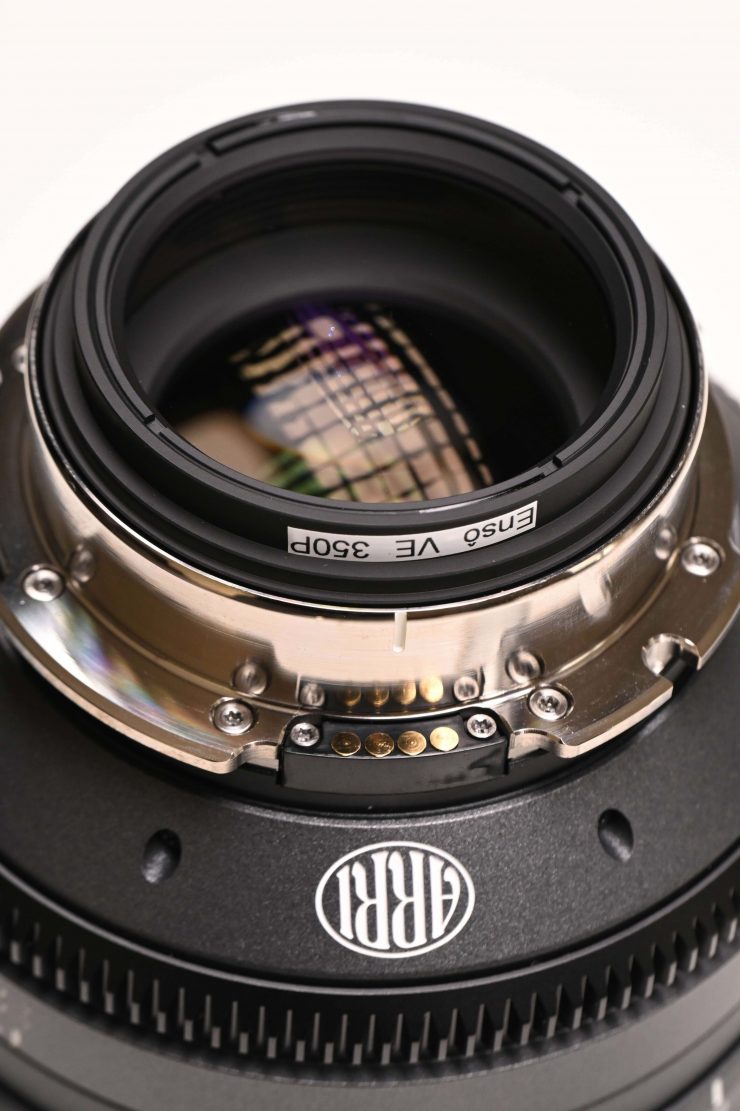
Just like the Impression Filters, they are available in both Positive and Negative versions. With the Positive and Negative elements you can achieve a softer out-of-focus area behind the focal plane, which is often associated with a kind of classical Hollywood effect where the background is very soft.
The Positive strength Ensō Rear Elements produce ‘bauble’ bokeh in the background, where out-of-focus highlights are bright in the middle and blurry at the edges. Bokeh at the edges of the image also becomes more stretched and pointier.
Conversely, the Negative strength Ensō Rear Elements have the opposite effect to positive filters. In the background, ‘donut’ bokeh gives out-of-focus highlights a bright ring around the edges, making them appear sharper.
The Rear Elements allow you to tailor your look very quickly and you don’t need any tools to replace them. You could choose a filter for a job rather than constantly throwing filters in and out between different scenes or shots, but it’s really up to the end user.
There are 6 different versions and just like with the Impression Filters, they all come in a box with the required tools, and the Negative strength versions, also come with the required shims.
The 6 Rear Elements are:
- VR100P
- VR100N
- VR200P
- VR200N
- VR300P
- VR300N
These will come in the box with the first 6 lenses if you buy the set.
I personally prefer the Rear Elements that come with the Ensō lenses to the Impression Filters, because I find them easier to focus with as the center is sharper and they have less haze in the center.
Above you can see some examples of how they change the look. Please keep in mind that these were done on the ALEXA 35 and on a full frame camera the results will be even more pronounced out toward the edges of frame. In saying that I still found that they worked well on the ALEXA 35.
At least in my opinion, the Impression Filters have a more uniform look across the whole lens whereas the Ensō Rear Elements really do change the character of the lens and it doesn’t just feel like you’re putting diffusion on the front. In saying that, I think you could use diffusion and the Rear Elements together to create some interesting looks. The Rear Elements also don’t change the contrast.
The Rear Elements produce what I would call a more three-dimensional effect as they change the background, the foreground, and the edges of the image instead of having a global effect like a soft filter which makes everything soft. I really like the Rear Elements and they make the lenses incredibly versatile.
What is also very interesting this that ARRI also gives you an empty filter holder so you can also make your own. There are also three different retaining rings one for very thin material like gel, and then it goes all the way up to glass elements of a thickness of 4.8mm, which is really very thick. You could do something crazy like like putting in a polycarbonate material that is used for plastic eyeglasses into the holder that has no coating. That would lower the contrast and provide a completely different look.
Third-party filter companies will also be able to come up with their own filters.
When ARRI announced the Signature Primes, the Impression Filters weren’t announced for another 2 years. However, the Ensō Rear Elements, are available straight away and I think ARRI’s strong messaging is that they really are an intricate part of why you would choose the Ensō’s over other options.
While I liked what ARRI did with the Impression Filters, the Ensō Rear Elements are a big improvement, especially with the ability to send metadata to ARRI cameras and the Hi-5.
Having the ability to automatically adjust the metadata on the Hi-5 so that you have the correct focus marks and don’t need to shim the lenses (at least with the Positive Elements) will be welcome news to an AC. You would need to shim with the Negative Elements to have the correct focus marks on the barrel, but I don’t really think many people will go to that extent particularly if they’re taking them in and out. It will also slightly compensate the T-stop and focal length so that you’re 100 percent accurate with what the lens is doing with that extra element in there as well.
This ability will be available in the Hi-5 when the lenses are launched, and it will come to ARRI cameras soon after.
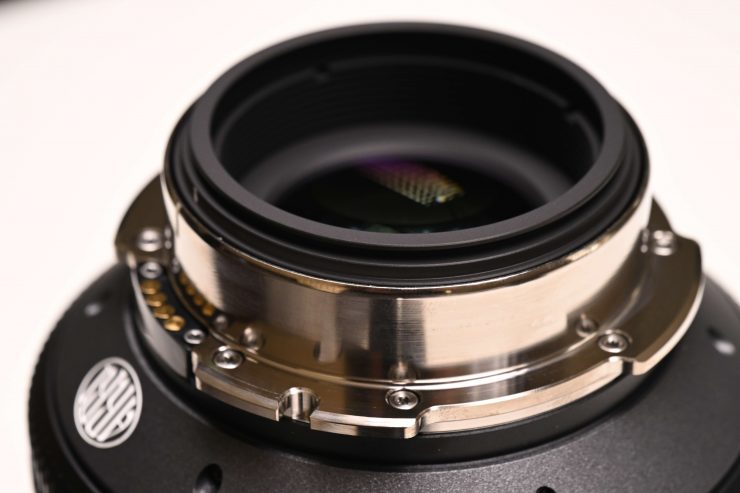
A Magnetic Rear Filter Holder is included as a standard part with every Ensō lens.
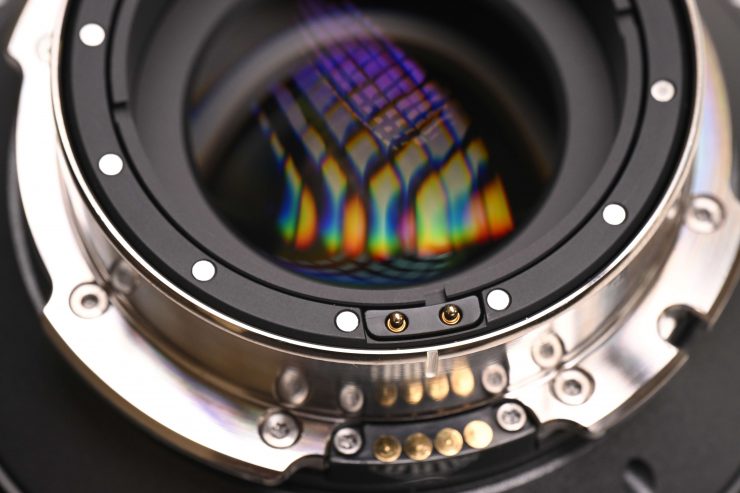
If you remove the Magnetic Rear Filter Holder you can see the magnetic attachments on the lens.
As you can see the Vintage Rear Elements are quite a bit thicker than the standard (empty) Magnetic Rear Filter Holder.
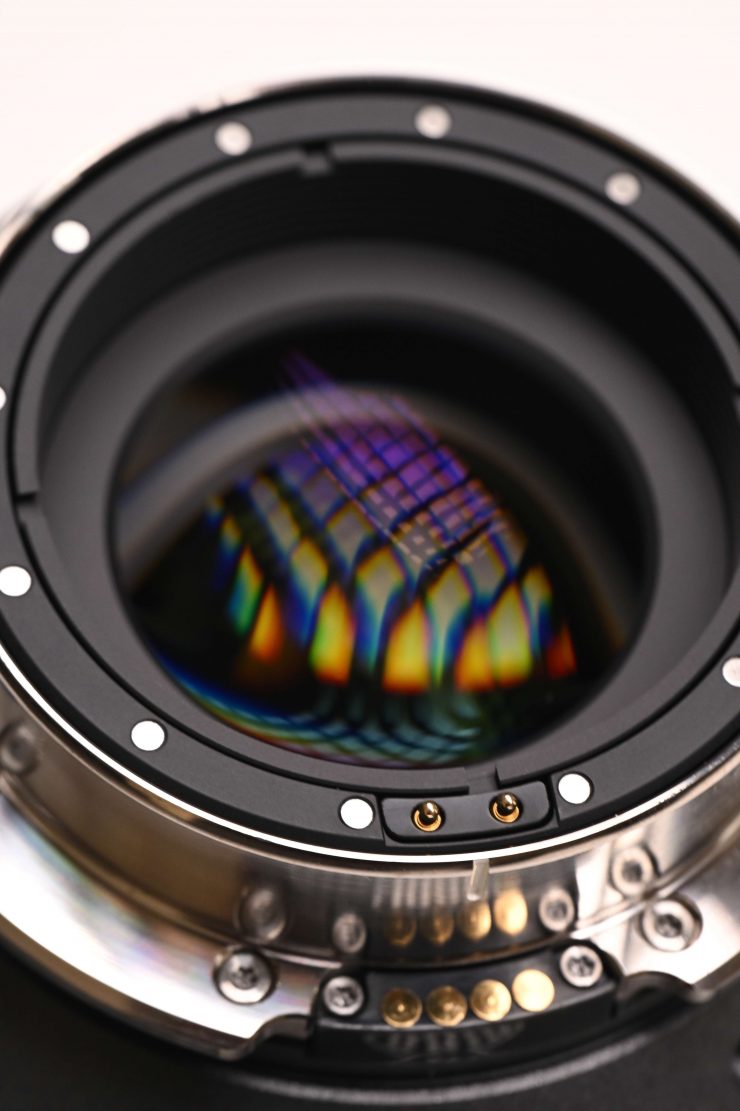
Magnetic Rear Filter Holder removed 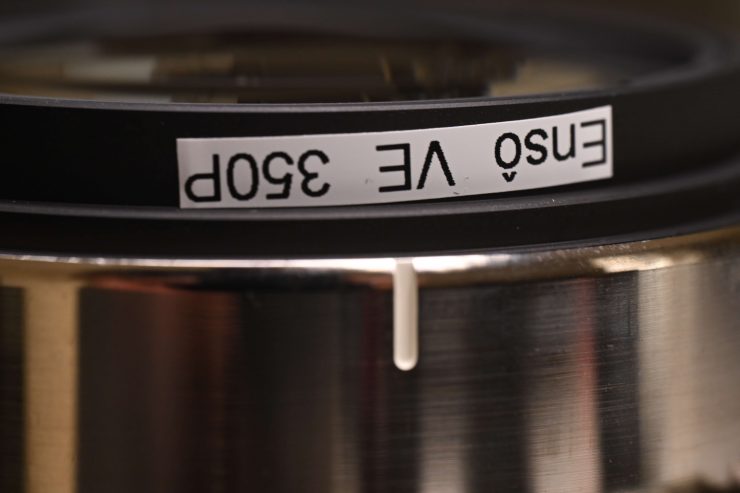
You attach an accessory element to the lens by placing the magnetic face of the accessory against the rear of the lens until it sits firmly. A witness mark on the accessory may be used in conjunction with a witness mark on the lens to orient the accessory to one of 12 “click stops”. Rotate the accessory by hand to the desired orientation.
You can remove an attached accessory by lifting it gently from the rear of the lens. No tools are necessary.
You can also use a variety of other accessories that can be attached to the rear of the lens using the incorporated magnetic holding system.
The Magnetic Rear Filter Holder incorporates a groove that will hold a small rubber band. Place a net across the face of the holder and gently stretch a rubber band over the net to fit into the groove. Once the rubber band is in place, gently tighten the net as desired and trim the excess. There is a witness mark on the holder that may be used to orient the weave of the net to the lens. A size 12 rubber band yields optimal results.
The lens is designed to be used with an accessory attached, even if it is an empty Magnetic Rear Filter Holder. Be careful not to touch the rear lens when attaching or removing accessory components of the rear part.
When using a net attached to the Magnetic Rear Filter Holder, take precautions that neither the rubber band or the net are blocking or damaging the LDS-2 contacts, the LPL mount or the image sensor on the camera.
I tried out a Kinefinity MAVO EDGE 6K with an LPL Mount, however, I couldn’t use the Magnetic Rear Filters due to clearance issues. I am not sure if this is an issue with just this specific mount or whether you could potentially run into issues with other third-party LPL mounts as I haven’t been able to try any other options that are available.
Markings
The markings are easy to see and as you would expect, they all line up correctly.
Cleaning
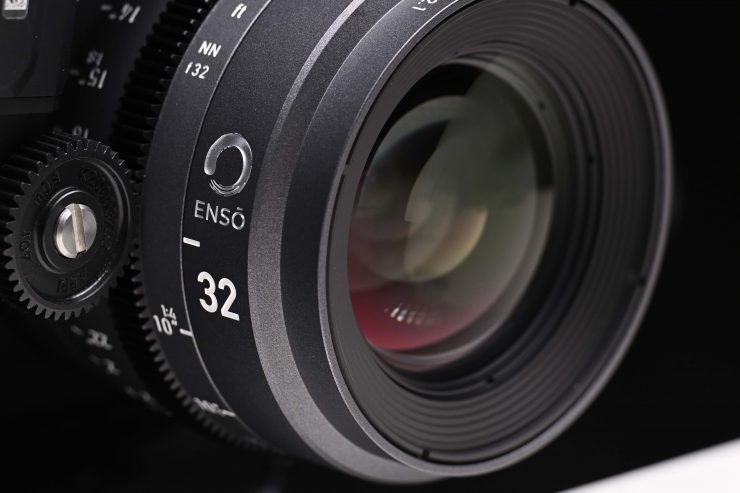
Below is what ARRI recommends when cleaning the lenses.
- Avoid touching optical surfaces!
- Apply blown air to optical surfaces prior to dusting. Deionized air will improve dusting efficiency if particles or optical surfaces are electrostatically charged.
- Avoid compressed air from cans as droplets of propellant may contaminate optical surfaces and prove difficult to remove. Use oil-free compressed air with less than 2 atm of pressure and equipped with a particle filter in a clean environment.
- Avoid wiping optical surfaces with a dry tissue or cloth. Use a damp cloth with an appropriate cleaning agent (see below).
- Use clean, lint-free, and soft single-use paper-based optics cleaning tissues/pads or ARRI Optics Cleaning Cloth (Small 170 x 150mm, Order Number: 50.0019066; Large 14.6” x 17.7”, Order Number: K2.0016922).
- Avoid abrasive particle contamination of your cleaning supplies and cloths (e.g. by sand).
- Always wipe gently in a single direction and take a new tissue for each stroke if using disposable tissues.
Lens Breathing
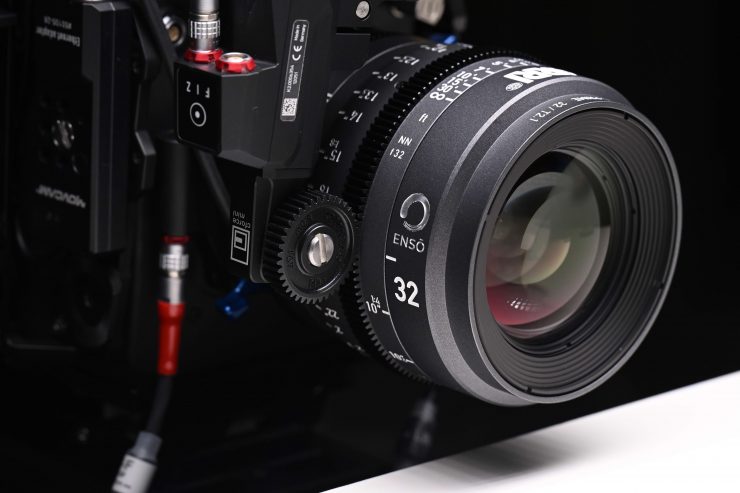
I tested out the lenses by doing large focus throws with a motor, and the lack of breathing is very impressive. There is a tiny bit on the 18mm, but the 24mm and 32mm have the least amount of breathing I have ever seen on cine lenses.
Above you can see my lens breathing tests.
No lens technically has zero breathing, but very good cinema glass has such minimal amounts that it is virtually impossible to see. What you will normally see is some perspective shift which is normal when refocusing a lens.
Image shift is the change in location of a fixed point after a focus rack. It should be in the same spot after you rack focus.
Perspective shift is the focal length of the lens being modified by the movement of the optics. A slight change in focal length may happen if there is a floating element that moves and is not properly corrected for in the design. Certainly, the great majority of lenses have this issue. It’s also tenths of a mm so not overly noticeable.
Focus breathing is a change in image size so the size of the object will get larger as it moves out of frame. That is reproduction size.
In summary, perspective shift is the effective focal length change (angle of view change) and focus shift is the reproduction size of the object changing as focus moves. Think of it like Macro. A macro lens can be 1:1 life-size reproduction but as you focus it can change the reproduction size. That is focus shift from intentional breathing design. The angle of view is not overly affected in that case because it is flat field focus. On spherical lenses, the angle of view does change slightly as you focus rack thus making for perspective/angle of view shift.
Sharpness
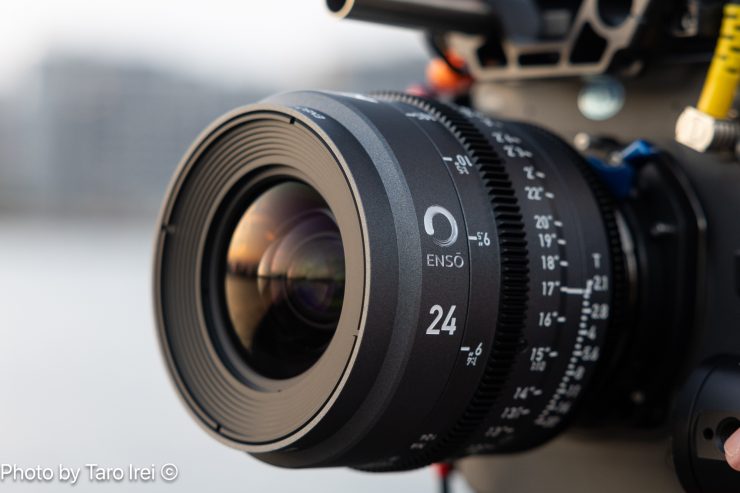
The lenses are very sharp and they resolve a lot of fine detail. While they are sharp, they don’t have an in-your-face overly sharpened look. The edge sharpness is also very impressive, but please bear in mind I was testing these on the ALEXA 35 and not a full frame camera.
Above you can see how all of the focal lengths perform at various T stops. All of the tests were shot using the ARRI Alexa 35 in its 4.6K sensor mode shooting 4K DCI.
Now, the reason I always use this robot is that it has very fine details on it and it is very easy to see if something is sharp or not. While there is nothing wrong with shooting charts, we don’t shoot charts for a living so I prefer to use this method. Charts are arguably more useful for lens technicians. I always use this same robot, so you can go and check other lens tests I have previously done to see any type of comparison.
18mm T2.1
The 18mm T2.1 has very good center sharpness when used wide open, especially for a wide focal length. Stopping down does make it slightly sharper, but there isn’t a big difference between T2.1 and T5.6. The edge sharpness isn’t as good as the other focal lengths, but that doesn’t come as any surprise.
The lens resolves a lot of fine detail.
24mm T2.1
The 24mm T2.1 has very good center sharpness, even when used wide open. It does start to improve slightly as you start stopping the lens down. Edge sharpness is also very good.
32mm T2.1
The 32mm T2.1 lens performs exceptionally well and it is sharp when used wide open. Even when you crop in 300% on a 4K image the level of detail is extraordinarily good. The edge sharpness is also impressive. The lens resolves a lot of fine detail.
I personally thought that the 32mm is the stand-out lens in this series. Well, at least from the focal lengths I have tested.
47mm T2.1
Just like the 32mm, the 47mm is very sharp and shows a lot of fine detail. At T2 and beyond it is very sharp.
The edge sharpness is pretty good, but not quite as good as the 32mm.
75mm T2.1
The 75mm T2.1 has a very similar performance to the 47mm T2.1.
105mm T2.1
The 105mm T2.1 is right up there with the 32mm and 24mm when it comes to sharpness and resolving fine detail.
The edge sharpness is still decent, but not as good as some of the other focal lengths.
Thoughts
All of the lenses performed exceptionally well in these tests and what stood out for me is just how much fine detail they can resolve.
You can use these lenses wide open at T2.1 without sacrificing sharpness or detail.
Bokeh
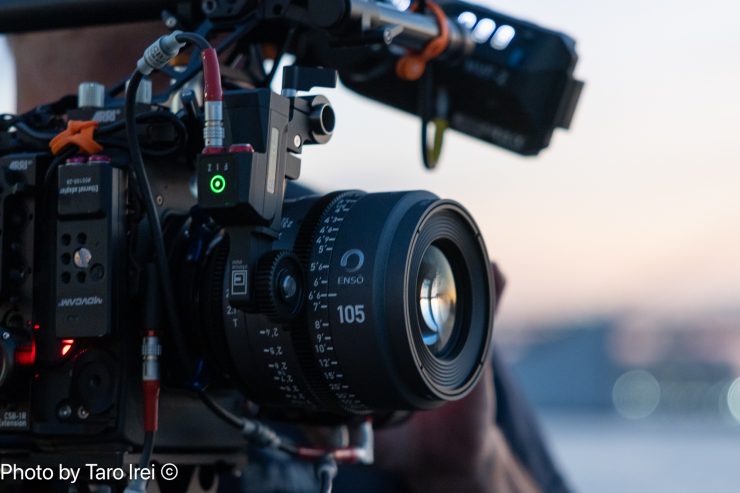
The lenses have beautiful bokeh with no onion rings or color ringing. Wide open the bokeh is nice and round and it has a defined appearance while still being soft.
The lenses also have a really nice soft fall-off that helps to create a more 3-dimensional image that isn’t flat.
Lens Flare
The Ensō series all have similar flare characteristics when it comes to color, but the look does differ slightly from lens to lens. The lenses do tend to produce a bit of halation around strong light sources when used wide open, but in general, the coatings being used mean that the lenses still retain a good amount of contrast.
The flare color is predominantly blue, however, there is a tiny bit of green and purple.
The 18mm T2.1 when used wide open doesn’t have strong flare characteristics. The flare is more interesting when stopping the lens down.
The 24mm T2.1 has nice flare characteristics with slight halation. I liked the look of the flare when you stop the lens down as it produced some interesting effects.
The 32mm T2.1 has nice flare characteristics with slight halation. It is very similar to the 24mm T2.1.
The 47mm T2.1 when used wide open has a bit of halation and some nice subtle veiling.
The 75mm T2.1 has a reasonable amount of halation. If you stop the lens down the flare has a nice amount of softness to it.
The 105mm at T2.1 does have some veiling, but I quite like it. It isn’t over the top.
Lens flare is very much a personal thing and whether you like the flares these lens produces only you will know.
Usability
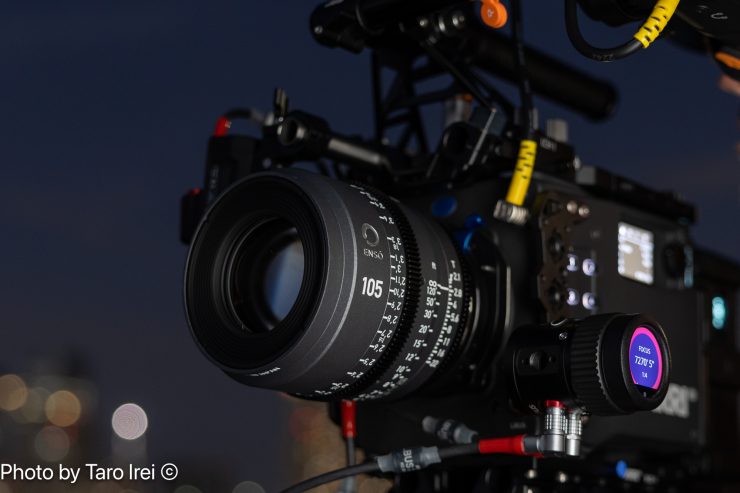
The lens’ focus and iris rings are beautifully weighted and they have consistent resistance throughout the whole focal range. There is no noise or inconsistency whjen turning the focus or iris rings like you often find on more ‘affordable’ cine primes. Again, attention to detail and consitency matters.
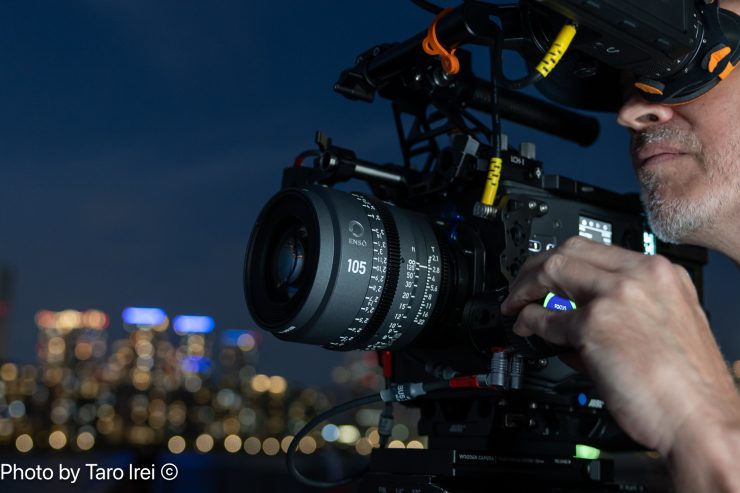
I like the low weight and relatively small size
Unfortunately, I didn’t have access to a Mini LF during my limited time with the lenses, so I could only try them on the Alexa 35.
Due to scheduling issues, the shoot I was trying to do with the lenses in time for the launch got moved back a few days. I will post that footage at a later date and include it in this article.
Color Tone & Look
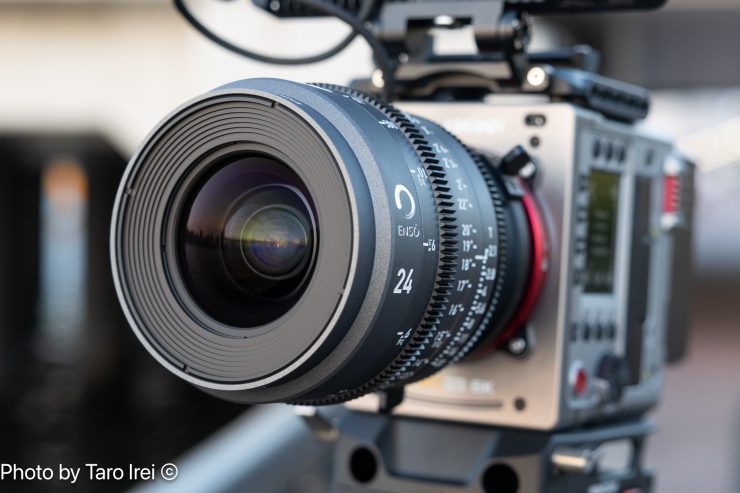
The lenses do lean quite warm, and I would say that they are a little bit warmer than the Signatures and they have slightly more contrast.
The Ensō series features a high-performance multi-coating and not a single coating which gives you additional flaring, as ARRI wanted to avoid that.
They are sharp in the center but they’re not too sharp. They have a lot of detail and they render backgrounds really, really softly. They also have very, very minimal chromatic aberration compared to other lenses (almost none unless you really stress the lens.) The other thing that stood out to me is that the breathing is amazingly well controlled. For example, with the 32mm T2.1, I don’t think I have ever seen a lens that breathes less. It is almost as if you are watching something that was done in VFX.
ARRI told me that they had to make some compromises when compared to the Signatures as they are a more affordable product, however, I prersonally found those compromises to be very minimal. You will see a steeper fall-off in quality toward the corners, but I would personally say they compare very well to other lenses in the 10,000-15,000 euro price range.
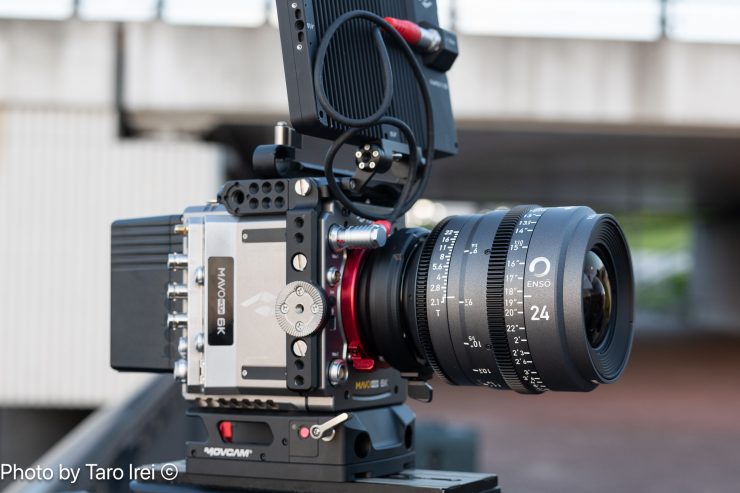
These are not vintage lenses or lenses with very low performance. They have been designed to meet the performance of modern sensors now and also what comes in the future.
The nice aspect about the Ensō series is that you are not locked into a ‘look’. By utilizing the Rear Elements, you can tailor the lenses and arguably create a look that might be very similar to an old Super Speed or Cooke lens. This flexibility is what a lot of DPs are looking for.
Price & Availability
The first 6 lenses in the ARRI Ensō Prime series are now available for €10,900 each. The 6 lenses are:
- 18mm T2.1
- 24mm T2.1
- 32mm T2.1
- 47mm T2.1
- 75mm T2.1
- 105mm T2.1
ARRI will also initially be selling the 6 lenses as a set with the Vintage Elements for €79,300 / $86,940 USD. These will come in two hard cases, with 3 lenses in each case.
The Ensō Vintage Elements Kit is also available for $6,650 USD.
Some of the specialty lenses such as the 10.5mm T2.8, 14mm T2.5, and 250mm T2.8 will be more expensive. The 10.5mm will be around €19,900, and the 250mm T2.8 that comes with the 1.4x and 2x extender will be around €25,000.
Even though these are more affordable products for ARRI, they are still expensive and would be a considerable investment, especially for an owner-operator.
All of the focal lengths are expected to be shipping within a year of launch.
Price Compared to the competition
As the first 6 lenses in the Ensō series are all the same price, I will use the 47mm T2.1 as a comparison against other options that are available.
| PRICE | |
| ARRI Ensō 47mm T2.1 | €10,900 ($11,935 USD) |
| ARRI Signature Prime 47mm T1.8 | $27,340 USD |
| Cooke 50mm T2.0 S7/i Full Frame Plus | $25,200 USD |
| Cooke 50mm Panchro/i Classic T2.2 | $14,000 USD |
| Cooke S8/i Full Frame Plus 50mm T1.4 | $34,650 USD |
| ZEISS Supreme Prime 50mm T1.5 | $20,625 USD |
| ZEISS CP.3 50mm T2.1 | $4,390 USD |
| ZEISS CP.3 XD 50mm T2.1 | $5,790 USD |
| Angenieux Optimo Prime 50mm T1.8 | $25,600 USD |
| Leitz Cine Prime 50mm T1.8 | $42,500 USD |
| Leitz Cine 50mm T2.0 Summicron-C Lens | $14,900 USD |
| Sigma 50mm T1.5 FF High-Speed | $3,899 USD |
| Sigma 50mm T1.5 Fully Luminous FF High-Speed Cine Prime with /i Technology | $4,499 USD |
| Sigma 50mm T2.5 FF Classic Cine | $4,499 USD |
| Tokina Cinema Vista 50mm T1.5 | $5,999 USD |
| Tokina Cinema Vista-P 50mm T1.5 | $7,499 USD |
| Canon 50mm Sumire Prime T1.3 | $6,910 USD |
| Rokinon XEEN Meister 50mm T1.3 | $5,695 USD |
| Schneider Xenon FF 50mm T2.1 | $3,360 USD |
| DZOFilm Arles 50mm T1.4 FF/VV | $2,149 USD |
In terms of price, the ARRI Ensō is arguably competing with lenses like the Leitz Cine Summicron-C and Cooke Panchro/i Classic.
Specifications
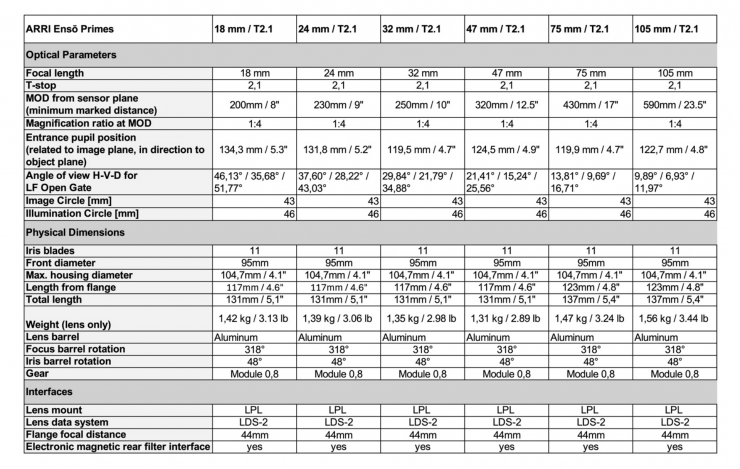
Thoughts

The Ensō primes are a really nice addition to ARRI’s lineup. They are beautifully made and their size and weight make them a lot more manageable than the Signature Proimes.
The lenses are very sharp, but they have a really nice fall-off from in-focus to out-of-focus areas. The bokeh is creamy and smooth and the lenses retain very good sharpness even when used wide open. Like with most modern day cameras I would probably be using them with a filter to take a bit of the edge off.
The close focus ability is fantastic and this makes the lenses infinitely more versatile as a set that can be used for a wide array of applications.
The Rear Magnetic Elements allow you to tailor the lenses and create an array of different looks. I really, really like these filters and I think they are bound to be one of the main reasons to buy the Ensō primes.
The lenses have almost no focus breathing at all, and the focus breathing (or lack of it) with the 32mm is the best I have seen from any lens…period.
There is a lot to like about these lenses, but even though they are a lot more affordable than the Signature Primes, they are still a sizeable investment for any owner/operator. Trying to justify spending a significant amount of money for owner/operators in this current climate is a big call, especially with so many affordable cine prime sets on the market. In saying that, these lenses offer a lot of features that other lenses don’t and they are bound to serve you well for many, many years. I think because of their feature set, they are also going to be a popular rental item.
The Ensō primes really impressed me, and that’s coming from someone who has used and seen a lot of lenses over the years. I am glad ARRI has done something different with the Ensō primes that makes them stand out from other lenses on the market.

